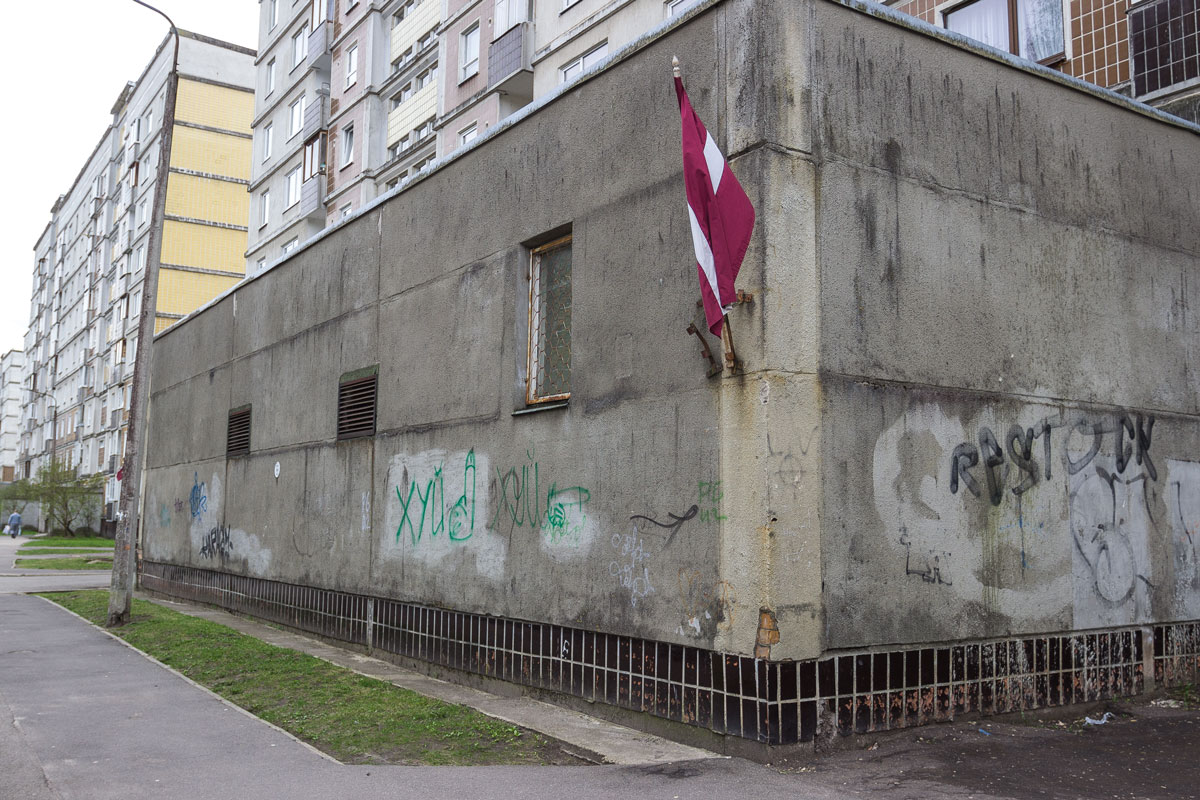Riga
Riga begins with Town Hall Square, where two intricate buildings stand — the house of the Chernogolov merchants. The house was first built 650 years ago and has been reconstructed several times since then. The current version is a modern reconstruction from 2000 after World War II.

The central streets branch out from the square — the Old Riga.
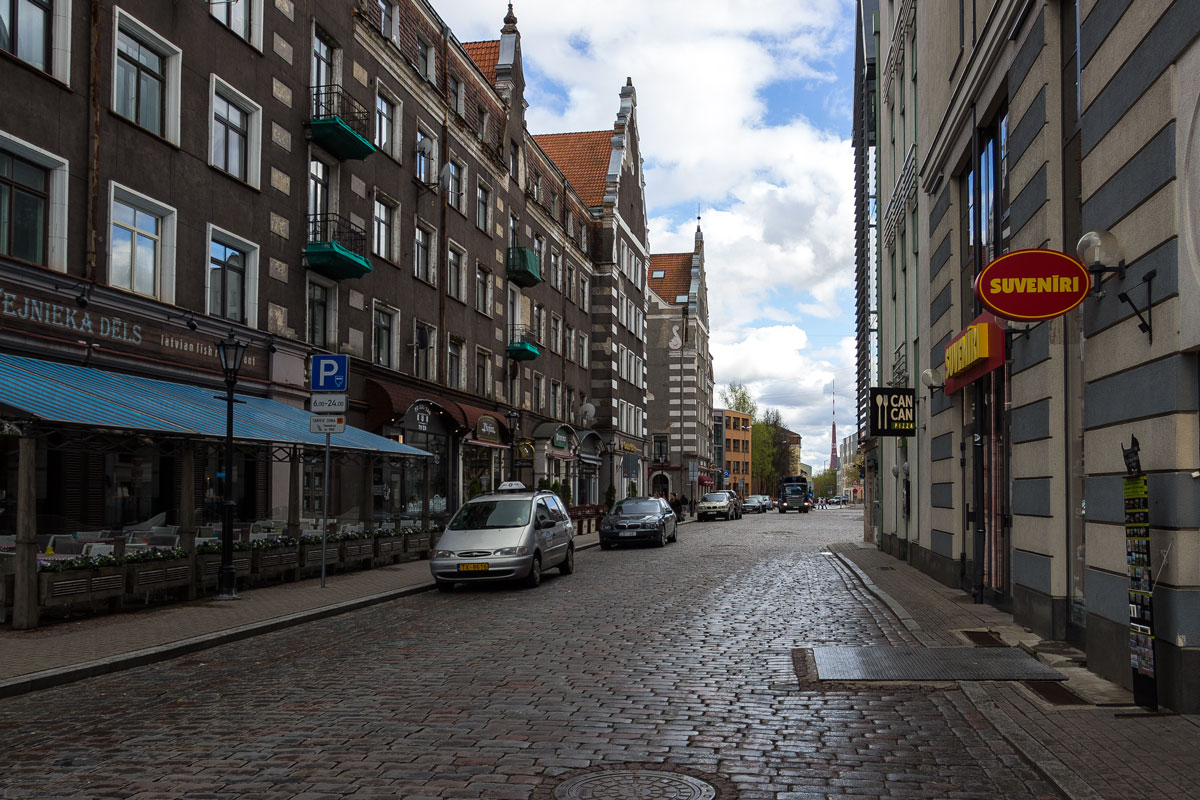
The streets of Old Riga are beautiful. Everything here is paved with cobblestones, and expensive parking helps to keep the center from being overwhelmed by cars.
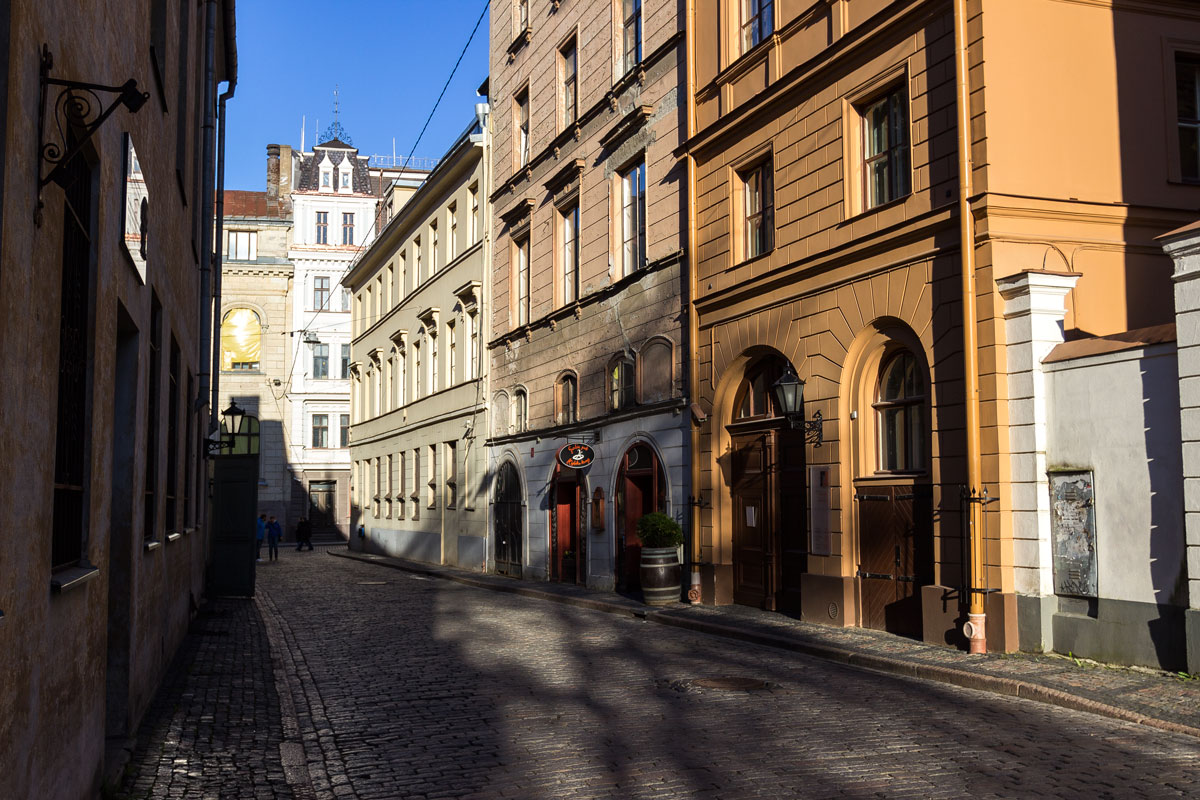

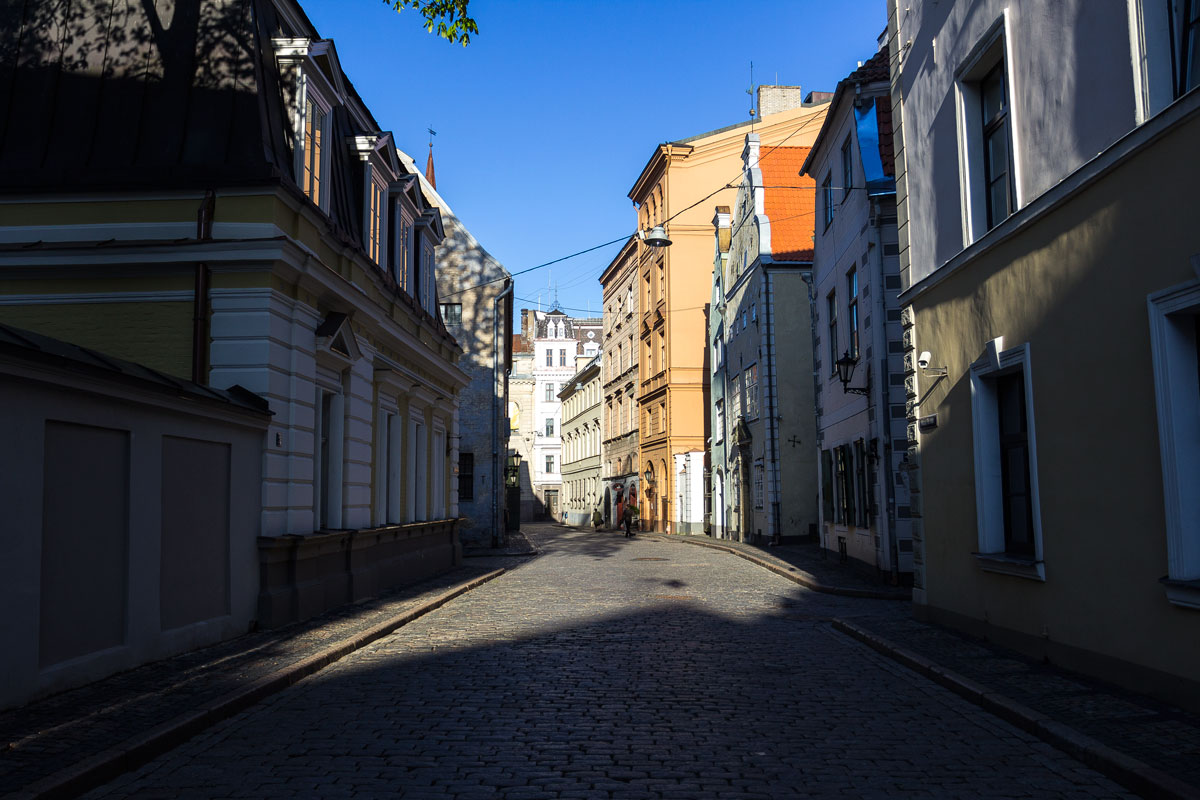
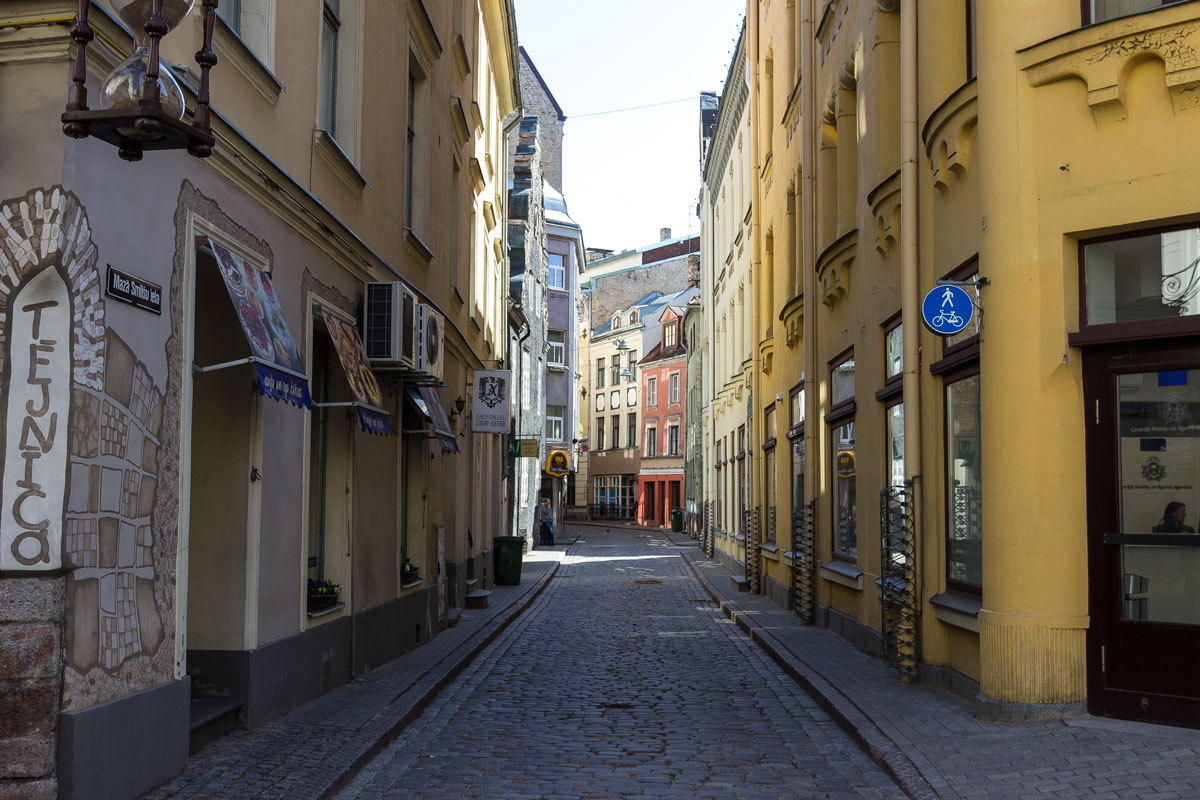
A resident of Riga. The majority of Riga’s inhabitants dress modestly: clothing is often in protective colors; jeans, and boots.
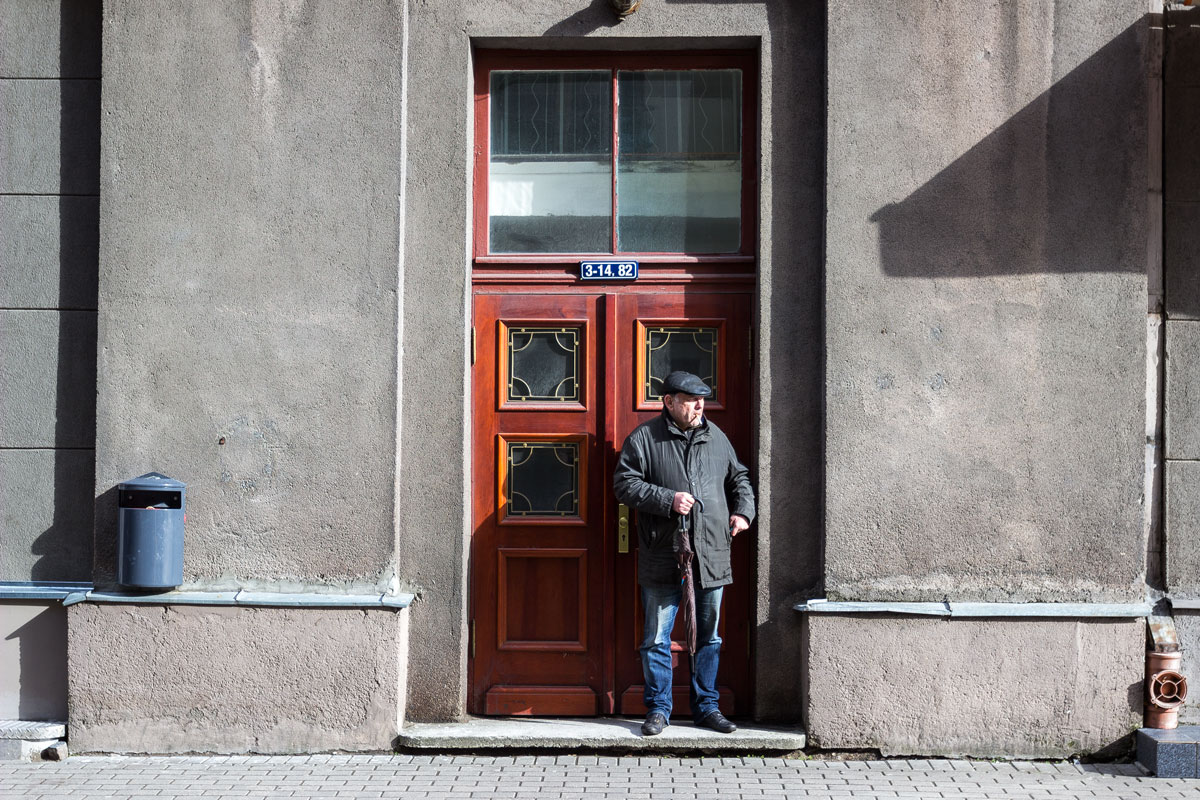
Of course, Latvia is not in Central Europe. After all, the streets are quite modest, although clean.
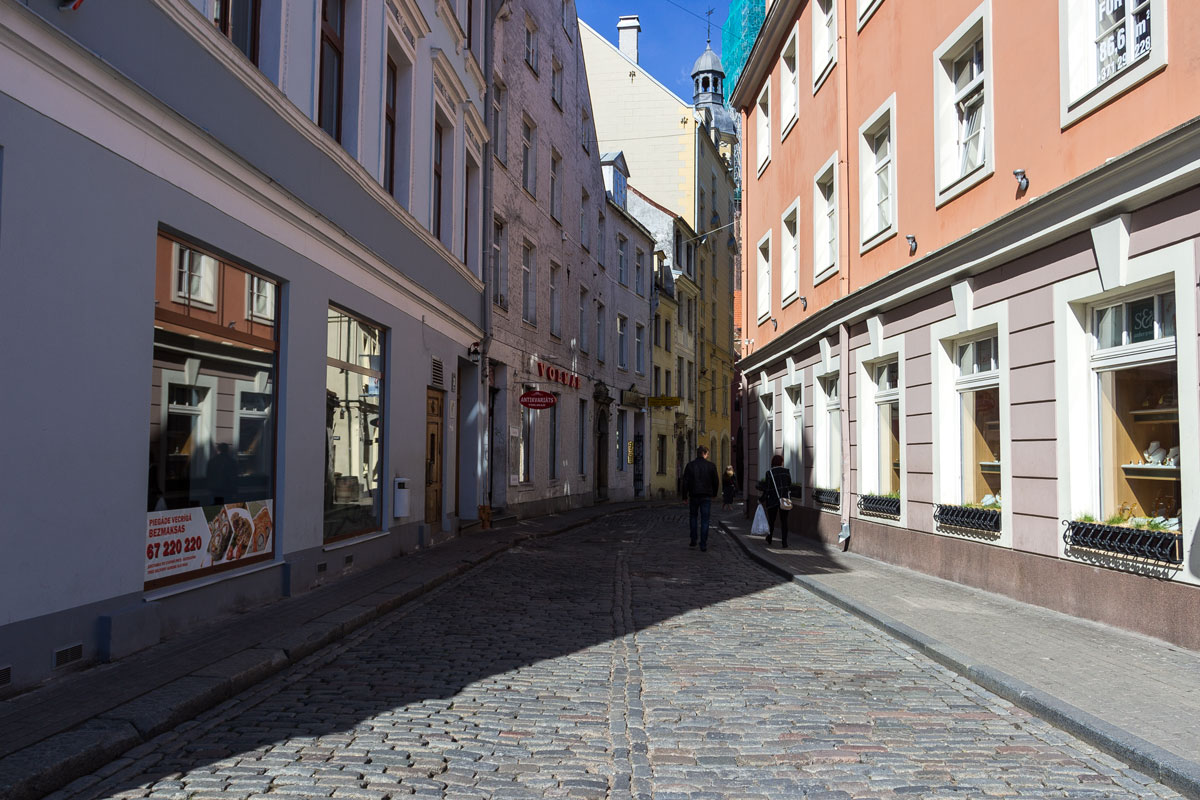
But, on the other hand, cobblestones are laid throughout the center. It’s incomparable to Moscow tiles.
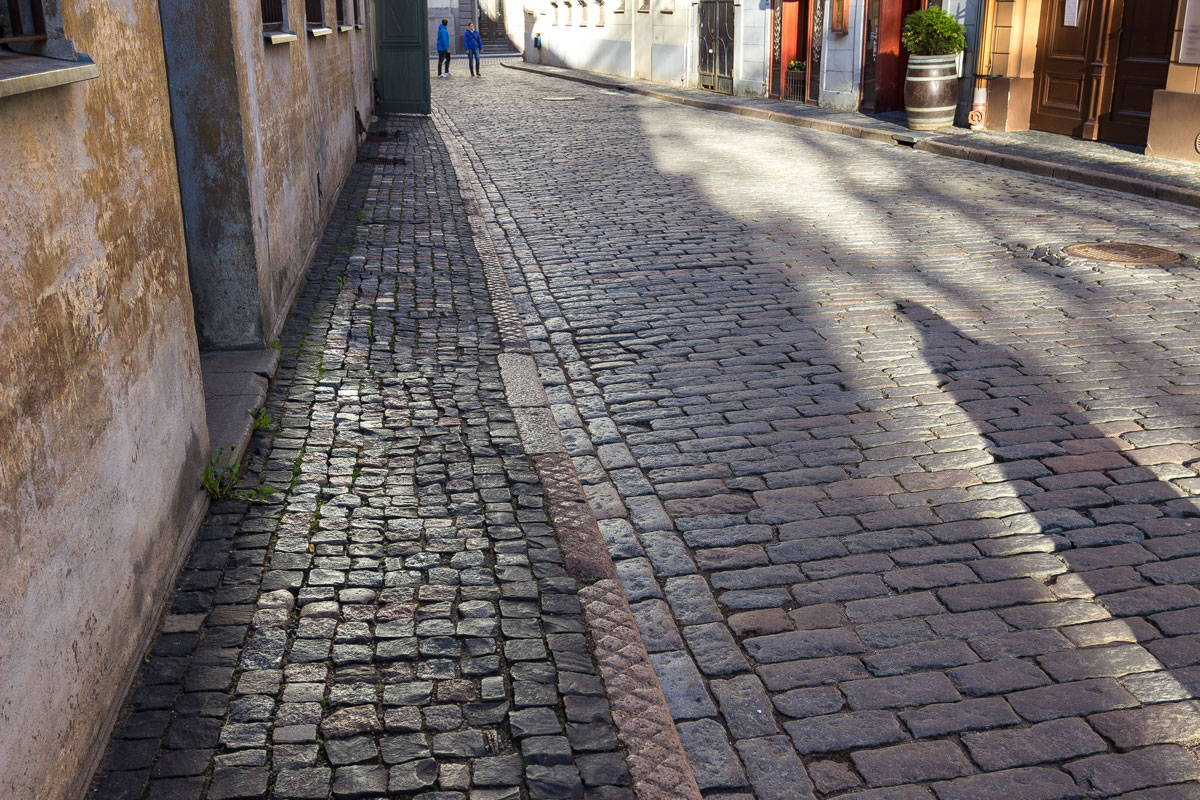
The beauty of the streets sometimes simply astonishes. You don’t expect to see something like this in Latvia, rather somewhere in Denmark or Sweden.
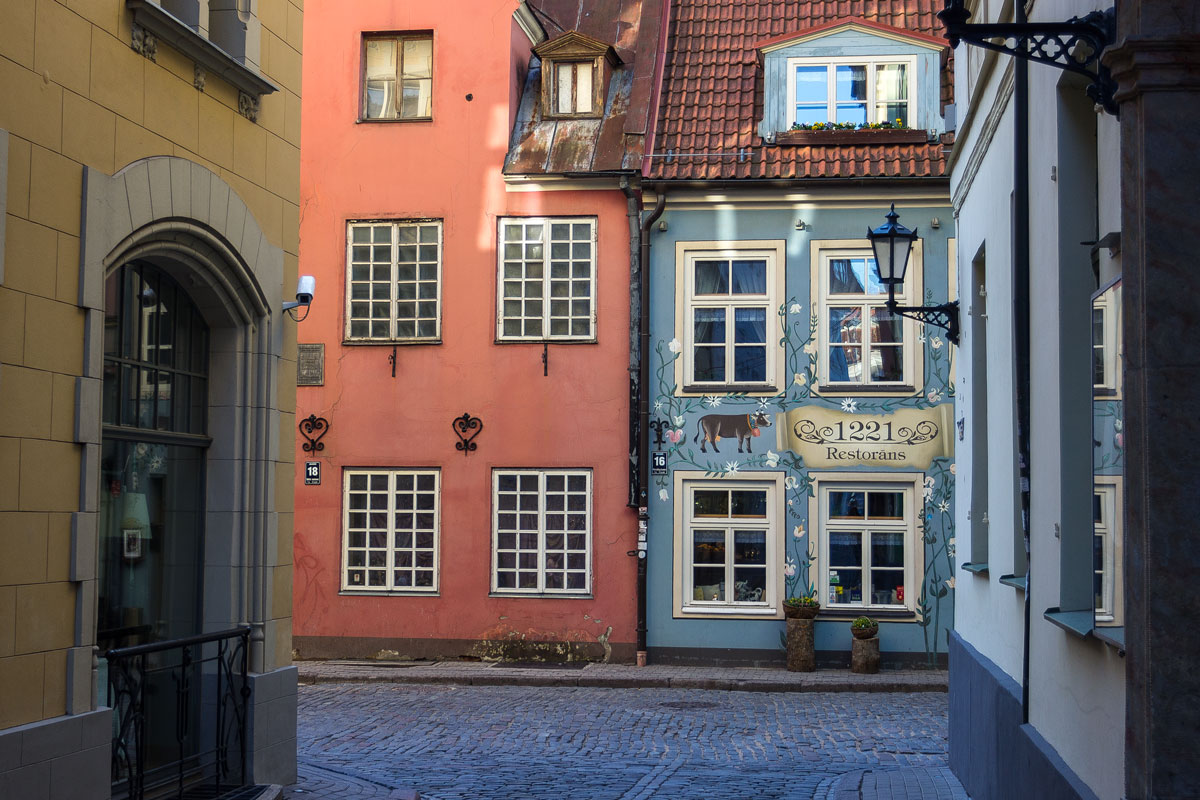
Beautiful facade.
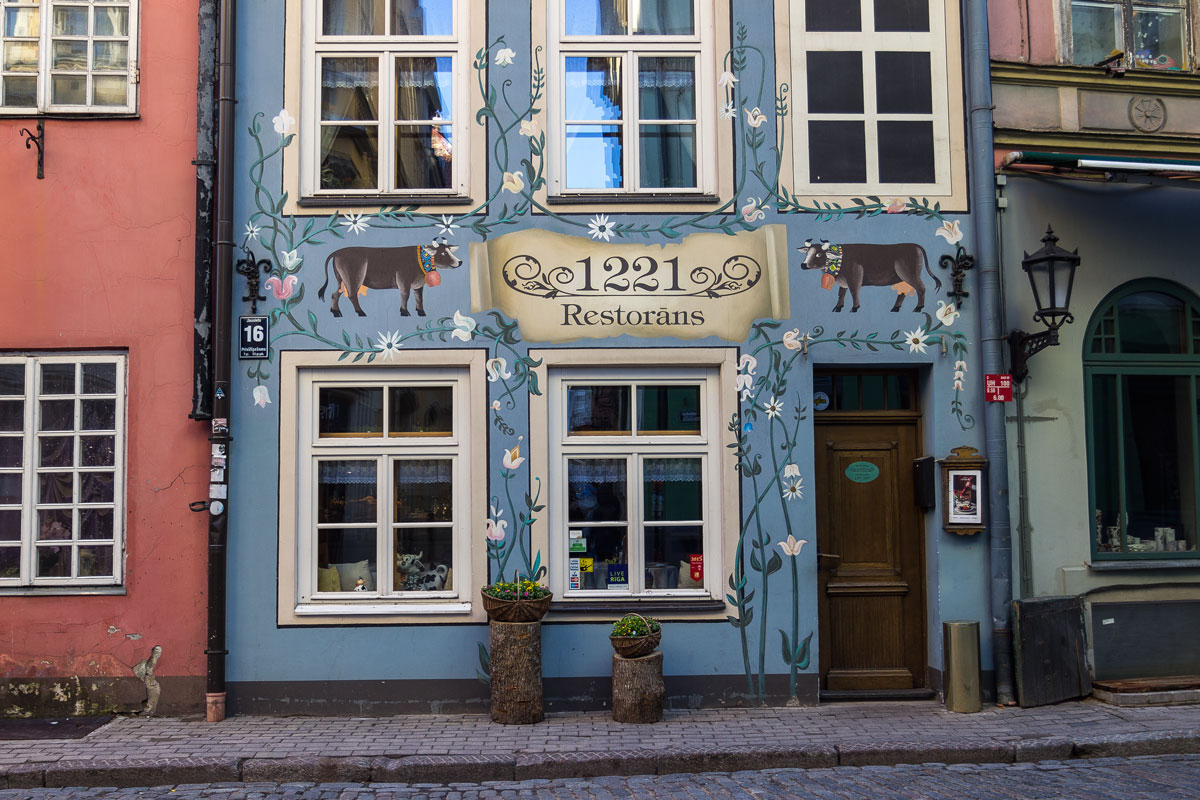
Warm bakery display.
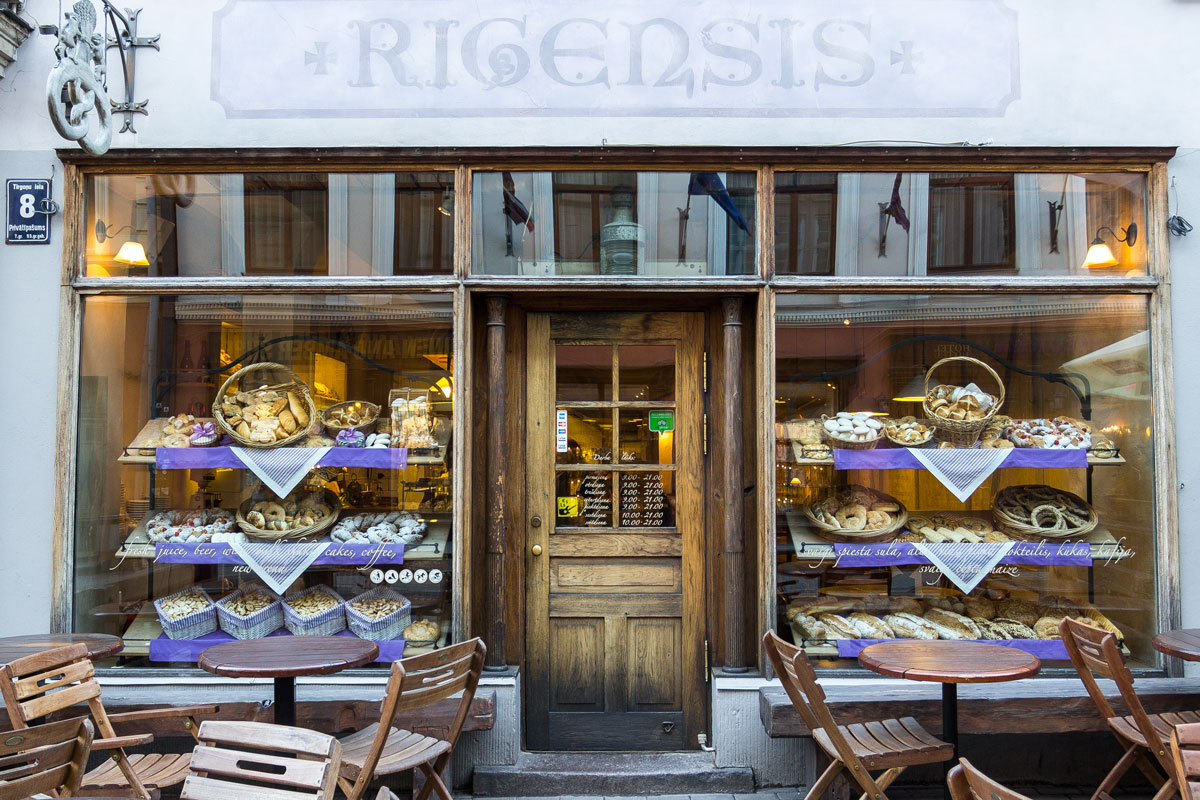
Shoe workshop.

Upscale restaurant.

A cute attempt to become Italy.

A niche café with a medieval touch.
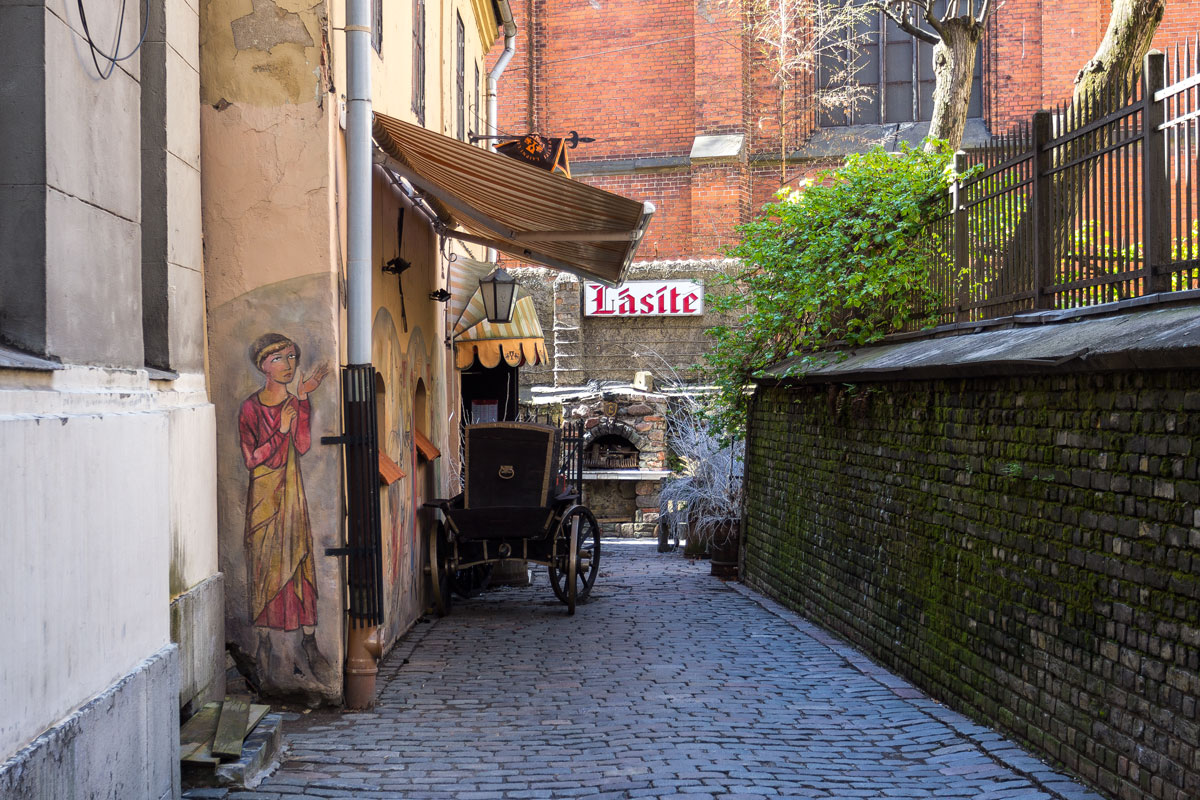
Cozy cottages.
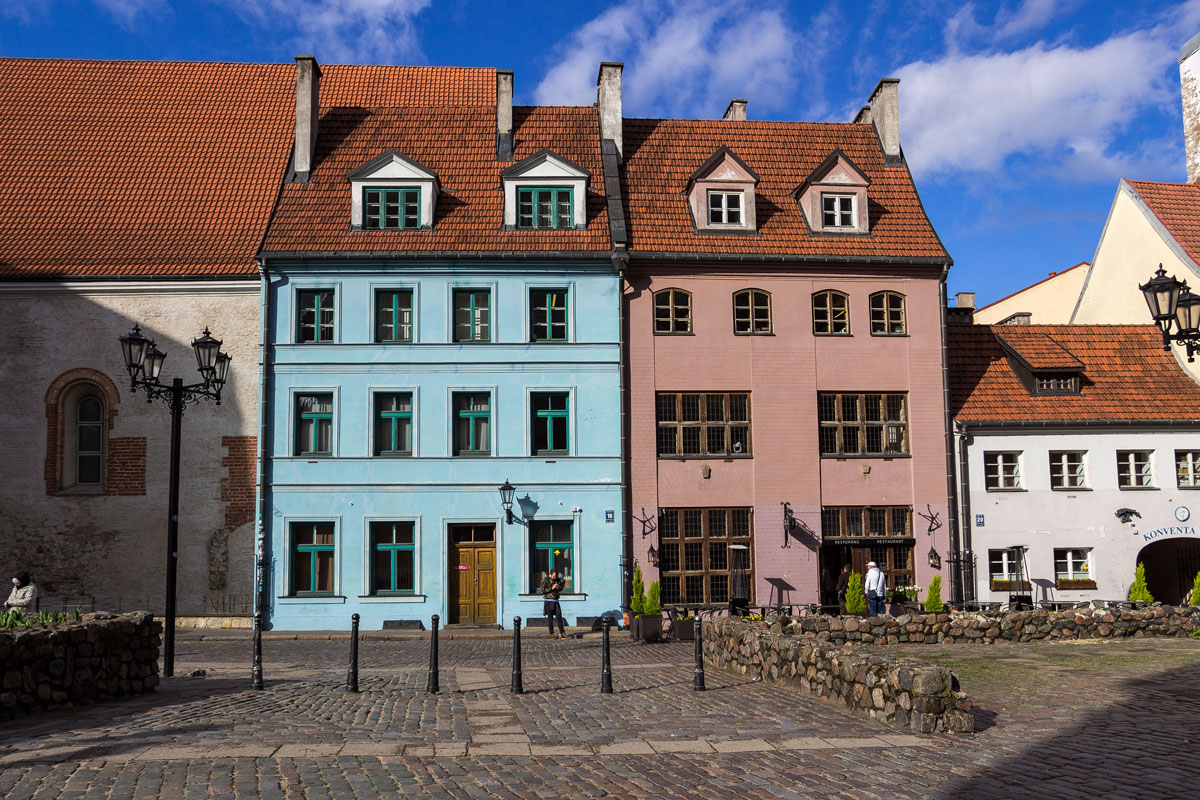
Alley with cafes.

Hotels.

Beautiful doors. If you were to take them out of a story and show them to a random viewer, nobody would think they are from Riga.
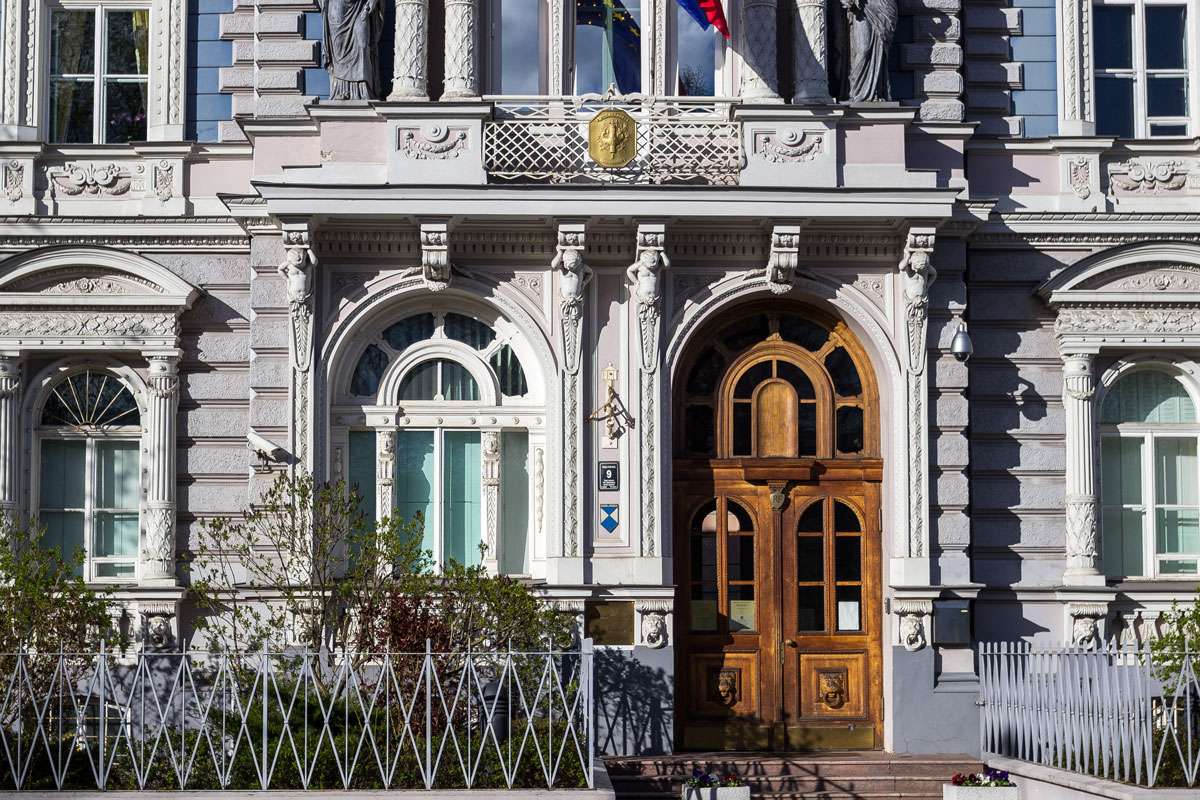
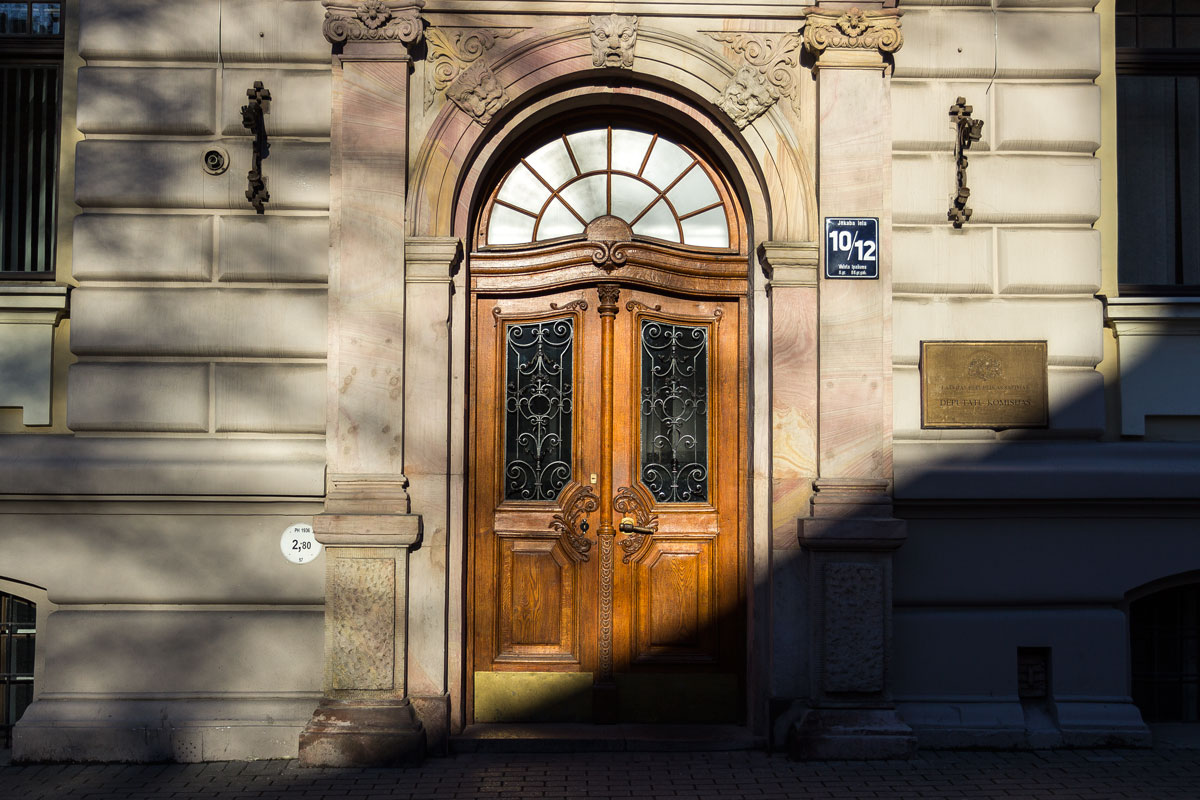
Such window and door decorations are much closer to the Baltics. This kind of coloring is often found in Tallinn.

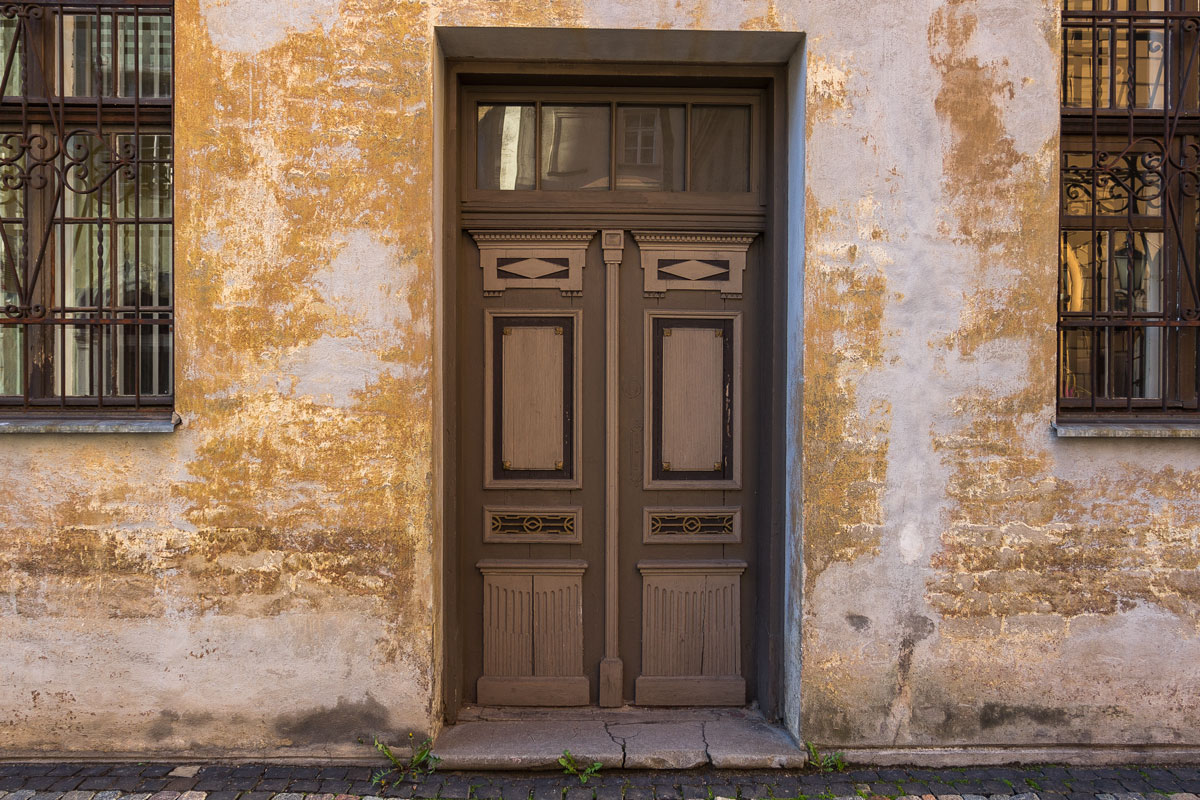
Arch. A group of tourists spent about ten minutes here, the guide was explaining everything about this arch. It turns out to be the Swedish Gates, which were pierced in the wall of a residential building 300 years ago. They are the only ones that have survived from that time.

One of the main streets in the center. A breeding ground for expensive bars and restaurants. They say they shamelessly scam tipsy tourists here: lure them into a bar, treat them to drinks, and then present a huge bill. I read about it in a guidebook, walked along this street at night, even pretended to be drunk — but no one approached me.

Here they are, these bars.
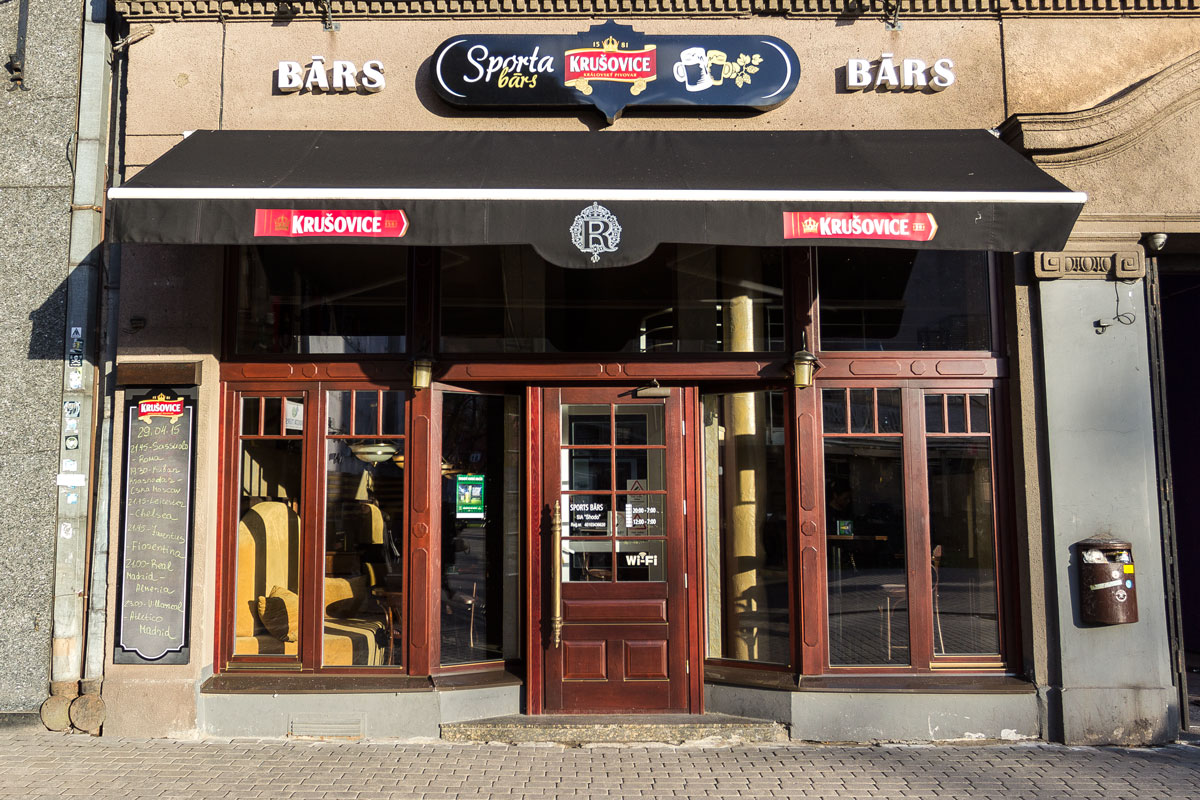
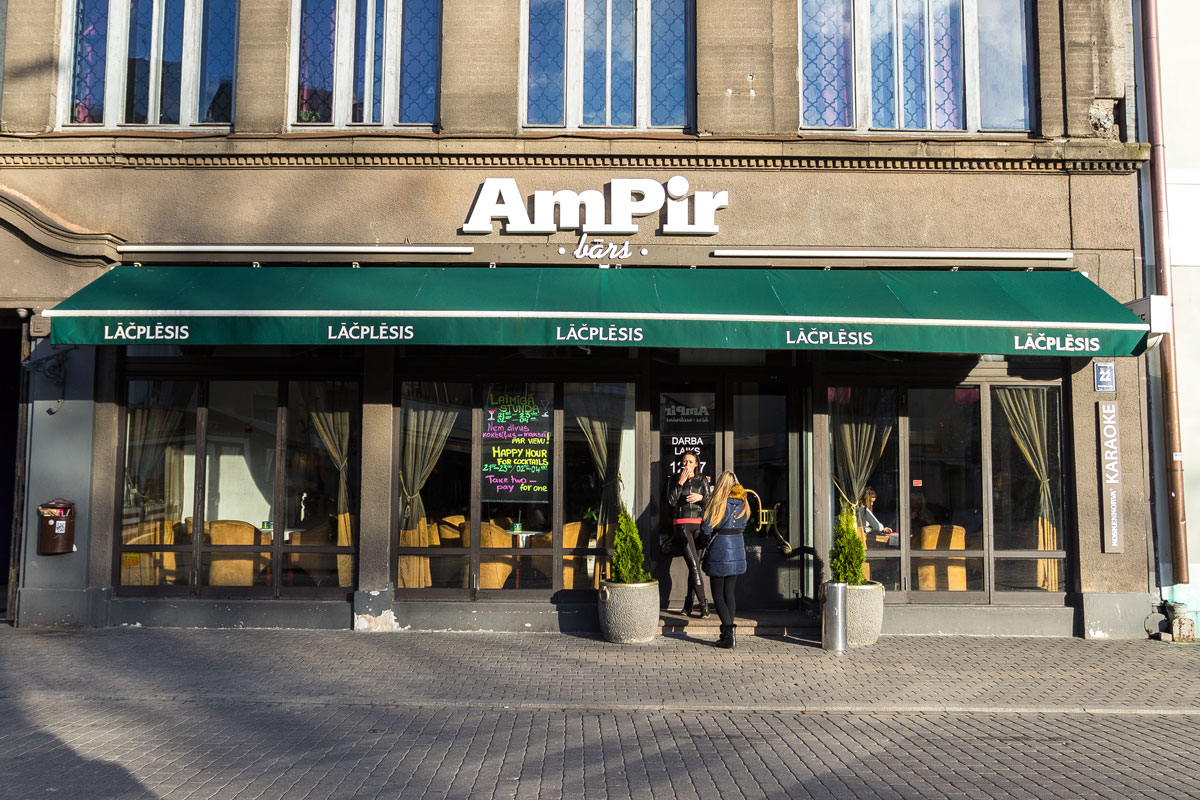
Summer cafes. In Riga, they haven’t completely abandoned the habit of fencing them off with fences and pedestals yet, but most of the terraces are open.
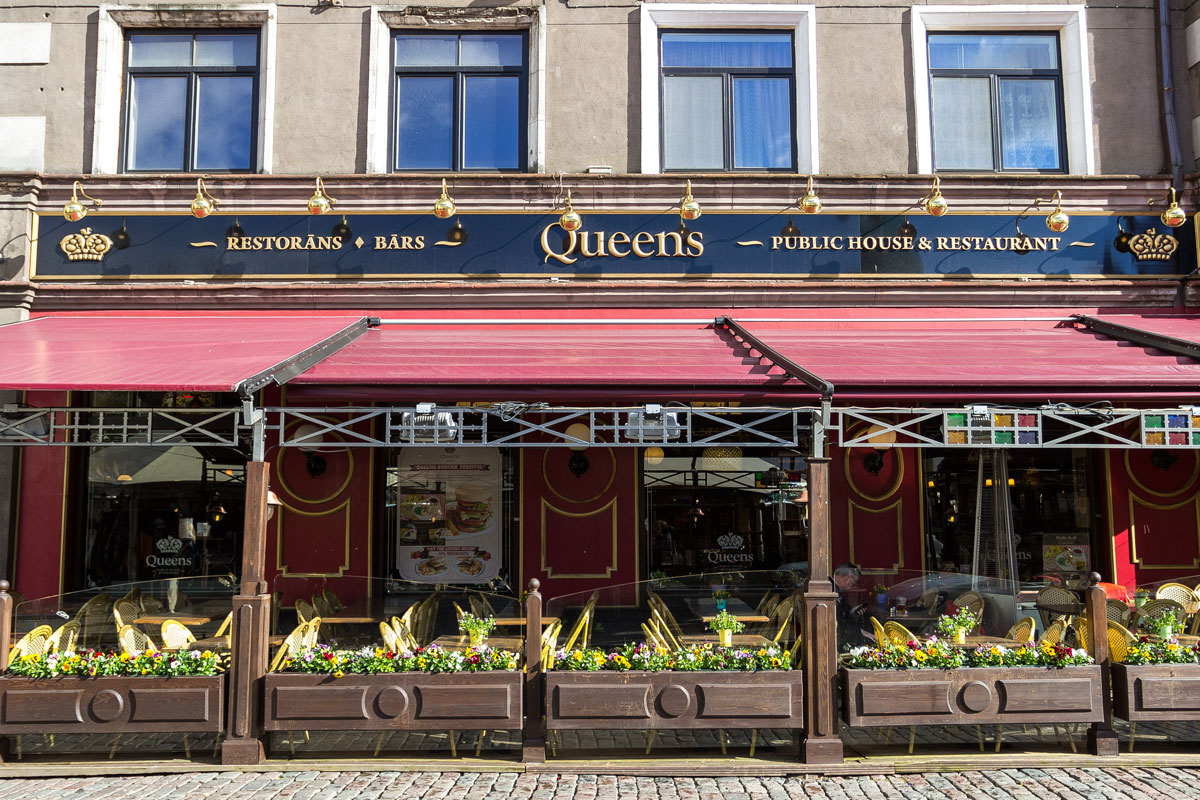

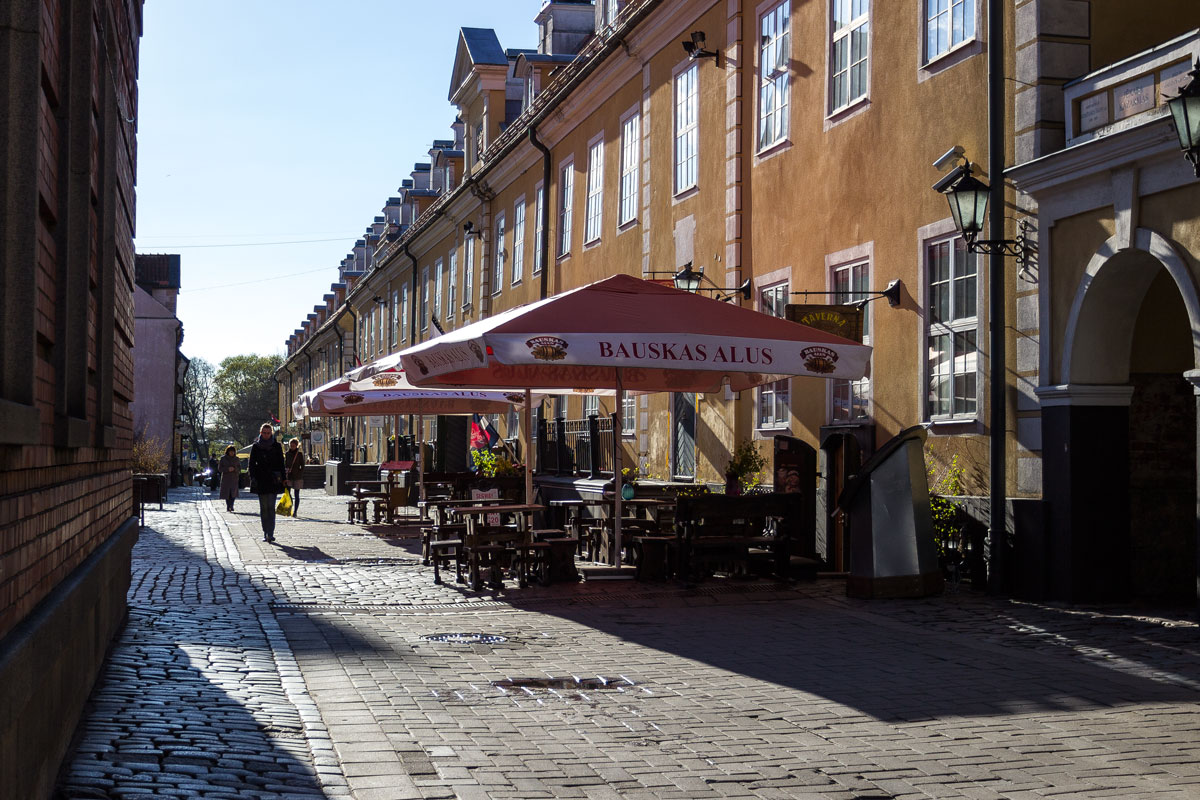
And here’s a really strange construction. The café was placed on the road — no passing through. But they left space for pedestrians.
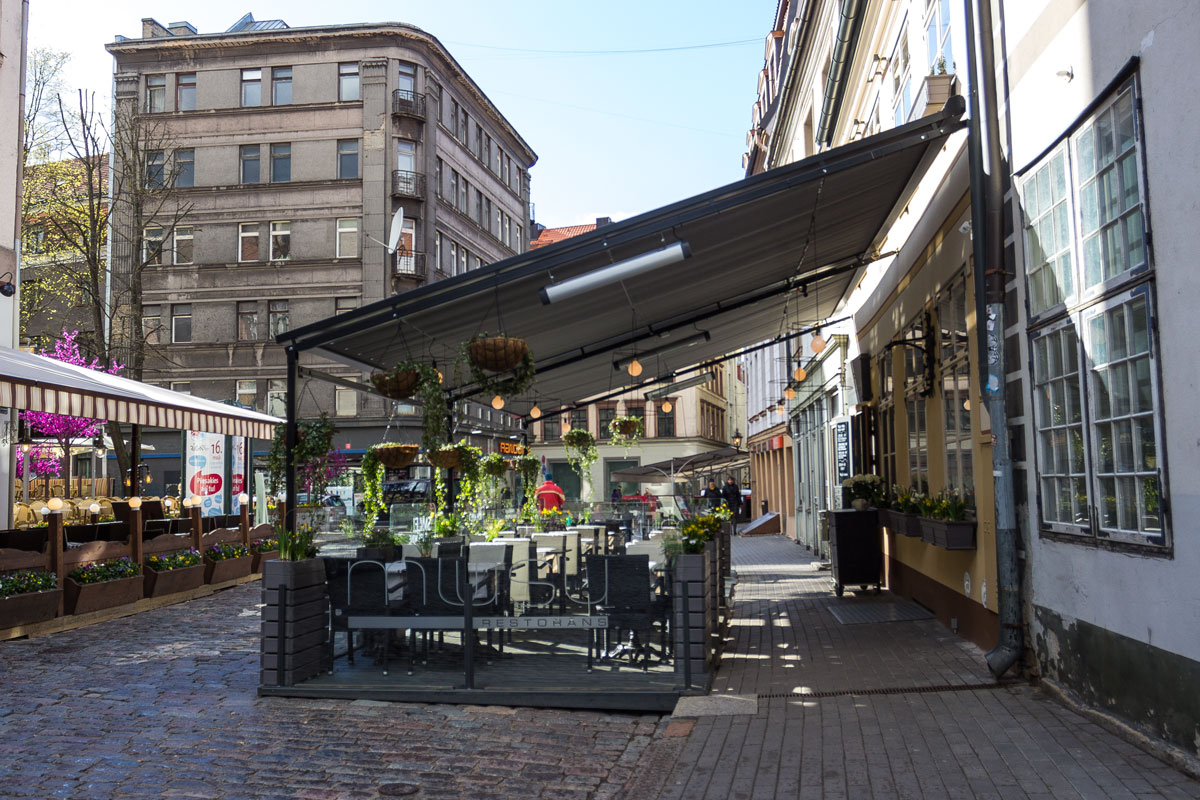
National Opera. A beautiful building in the Empire style.

Park next to the opera.
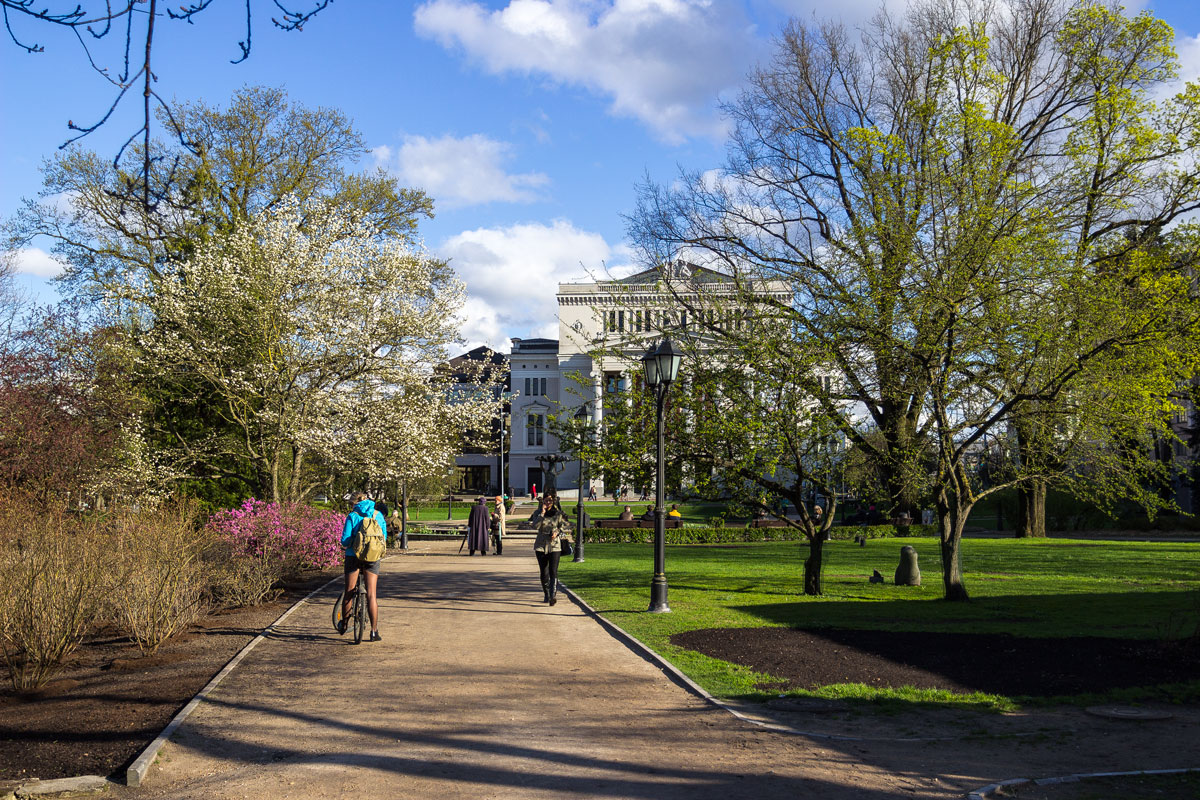

It is completely unclear how this whole beauty is crowned by an utterly tasteless Freedom Monument with an asphalted square.
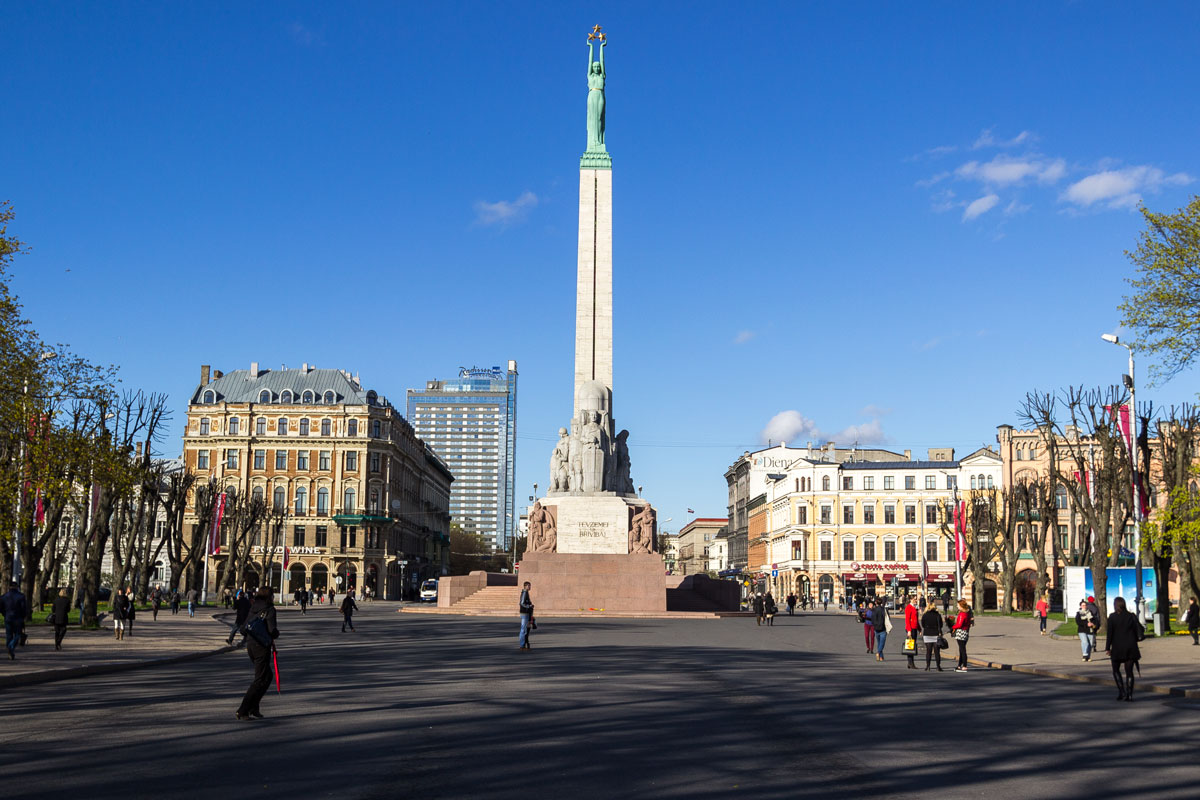
This is what the streets of Riga look like at night.
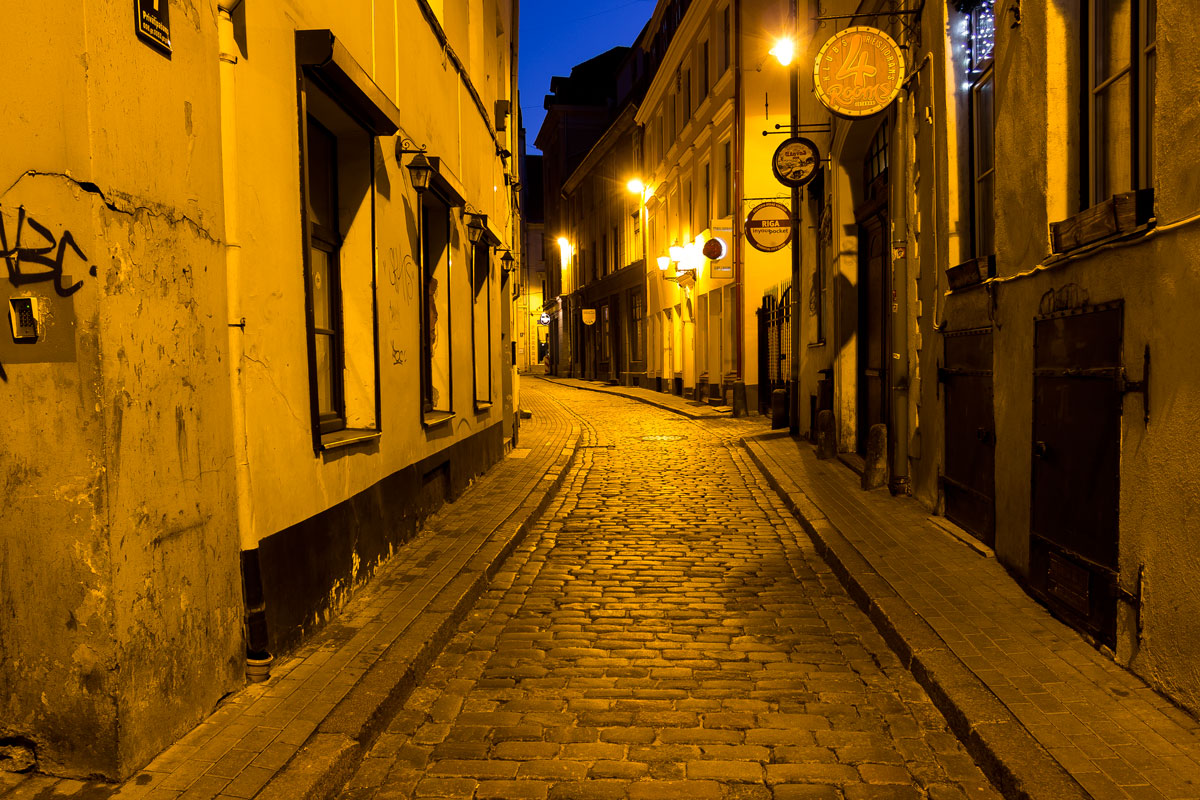


Even more beautiful than during the day.
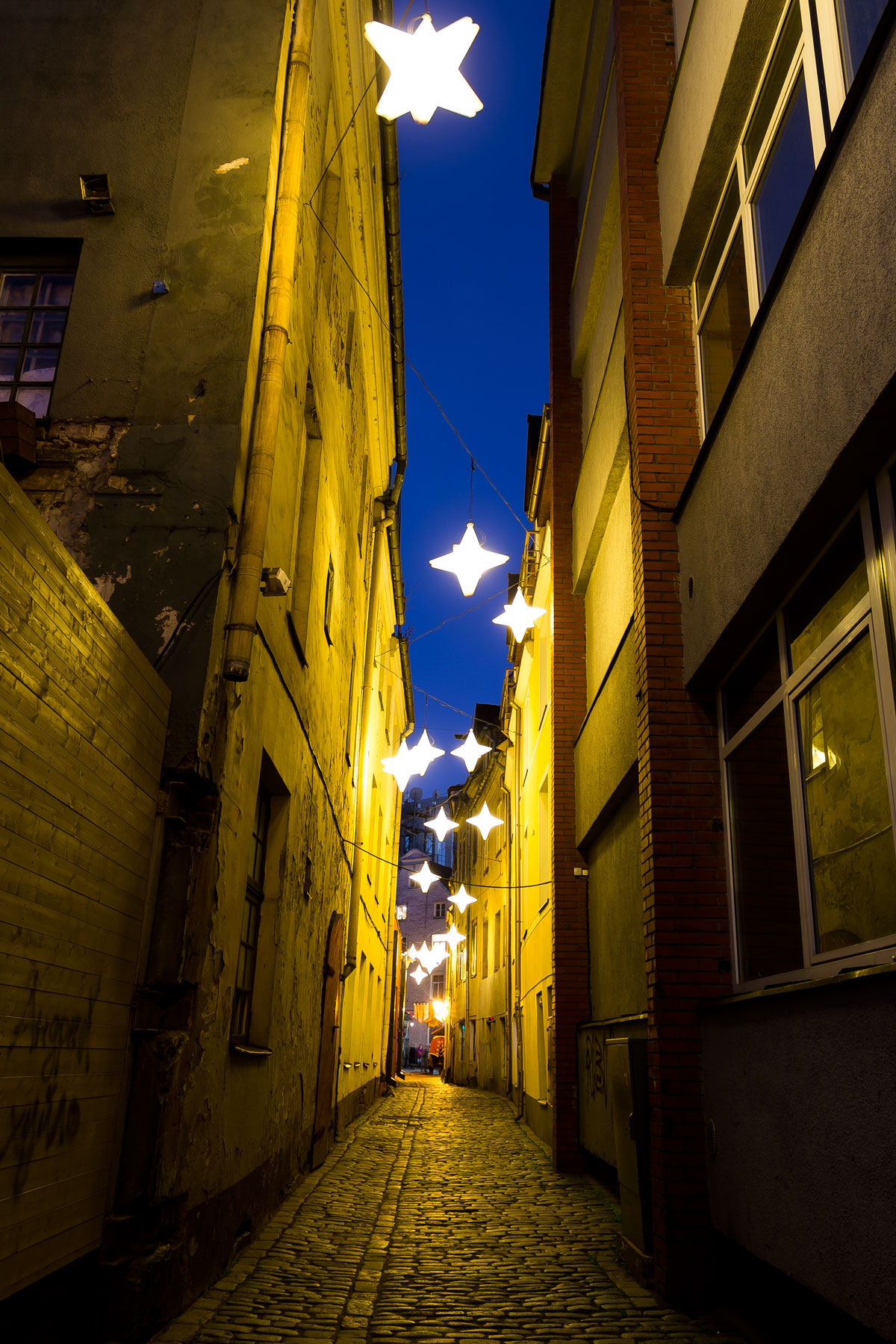
Magical.
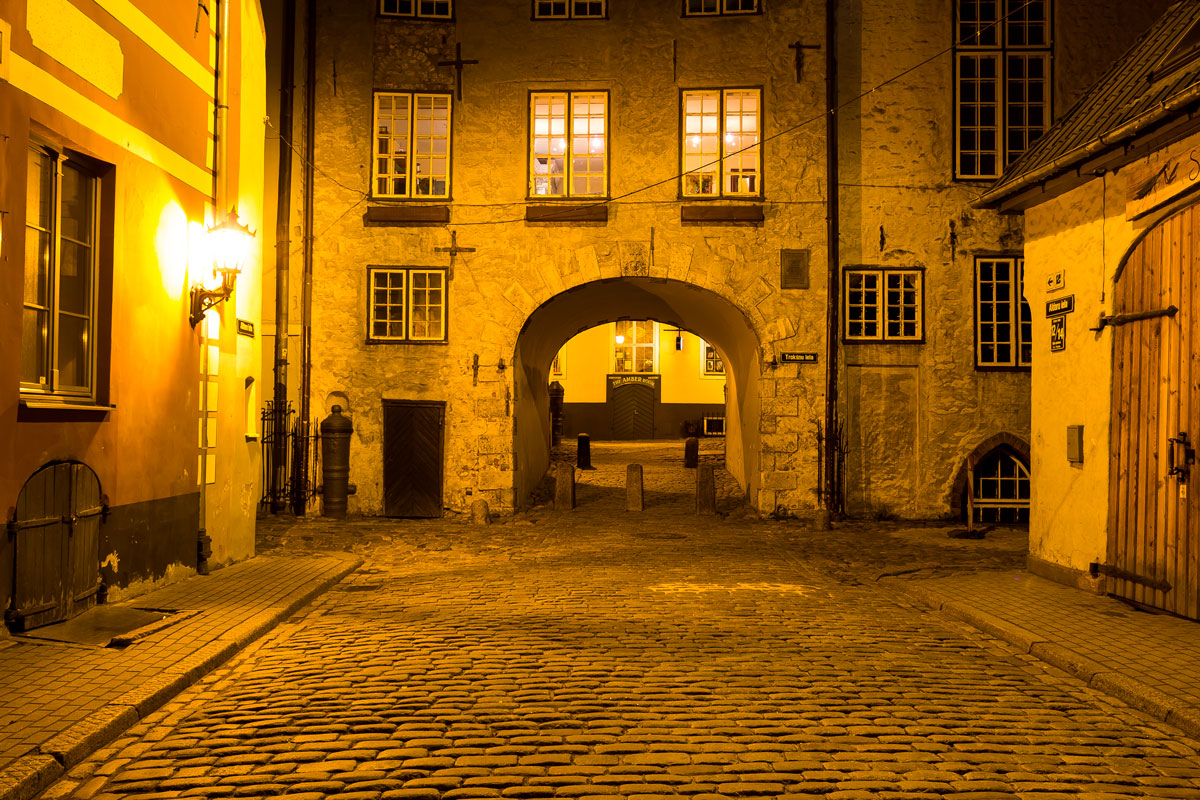
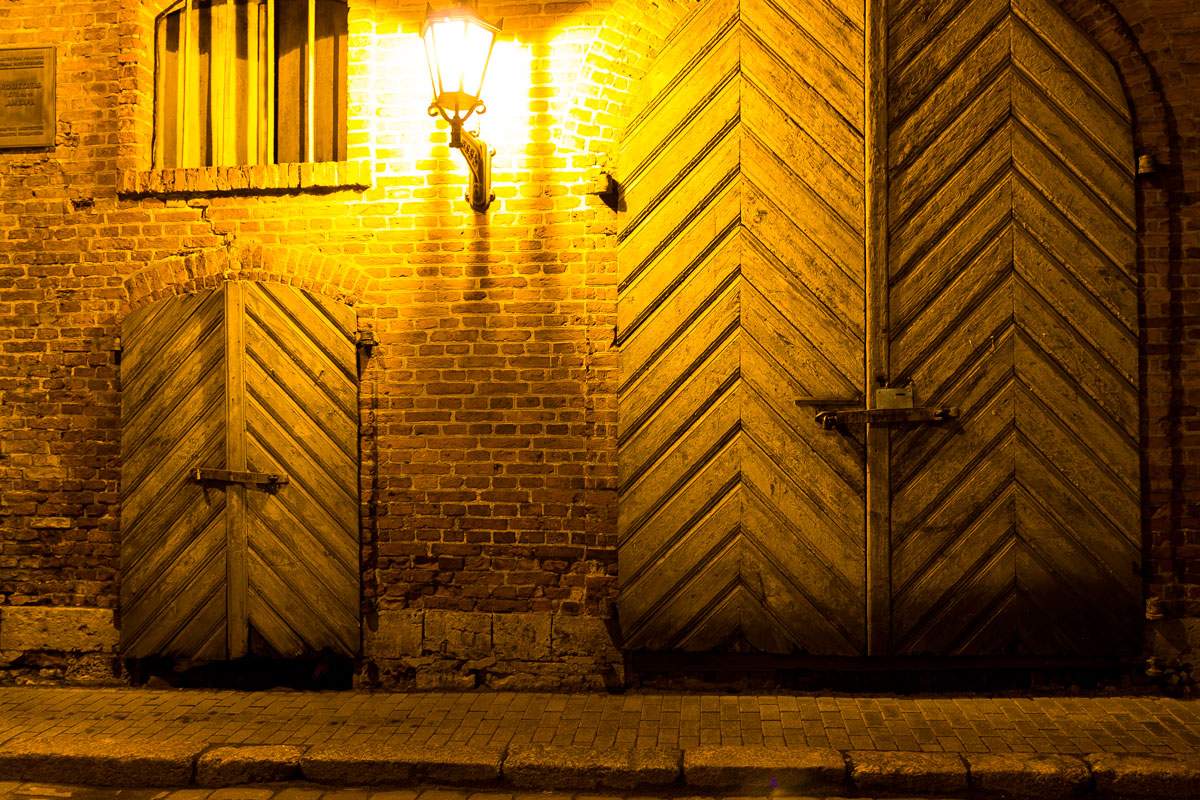
This is what Riga looks like from above. The Old Town is very compact, almost the entire area can fit in one snapshot.
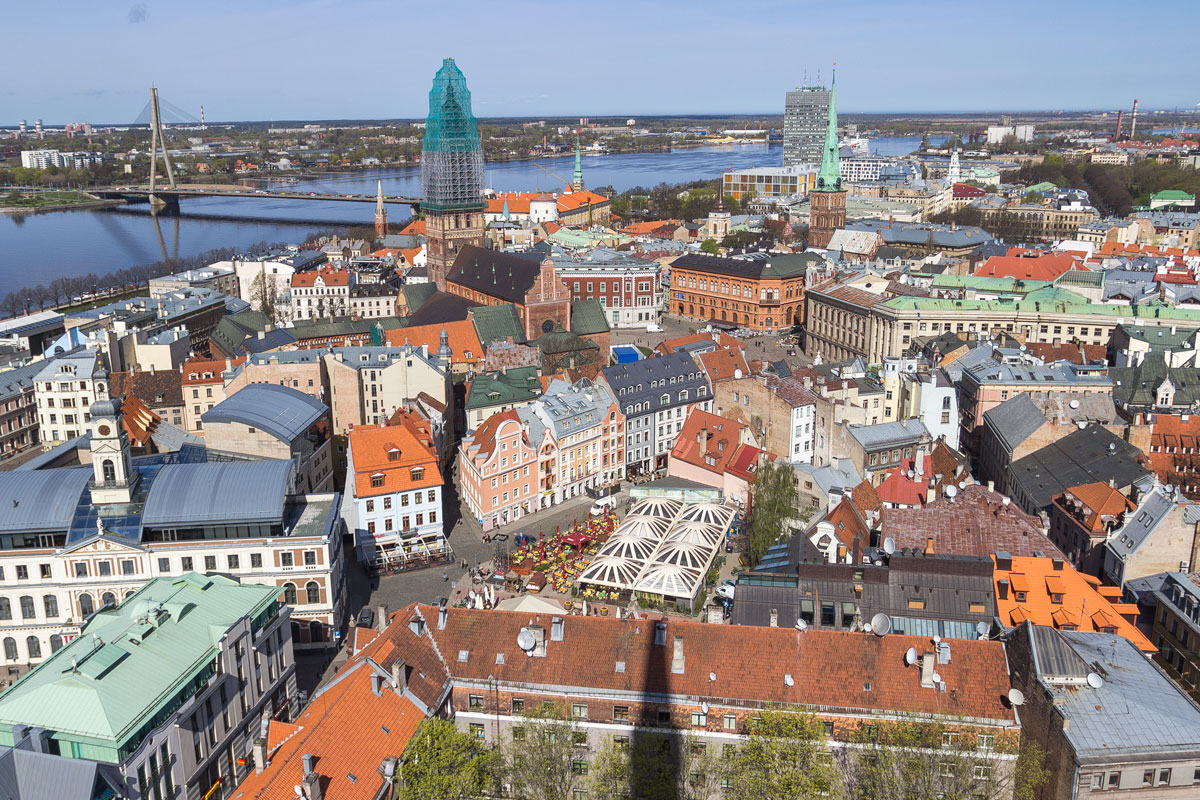
In the other direction, the city smoothly flows into the horizon.
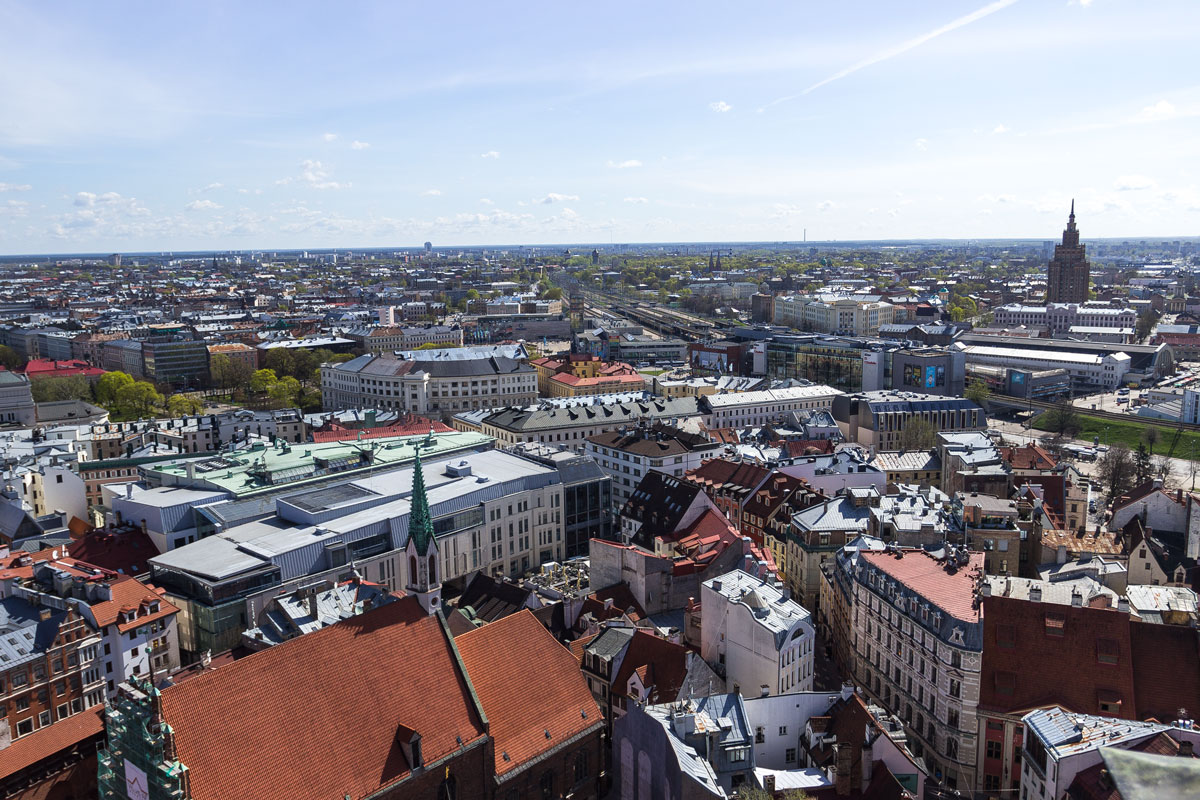
Across the river from all this beauty stands the ugliest building in the city — the National Library. Remarkable crap, to say the least. They say a lot of money was stolen during its construction.
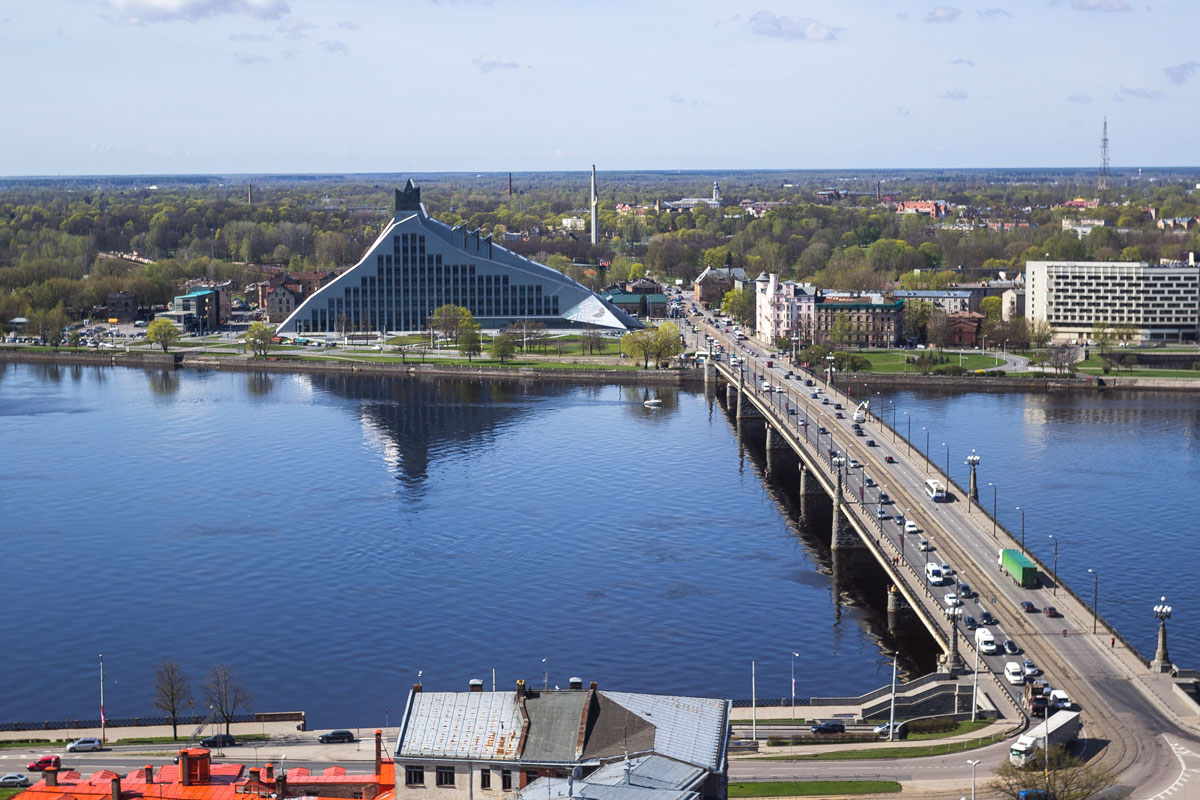
About the Russian language
Once in Moscow, on Malaya Bronnaya Street, during restoration work, they found a historical sign “Apteka” (Pharmacy) made before the revolution. This unique discovery caused a lot of buzz simply because nothing similar has been preserved in mass quantities here.
Somewhere in England or Italy, century-old signs are considered commonplace, but not in Russia. All similar specimens were destroyed during the revolution, as the Bolsheviks fanatically fought for the abolition of everything created before October. This included pre-reform spelling. The letters “yer,” “fita,” and “yat” were removed from the alphabet. Any signs with old orthography were destroyed. It reached absurdity: the letter “yer,” which is a hard sign, was removed from printing houses to prevent signs with a hard sign at the end from being printed. But a hard sign could appear not only at the end of a word! Nobody cared. Words started being printed without a hard sign, replacing it with an apostrophe. To this day, in Moscow, signs of “Pod’ezd” (Entrance) have survived as a legacy of Bolshevik madness.
What is the point of this whole story? In Riga, there are several wonderful examples of ancient inscriptions in pre-revolutionary Russian language, where not only “yat” but even “yus” is present. The signs were found, restored, and now decorate the city center.


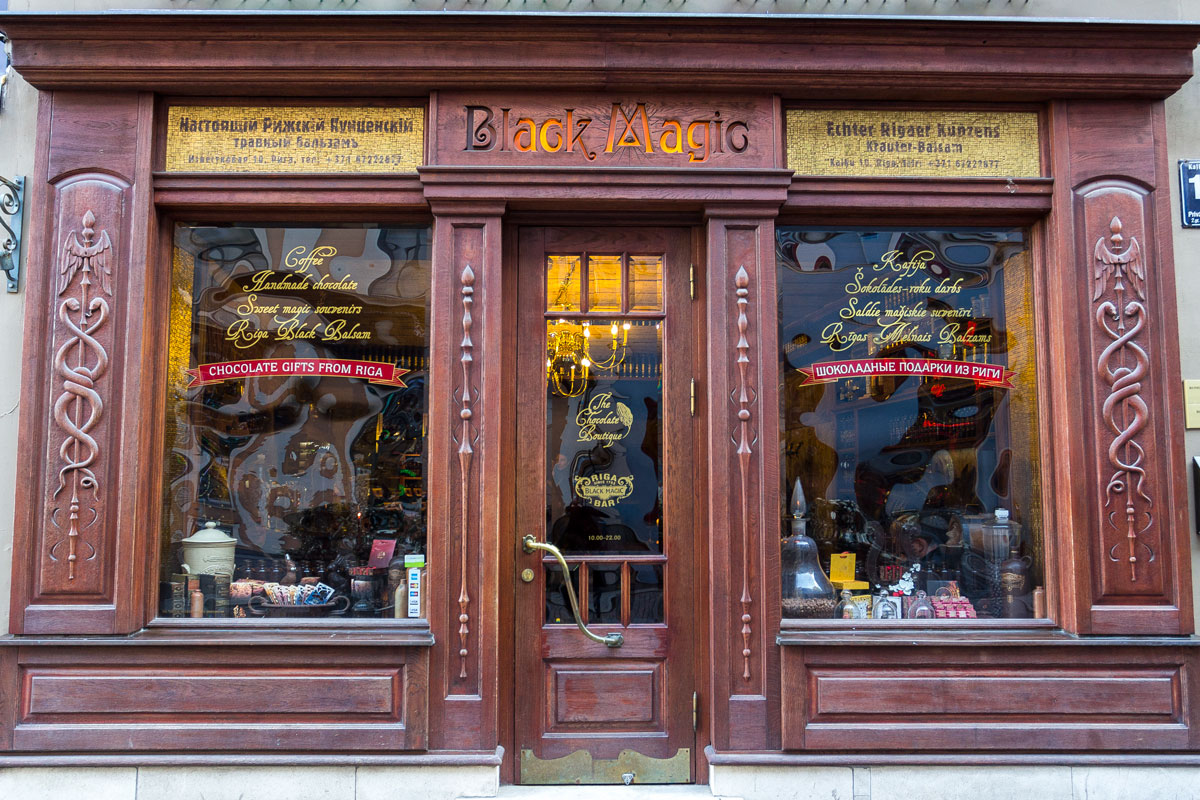
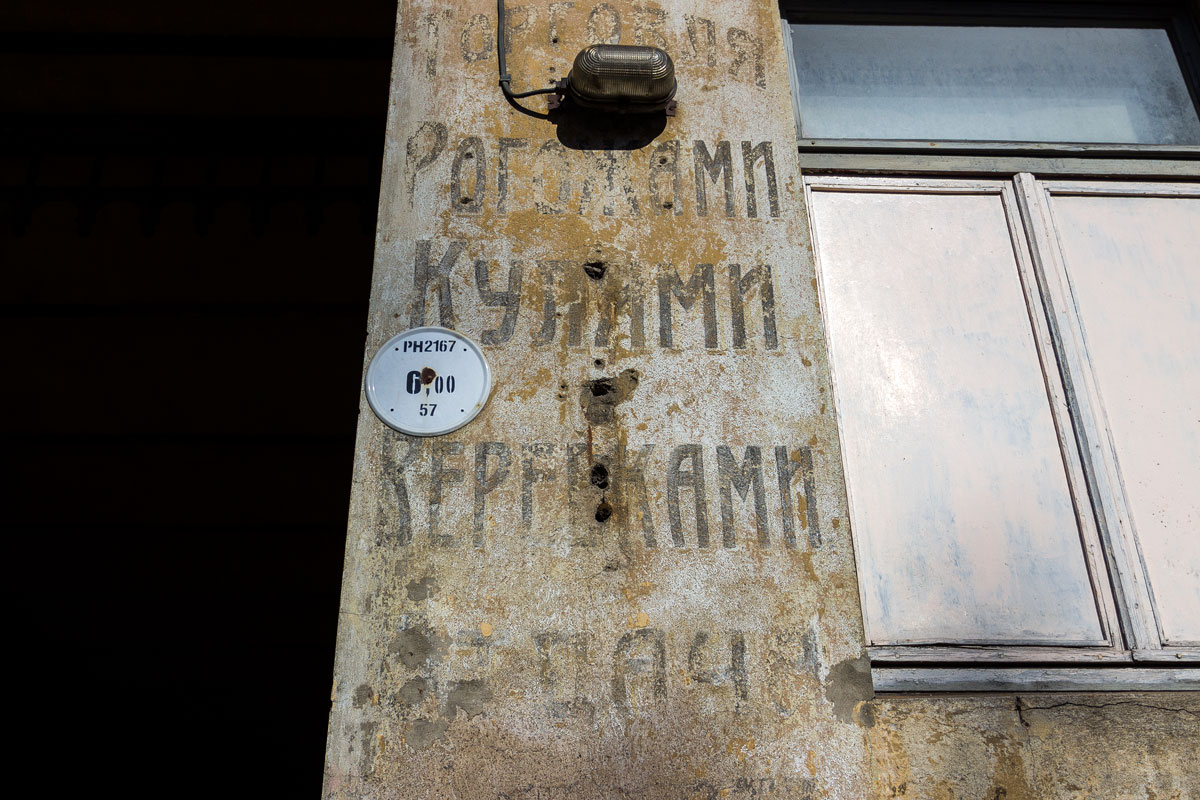
Is it even worth mentioning after this that all rumors about the prohibition of using the Russian language are an outright fabrication? Such a thing simply cannot be. In Riga, there are a lot of Russian signs, posters, and announcements. Practically everyone speaks Russian here. You don’t need to ask, “Do you speak Russian?” — they do.
The only exception is education. The number of schools teaching in Russian is decreasing, and higher education is taught only in Latvian. But what is there to find offensive about it? Every nation strives to preserve its traditions and language. 260 million people around the world speak Russian, while there are just over a million Latvian speakers within Latvia. Under such powerful pressure, they simply need to defend themselves. Moreover, all restrictions only apply to state institutions.
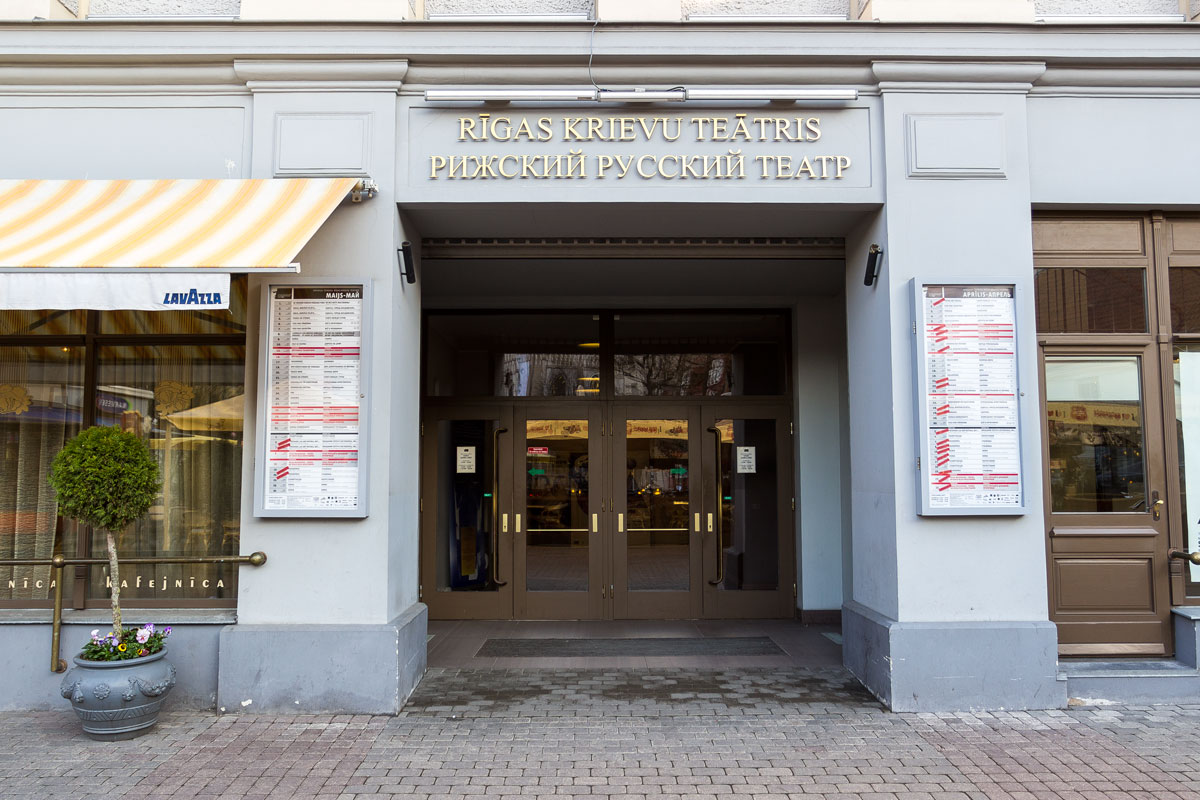
Art Nouveau
Not far from the center of Riga, in the district of Alberta Street, there is a special neighborhood where unique architecture in the Art Nouveau style, or Jugendstil, has been preserved. The essence of Art Nouveau lies in depicting plants, animals, humans, mythical creatures, and lavishly decorating facades with elaborate details.
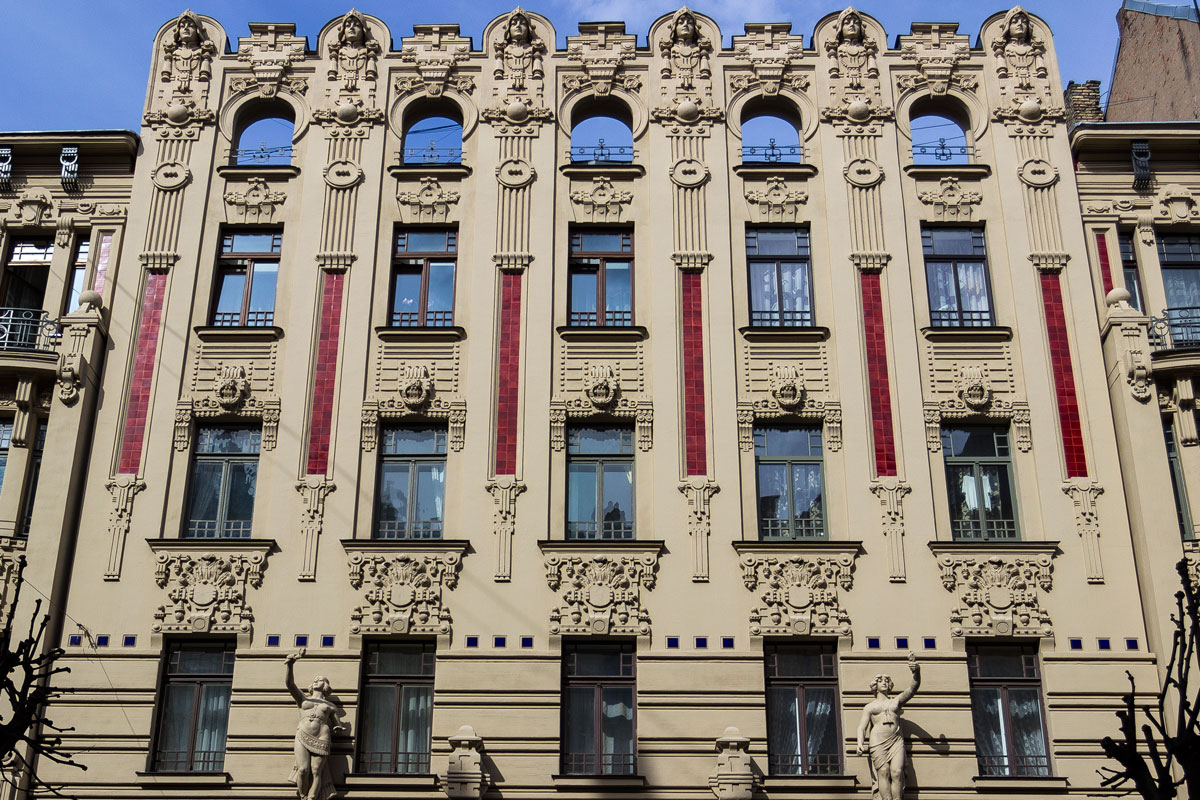
All the houses on Alberta Street are adorned with human faces and lion heads.

Countless details. Nowadays, it may be perceived as kitsch, but back then, before World War I, it was the most innovative approach to architecture.
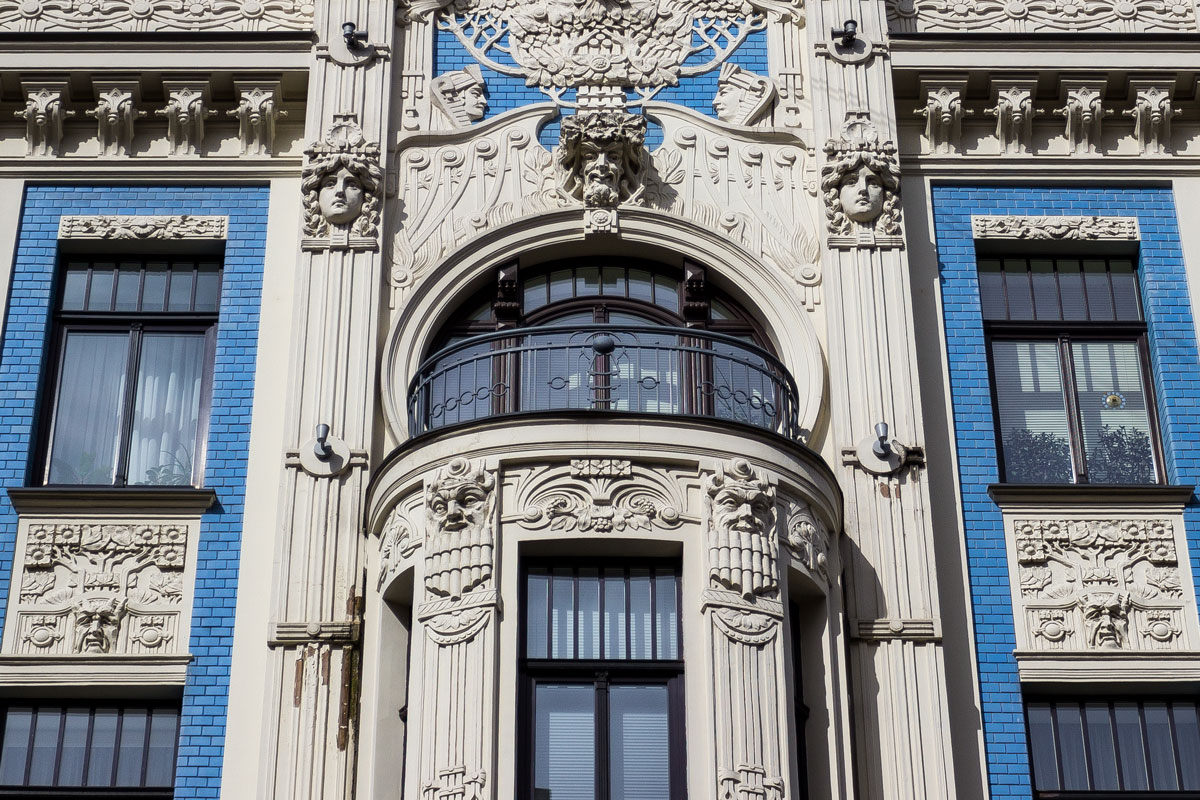
Let’s enter the entrance hall and see what’s inside.
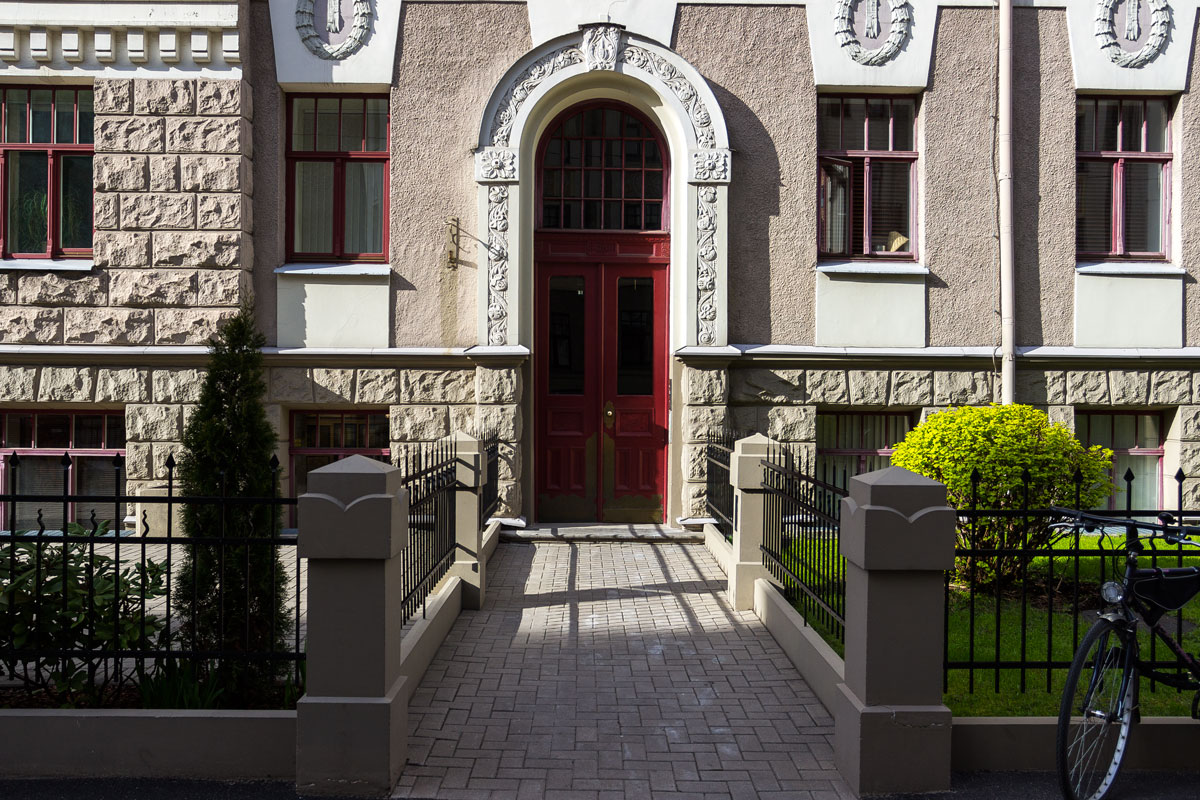
The staircase. All the walls are adorned with ornaments. The entrance hall is very spacious and bright.
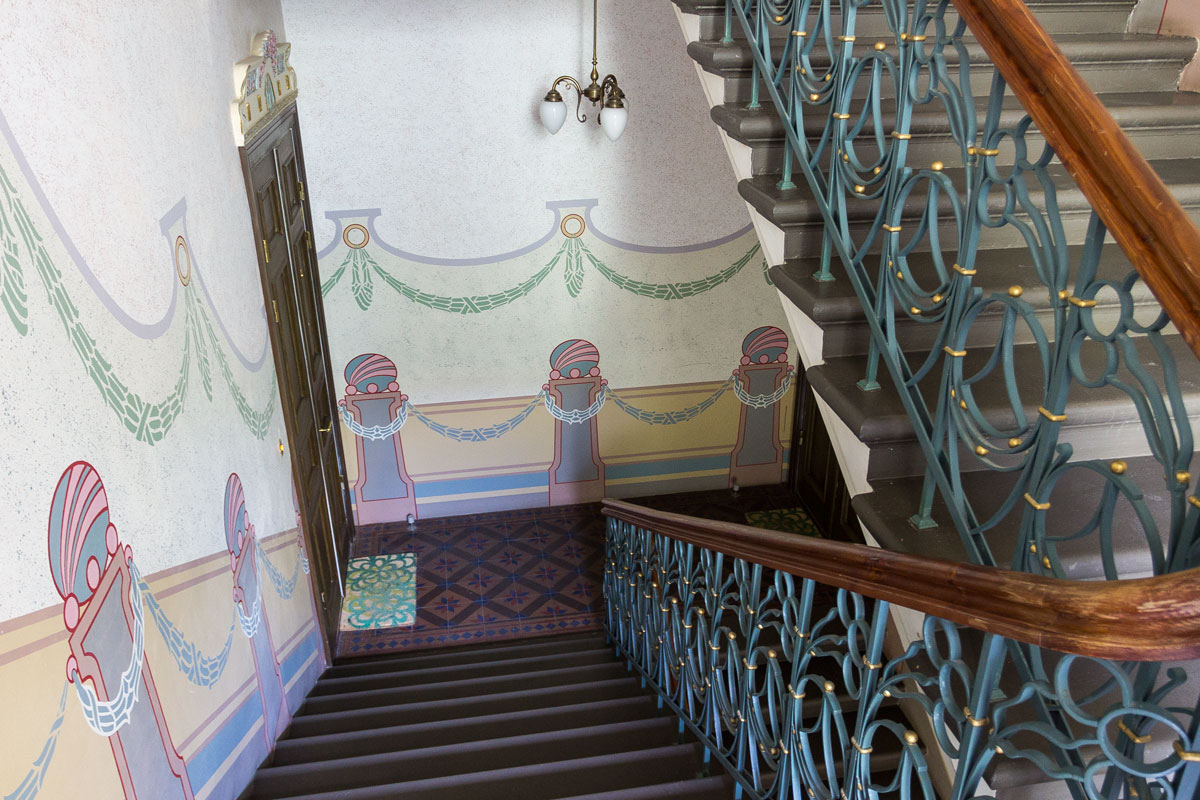

Let’s enter someone’s apartment. The hostess kindly allowed us to film a few corners of her huge apartment, probably around 100 square meters, if not more.
Here is the living room with a kitchen and a dining table.
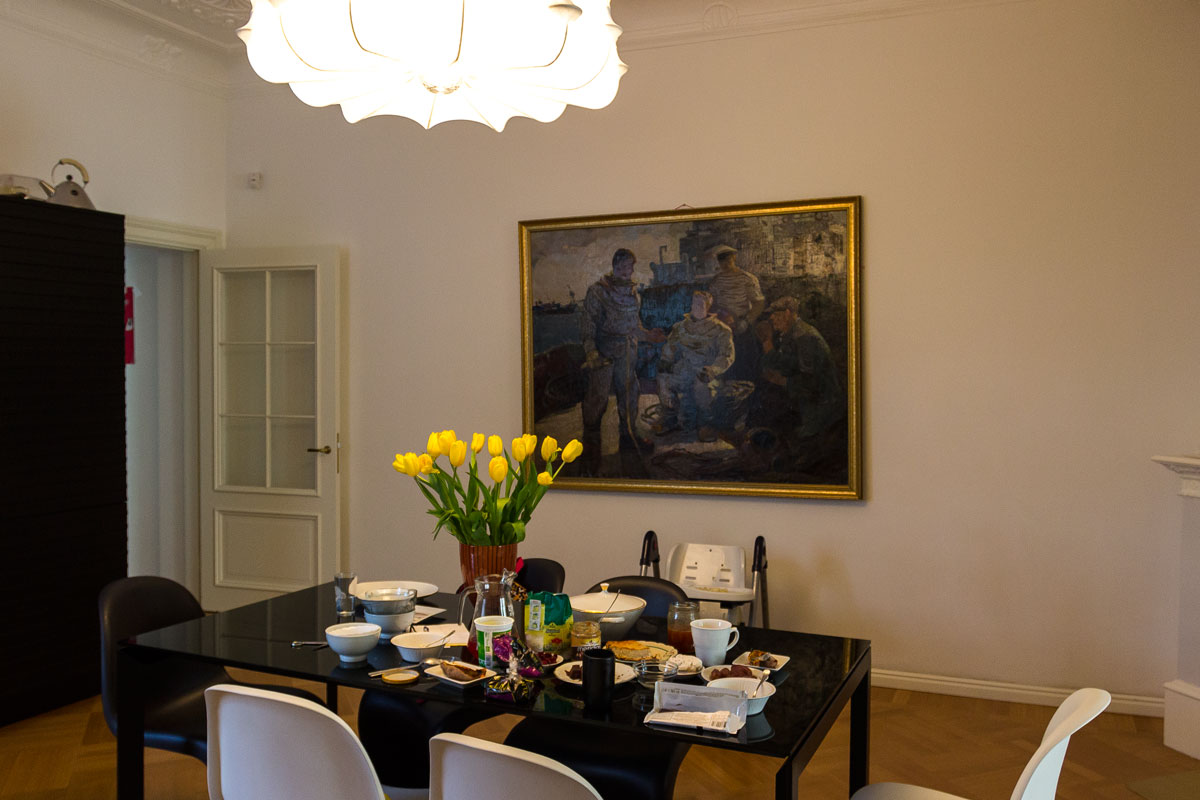
There is a small decorative fireplace in the living room.
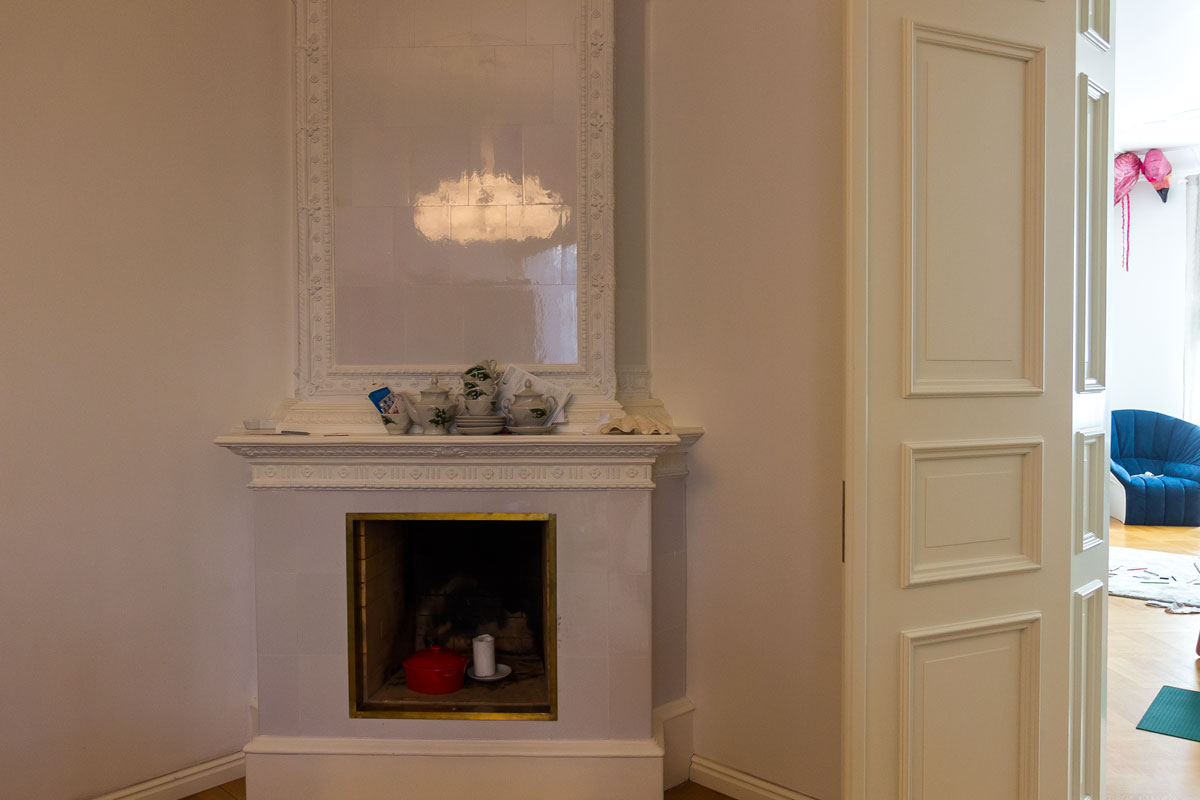
The hallway. Ahead is the balcony, to the left is the door to the bathroom, and to the right is the entrance to the living room.

A large room with a horse-shaped floor lamp. The interior matches the style of the house. To the left, off-camera, is a spacious room furnished with plush sofas and a huge wall-mounted television. To avoid being intrusive, I didn’t ask to take photos — the room was occupied by children and there was some mess.

Who wouldn’t want to live in such a house? The only drawback is that no matter when you look out the window, there are crowds of paparazzi taking photos of all this beauty. There’s probably no escaping them.
They say that a lot of tourists from Germany come here — after the war, they didn’t have many buildings like these left, and Riga now is considered a unique and the largest Art Nouveau monument.
Wooden Riga
That was the center of Riga. Of course, not the entire city looks like that. The majority of any city is made up of residential areas, and we will definitely reach the panel buildings and balding lawns, but first, it is necessary to talk about wooden Riga.
These old wooden houses are simply incredible.
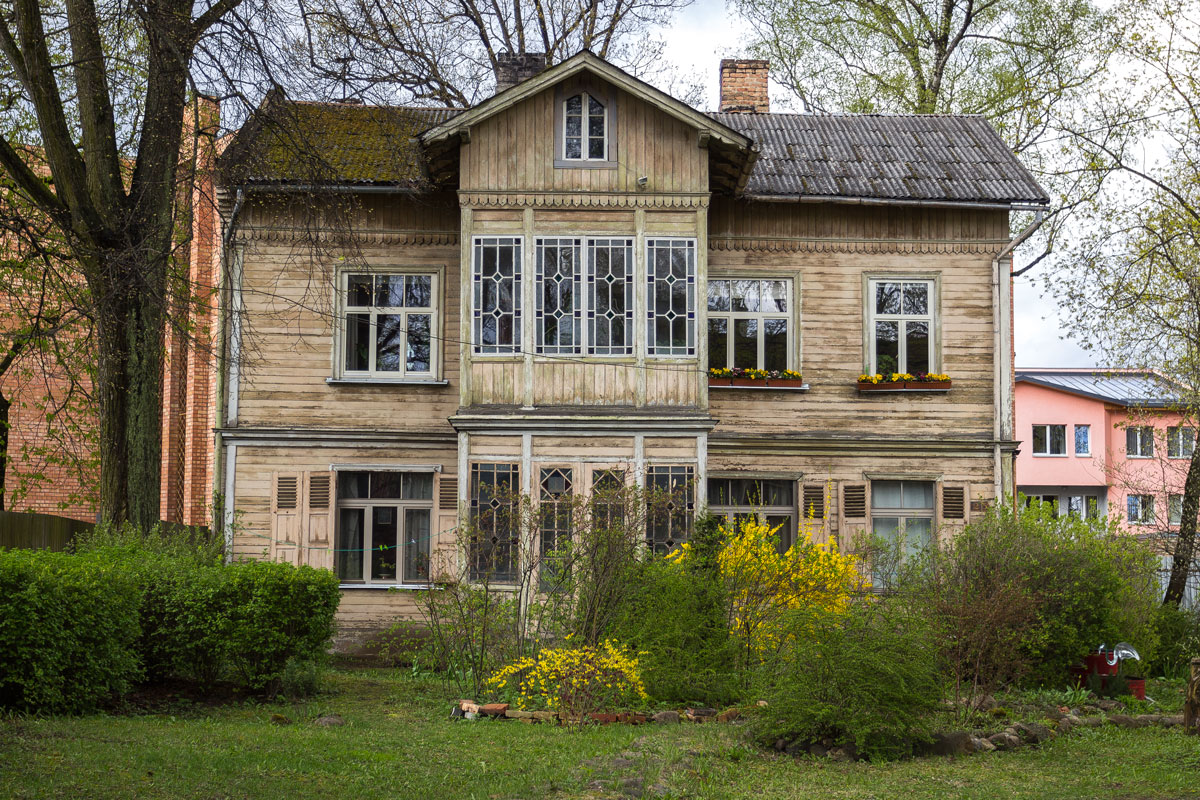
The beauty is incredible. Classicism in wood.
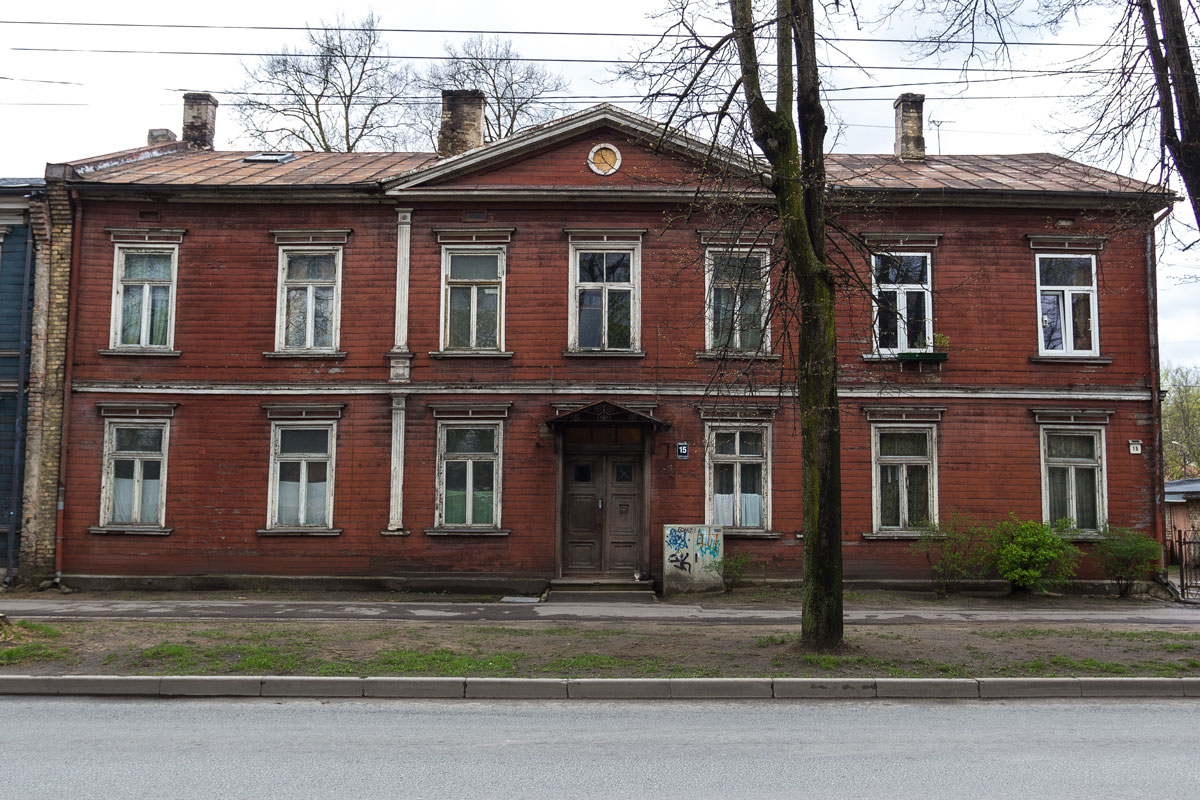
Such a quantity of historical wooden houses cannot be found anywhere else in the world. Riga is unique.

The houses are scattered throughout the city. To see them all, one would need to spend a lot of time.

Most of the houses were built in the 19th century. For example, this building dates back to 1898.
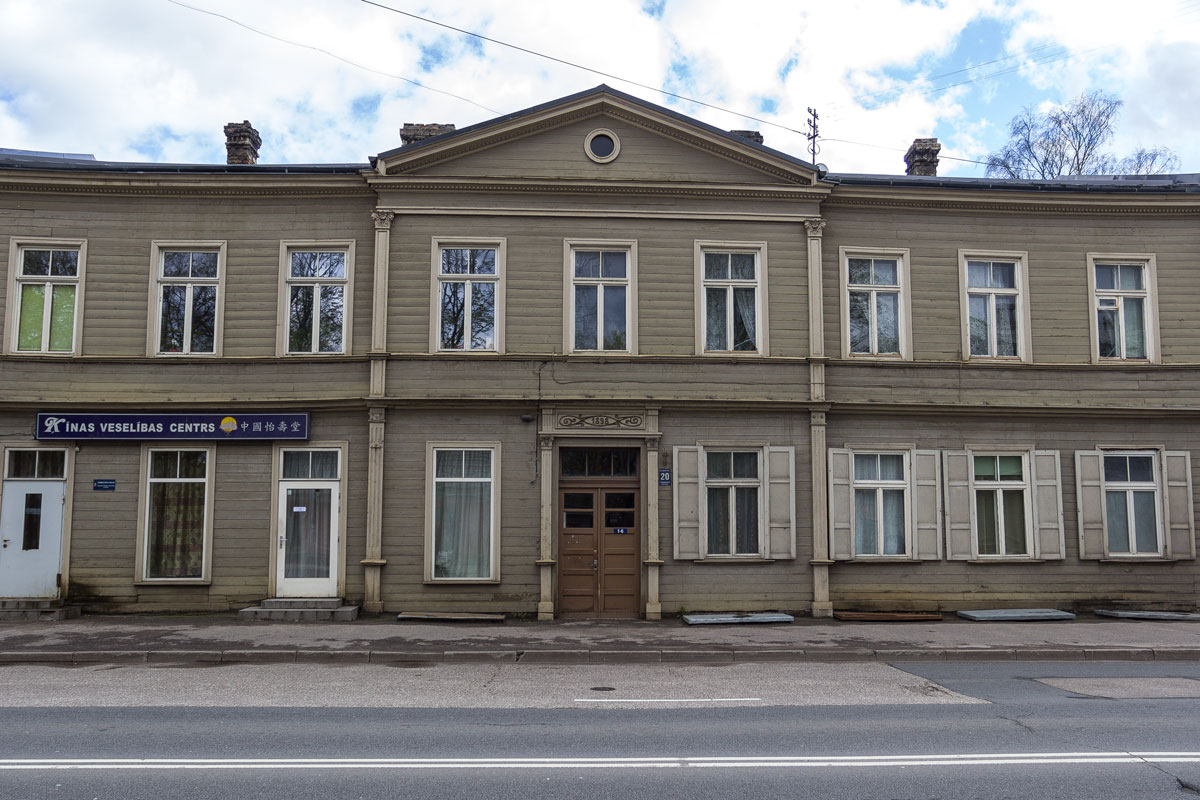
Doors.

Street.

Some of the wooden houses are located on the other side of the river.
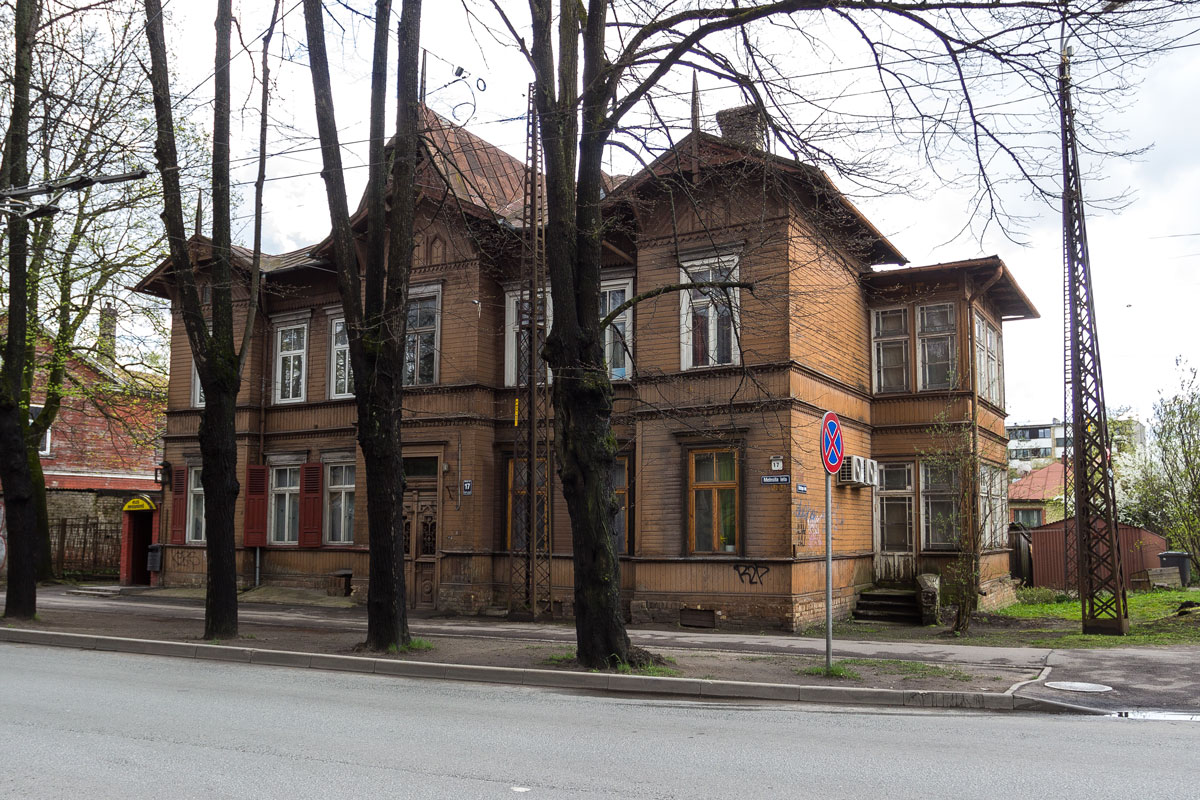
Another part is built on the main side, closer to the historical center.

Magnificent house.
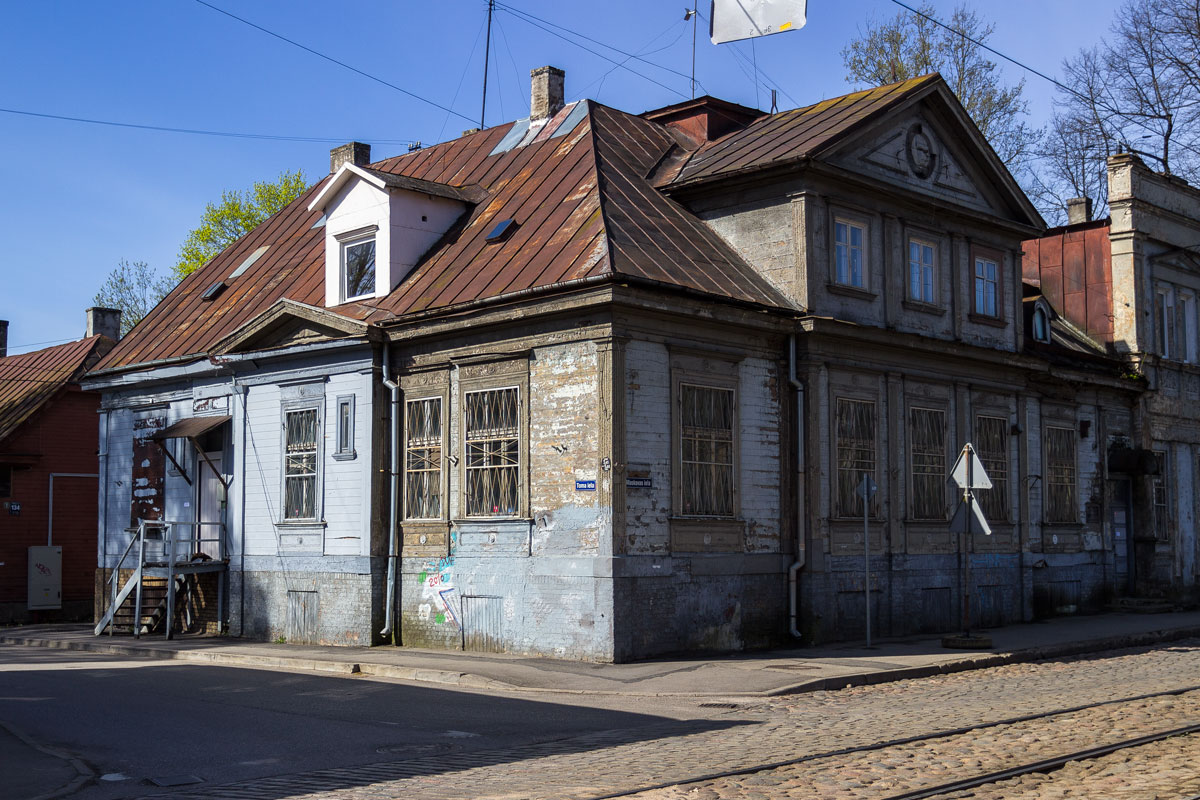
Modern shop windows spoil this historical beauty.
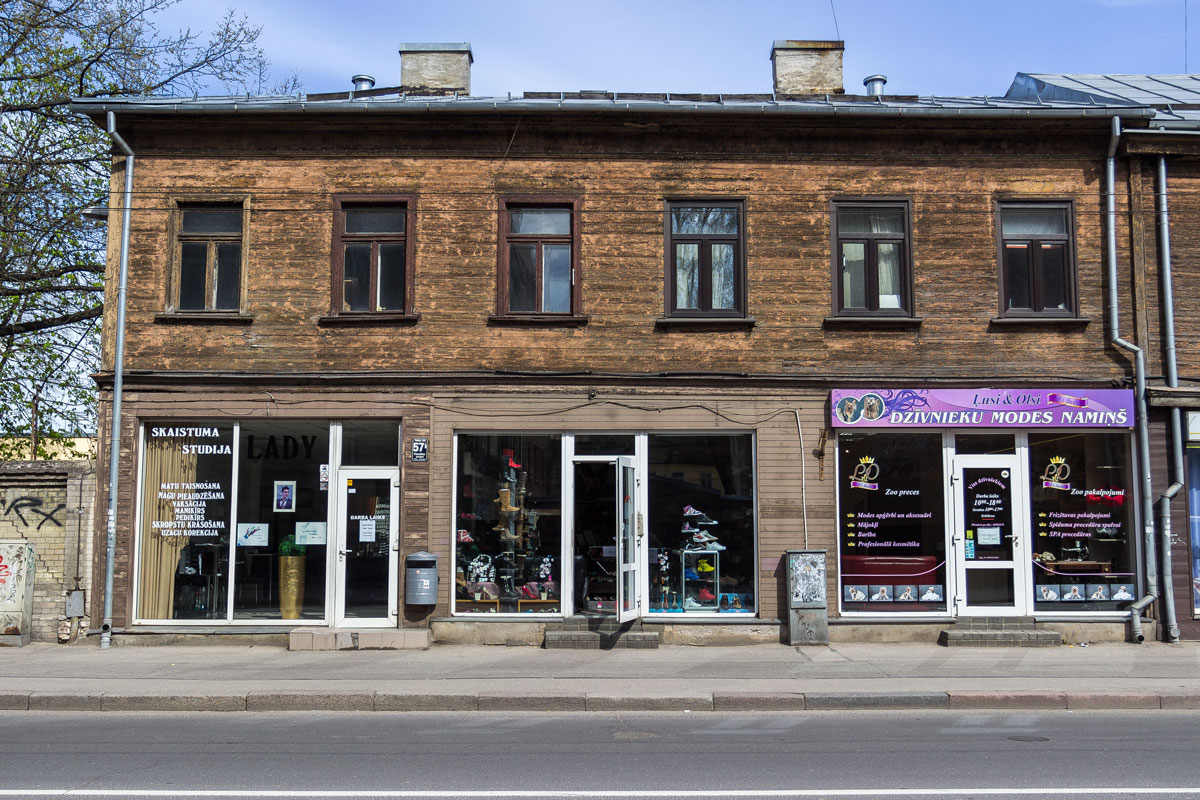
A lot of such architecture can be found somewhere in the vicinity of the Moscow District of Riga. The district can be easily identified by a huge, unsightly Stalinist high-rise that protrudes on the horizon.

By the way, the district itself is surprisingly unpleasant in terms of urban development.

Of course, not the entire district remained wooden. Many wooden houses coexist with stone ones.

Sometimes the street consists of additions and renovations, blended into a unique eclectic style.
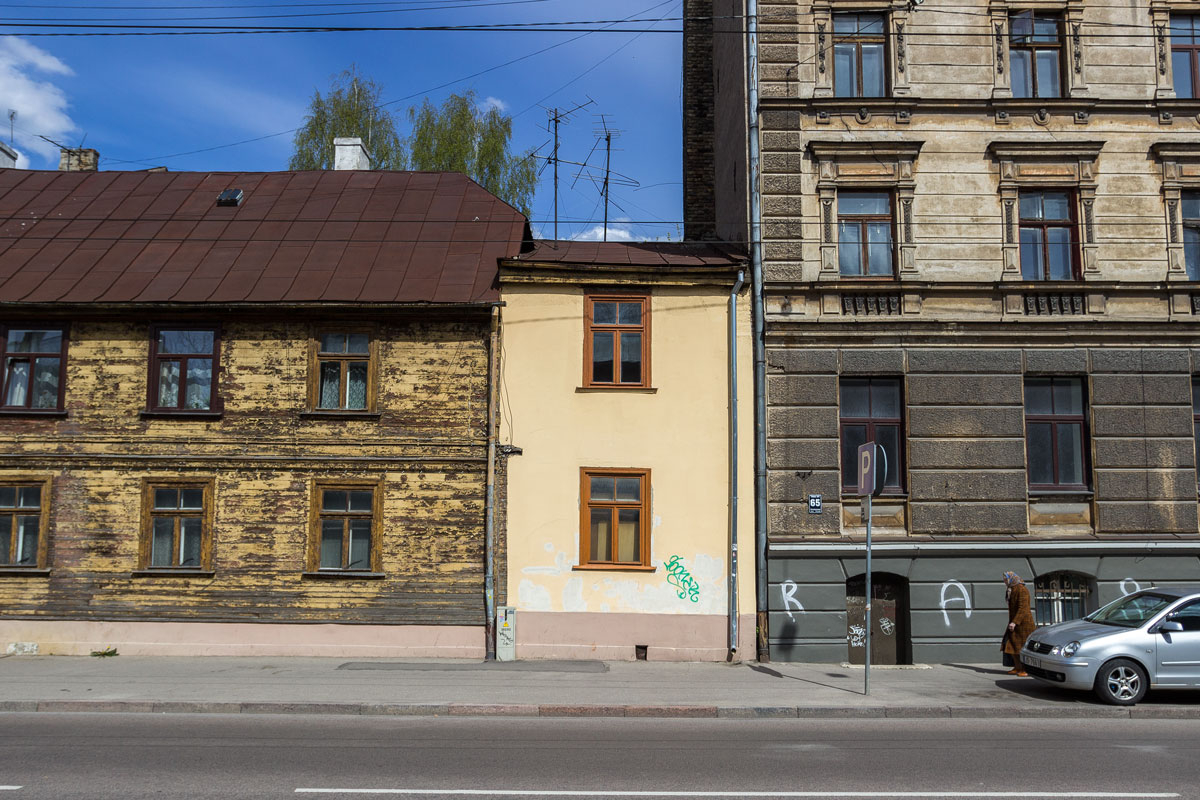
Stone houses are equally beautiful. First and foremost, due to their simplicity and antiquity.

The Moskovsky district is certainly very neglected.
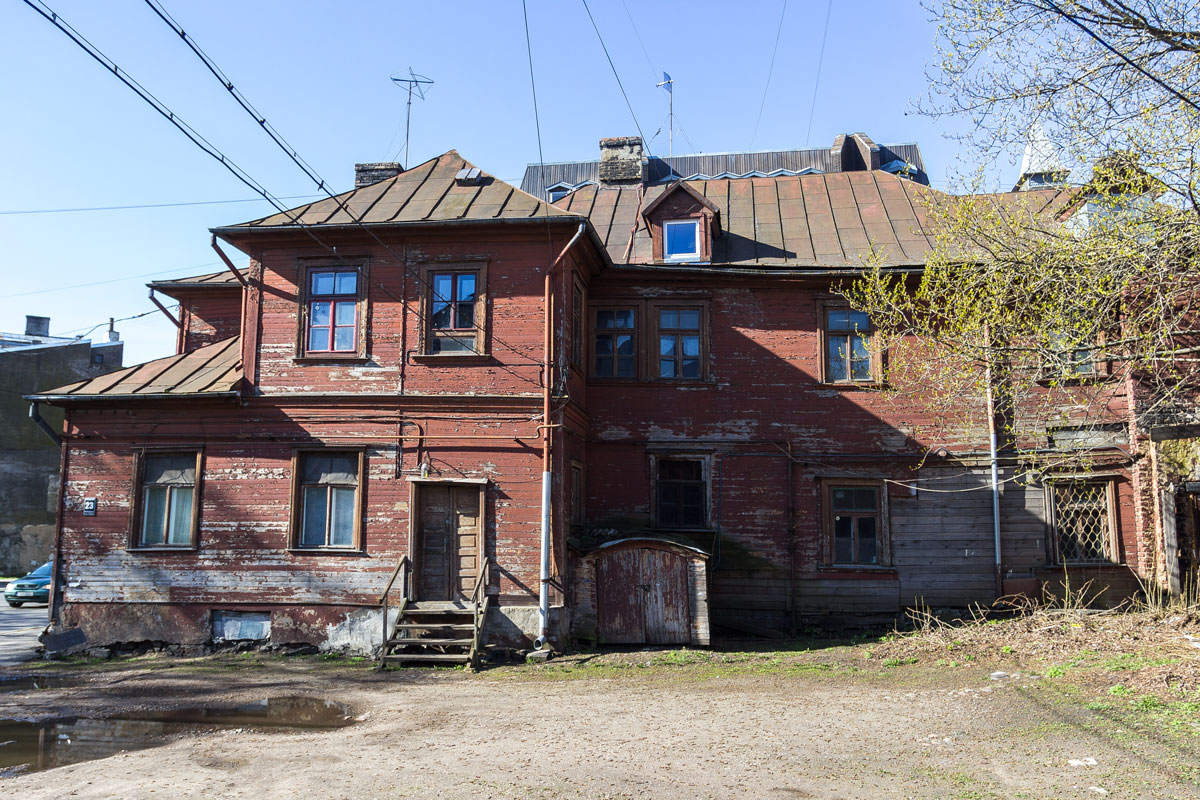
Here everything is cluttered with cars, and the houses are nothing special.
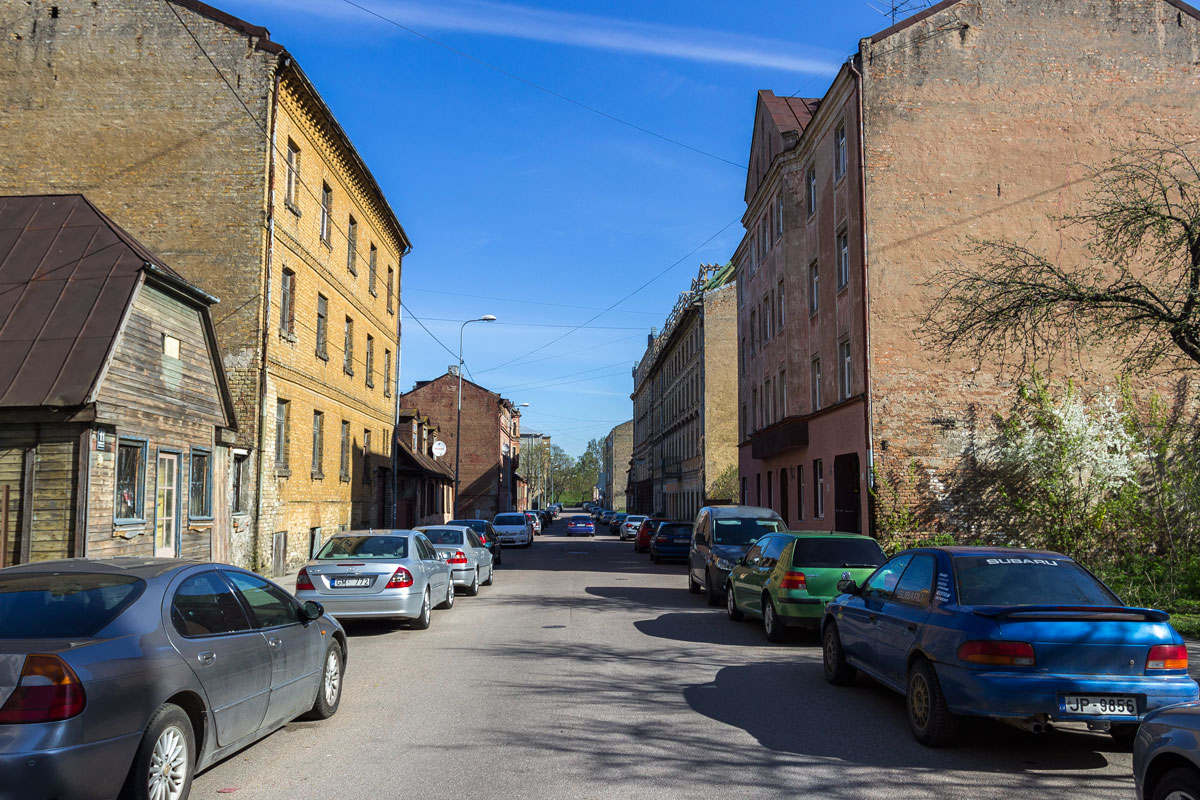
Sometimes it feels like it’s turning into a village. And yet, the historical center is just 10 minutes away from here!

Devastation.
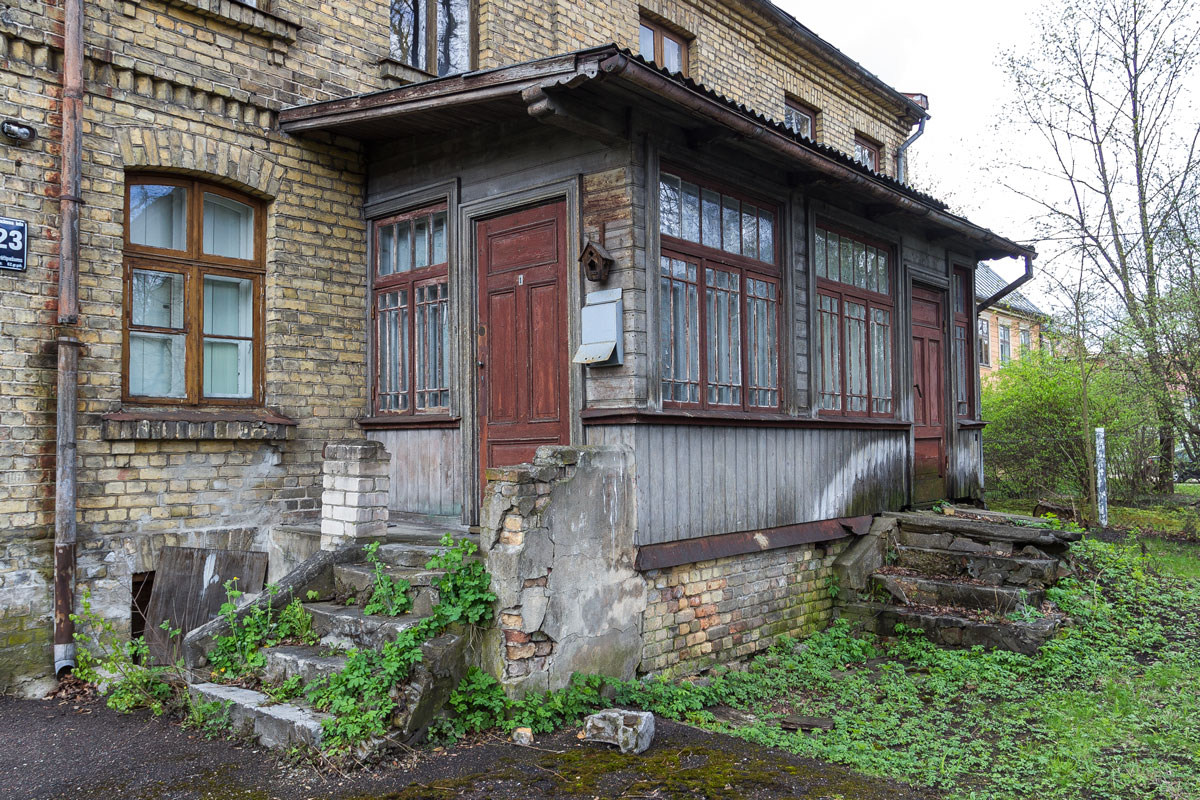
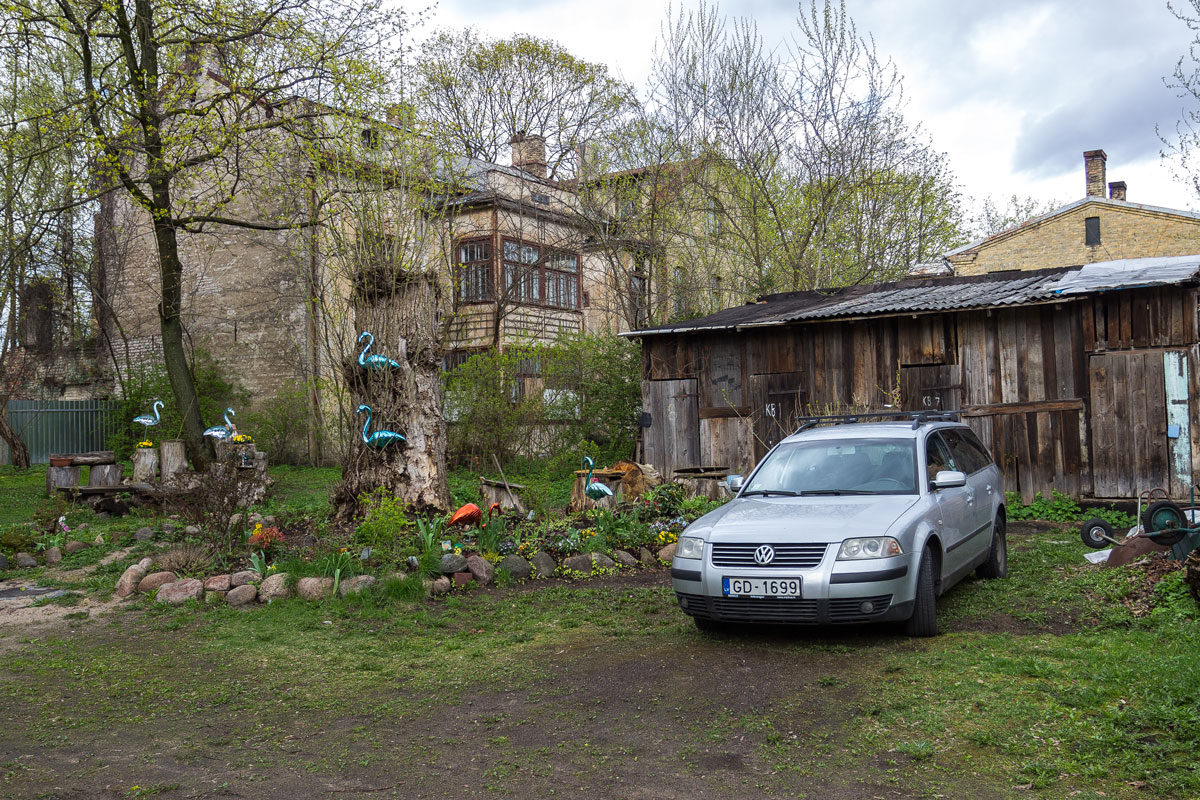
Wastelands, dirt.
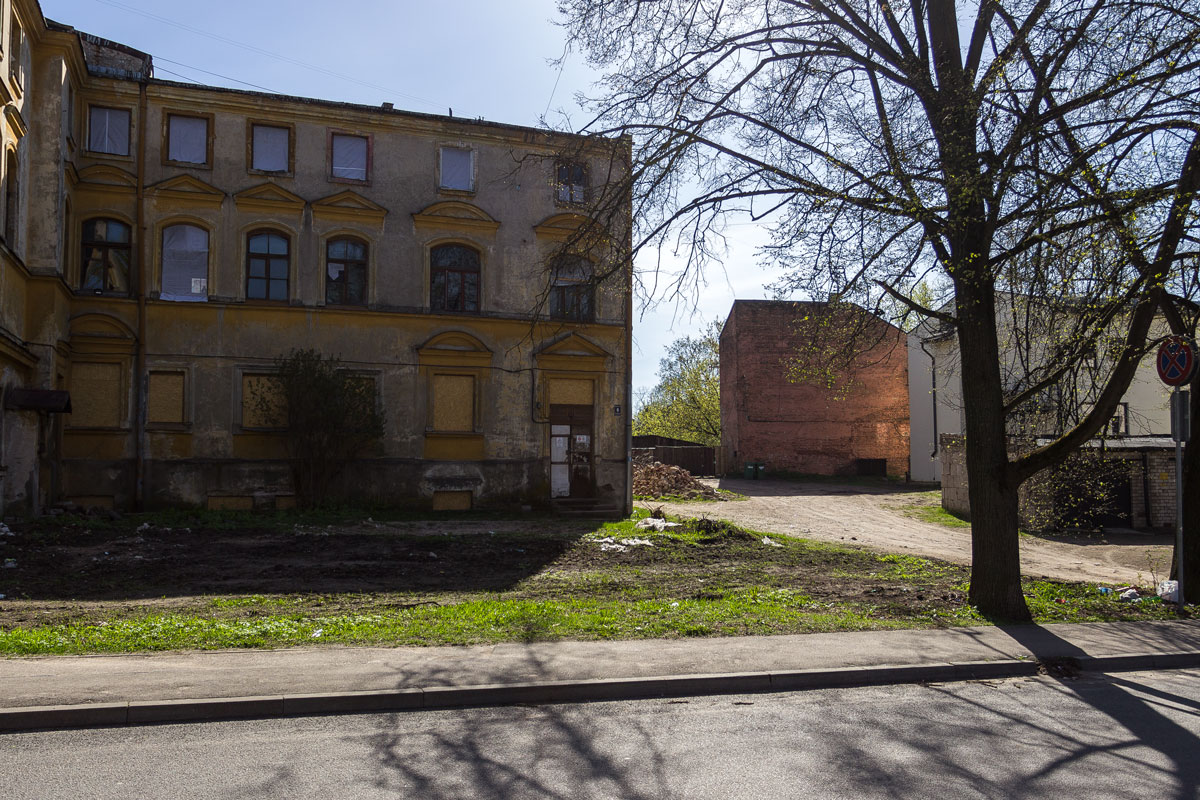
Rural courtyards.

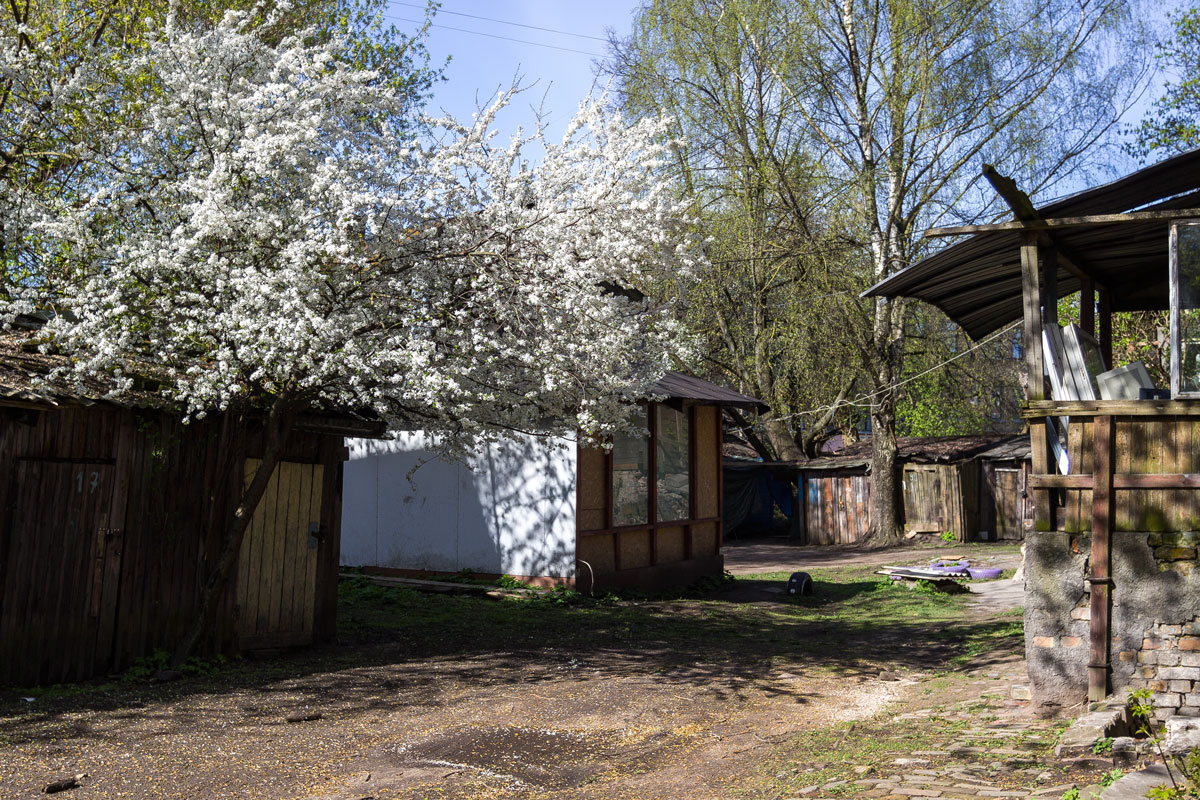
Puddles.
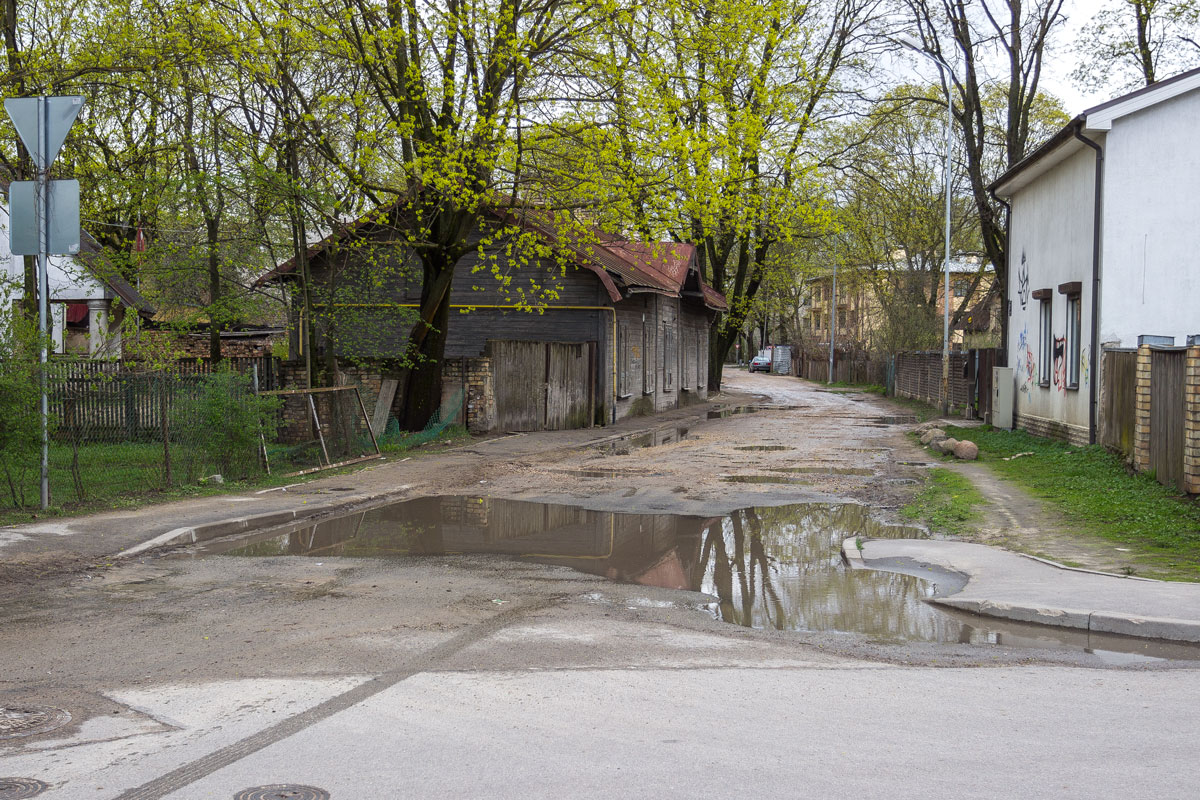
Dusty streets. It’s the end of April, in a few weeks the trees will stop looking so bare.
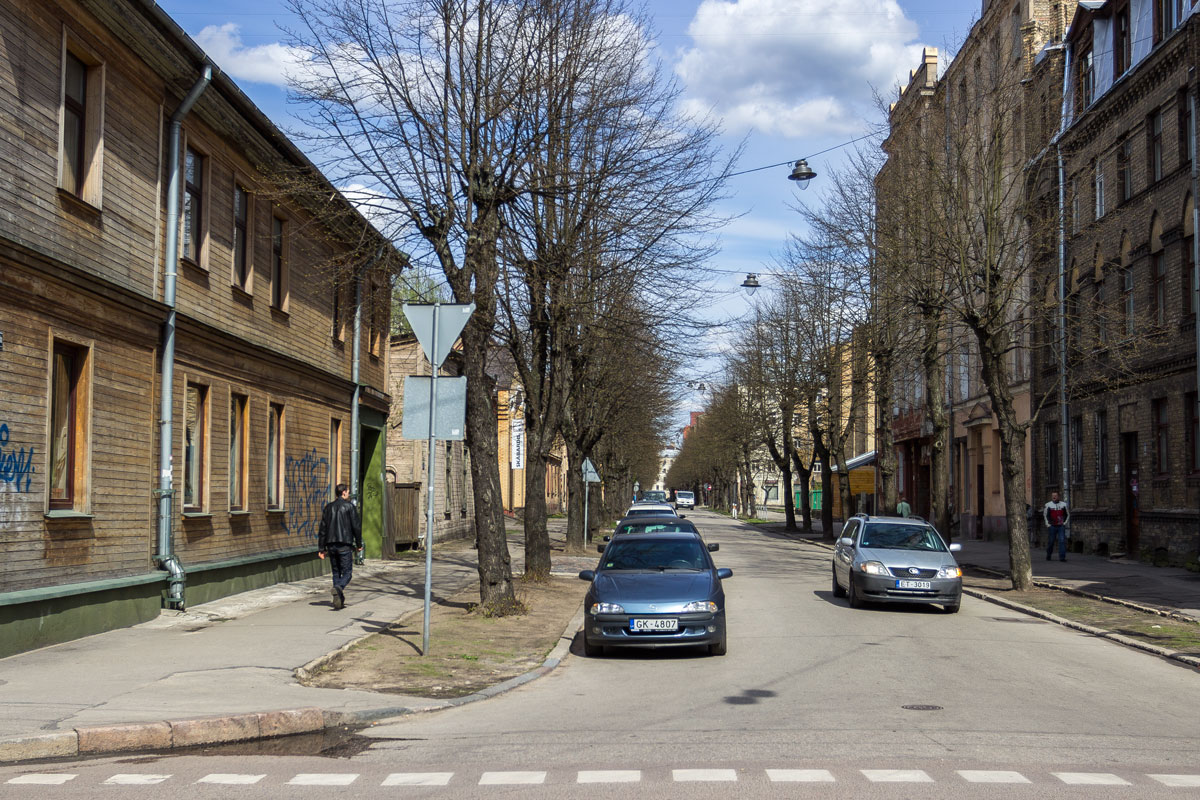
But the car junkyard outside the windows won’t disappear in spring or autumn.
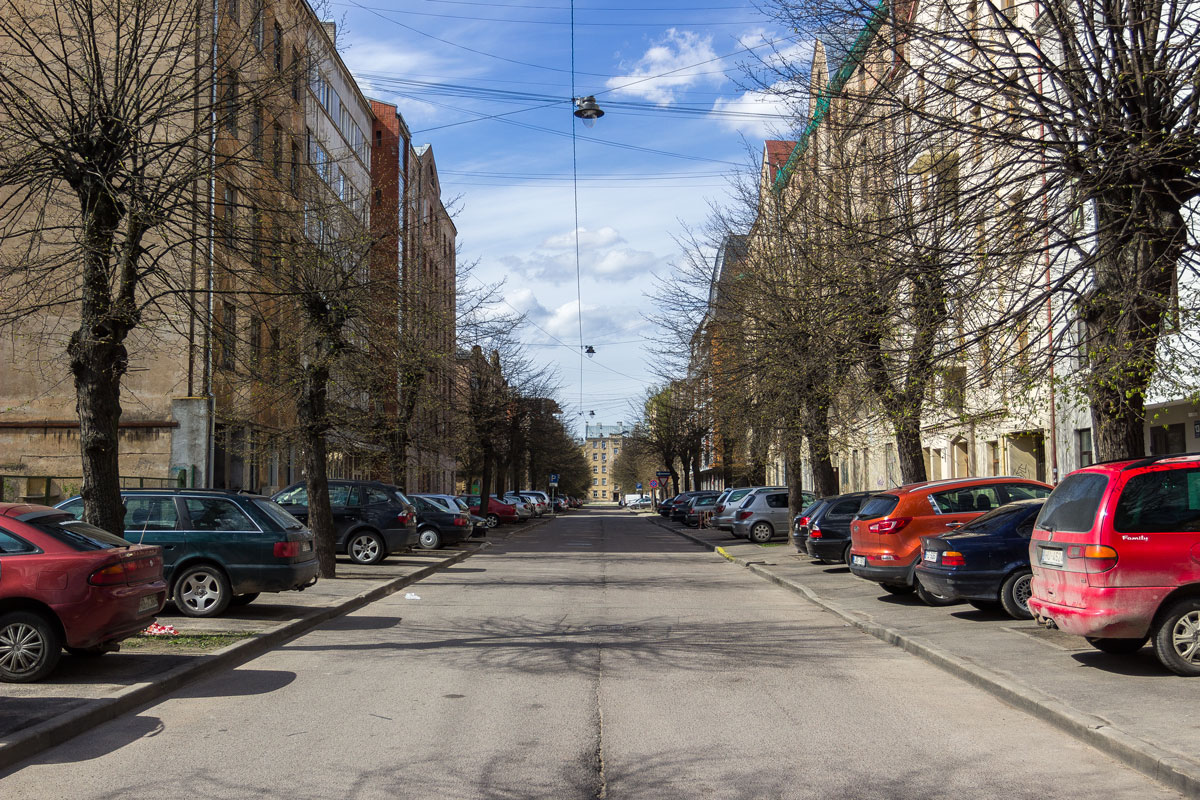
Let’s take a look into the courtyard of one of the houses.

Let’s enter the entrance. Inside, it looks even worse than outside. Terribly dilapidated and cold entrance.

Here’s another one just like it.

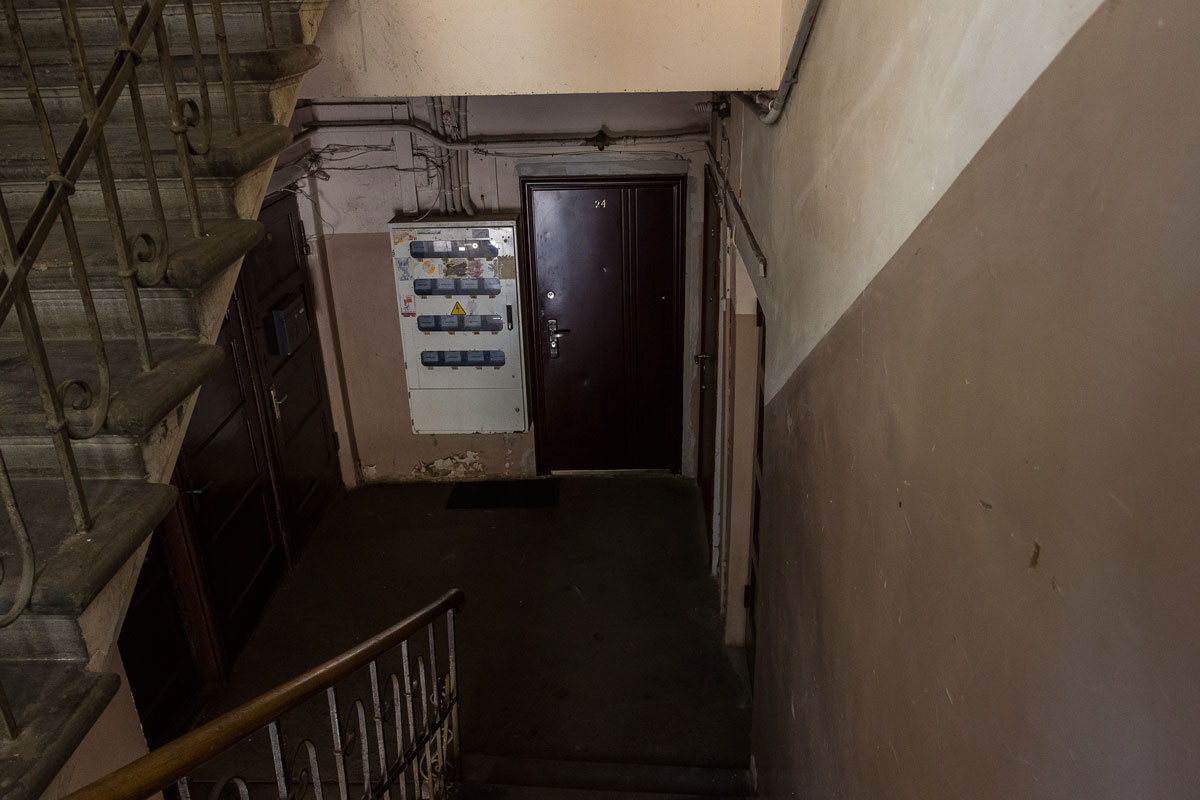
When I was leaving the entrance with my camera, an elderly woman approached me and said something in Latvian. Upon learning that I was from Russia, she switched to Russian language:
“Why are you taking pictures of this? It’s all so unattractive,” her voice was filled with pity, making me feel awkward.
“Oh, it’s nothing really. Such places exist everywhere, but overall Riga is a very beautiful city.”
“Riga is very poor... They’ve only improved the center a little bit, but here you see what devastation. People park wherever they want, some gangsters bought up all the real estate. And we live very poorly. I used to live and work as a deputy in Moscow. Now I have a pension of three hundred euros, but one-third goes right away because I have to pay for the apartment, house, and land...”
“You know, those are not bad funds compared to us. Our pensions are much smaller.”
“Listen... Latvia is a very small country. We simply have nothing, only sand, forests, and the sea—nothing else, no valuable minerals or resources. Now they’re improving Jurmala, Russians are buying up land, tourists come. But compare us to Russia? You are a huge country, the largest in the world. You have everything: oil, gas, timber, electricity, people, space. More than America! If you wanted to, you could feed the whole world. Yet you’re telling me that your pensions are smaller...”
Residential areas
Let’s walk through the residential areas. This is how the apartment buildings near the center look like.
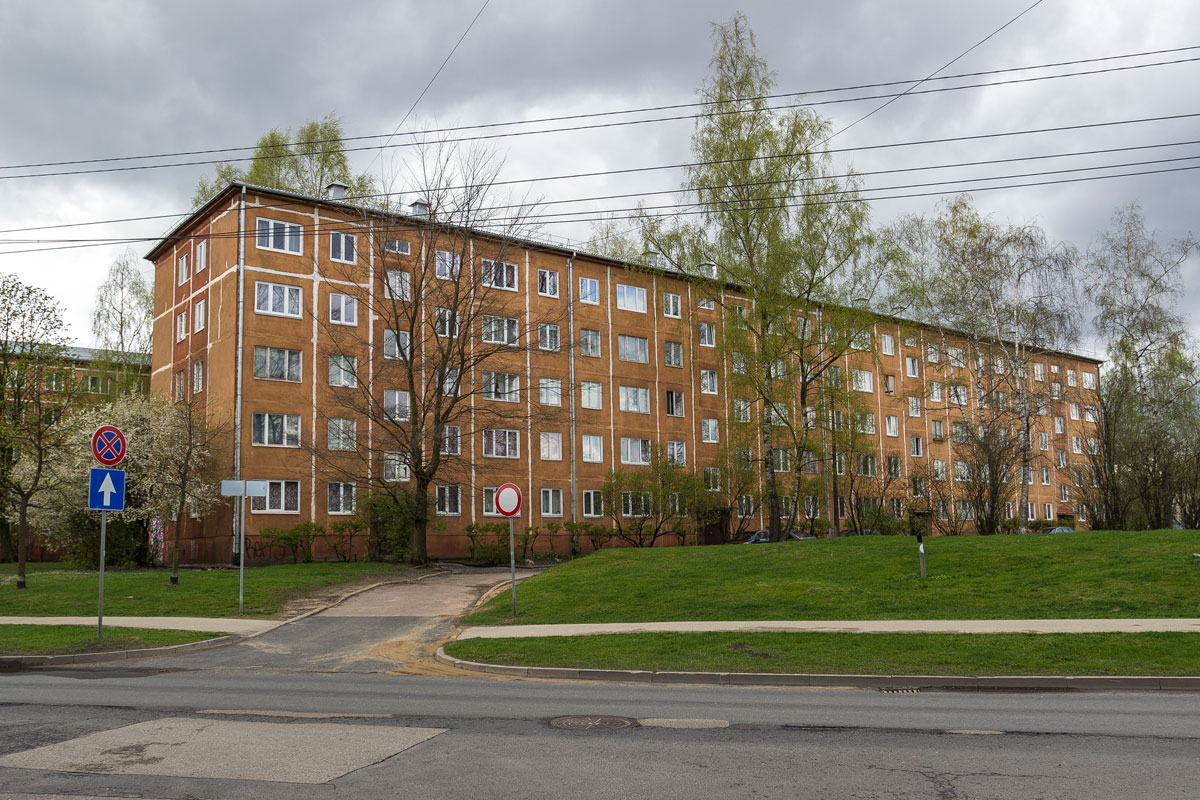
The courtyard is empty. There is no mud, no garbage, but there is also no landscaping. Just bare grass and cracked asphalt. There aren’t even any playgrounds for children.
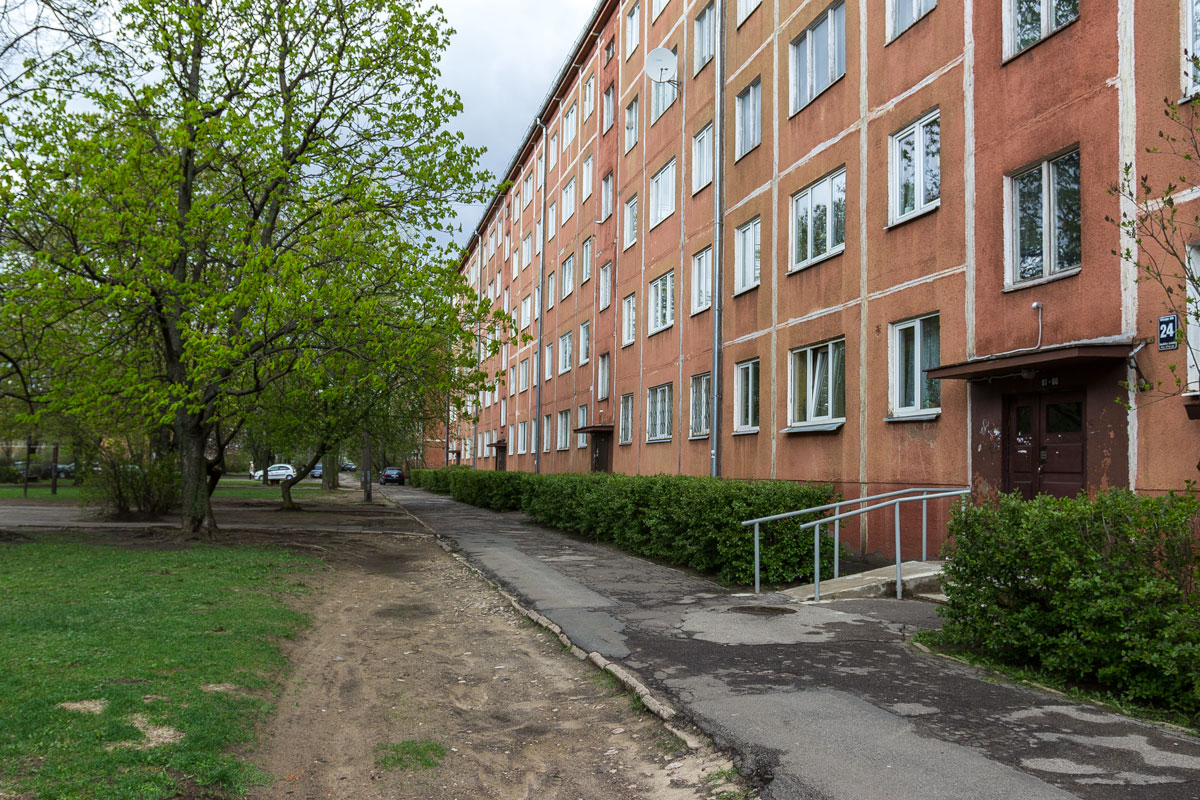
The entrance. They somewhat equipped a ramp for disabled individuals. It’s better than nothing.

But all the windows are plastic.

In the north of Riga, brick six-story buildings were found, very similar to Moscow’s Khrushchev-era housing.

Here it’s even worse.

The entrance is on a huge pedestal, making it more difficult for the elderly to reach home. And a brilliant solution: a sewage manhole in the middle of the stairs! However, these issues are not specific to Latvia but rather to the Soviet era — these buildings were clearly constructed in the 1960s.
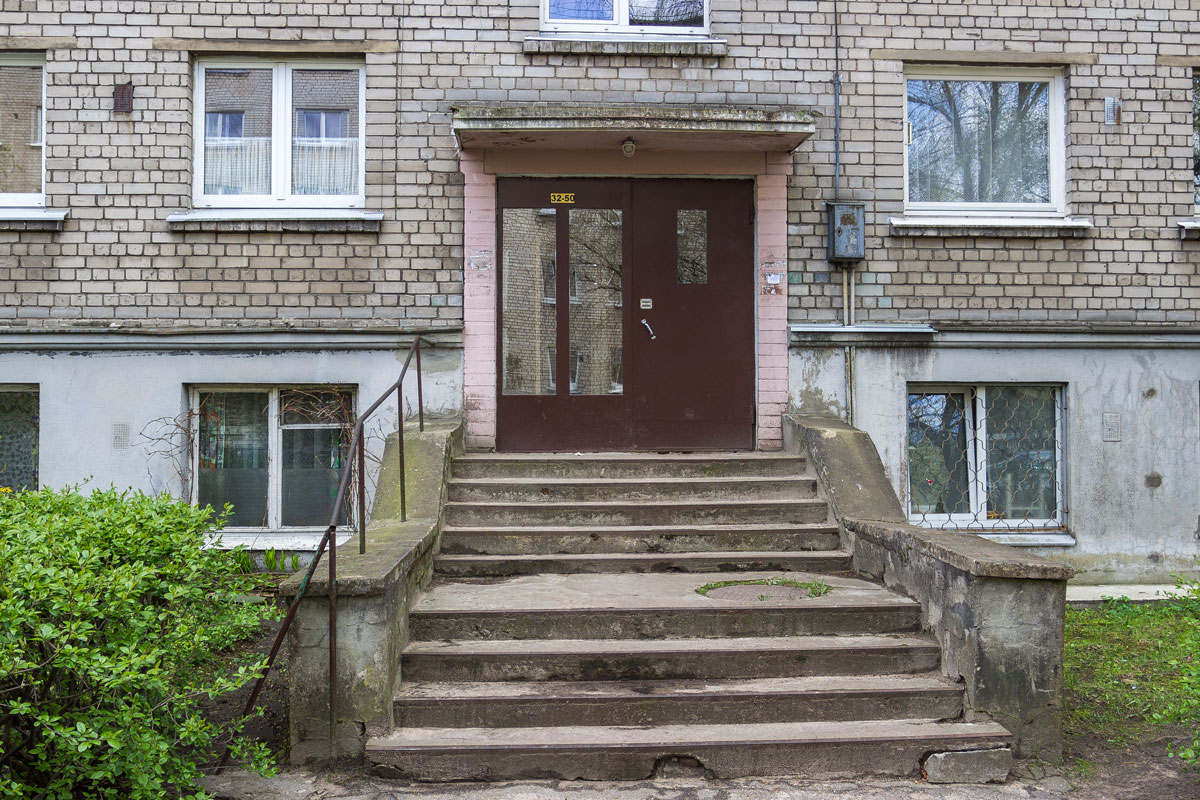
The roads are broken, puddles everywhere. Beloved Russian flowerbeds made from old tires.
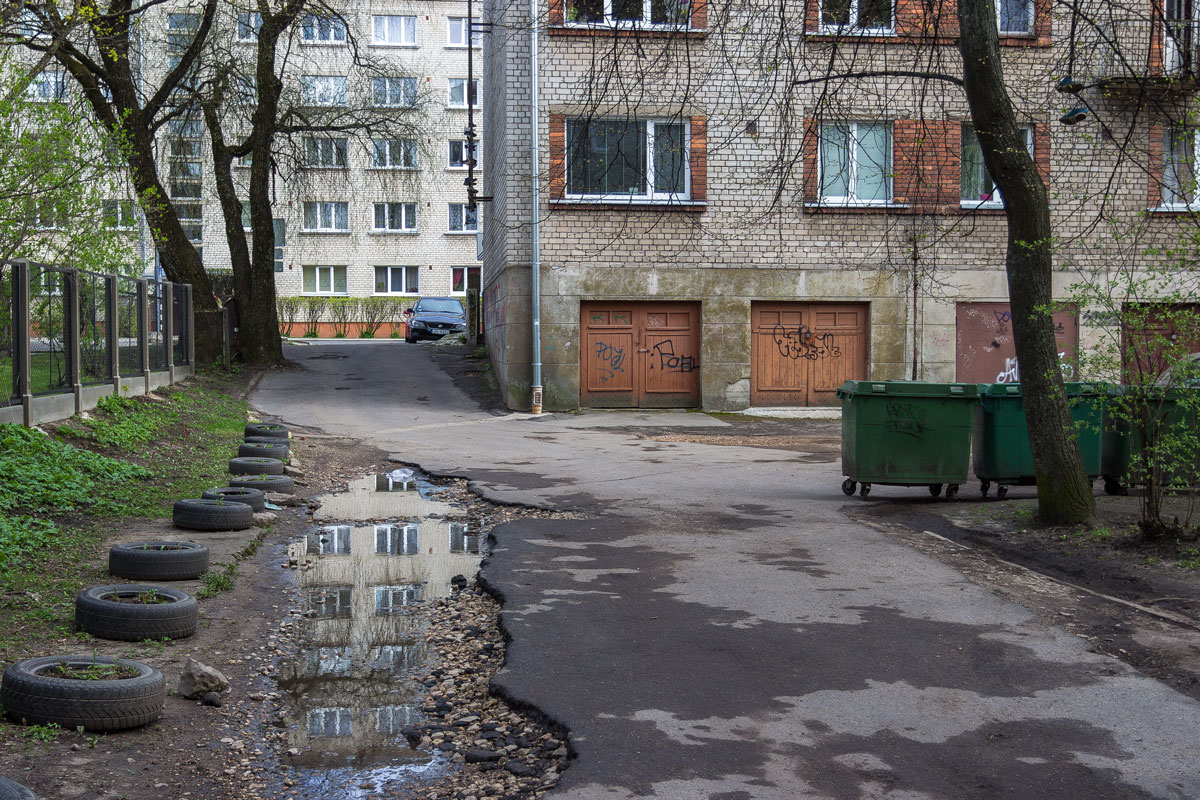
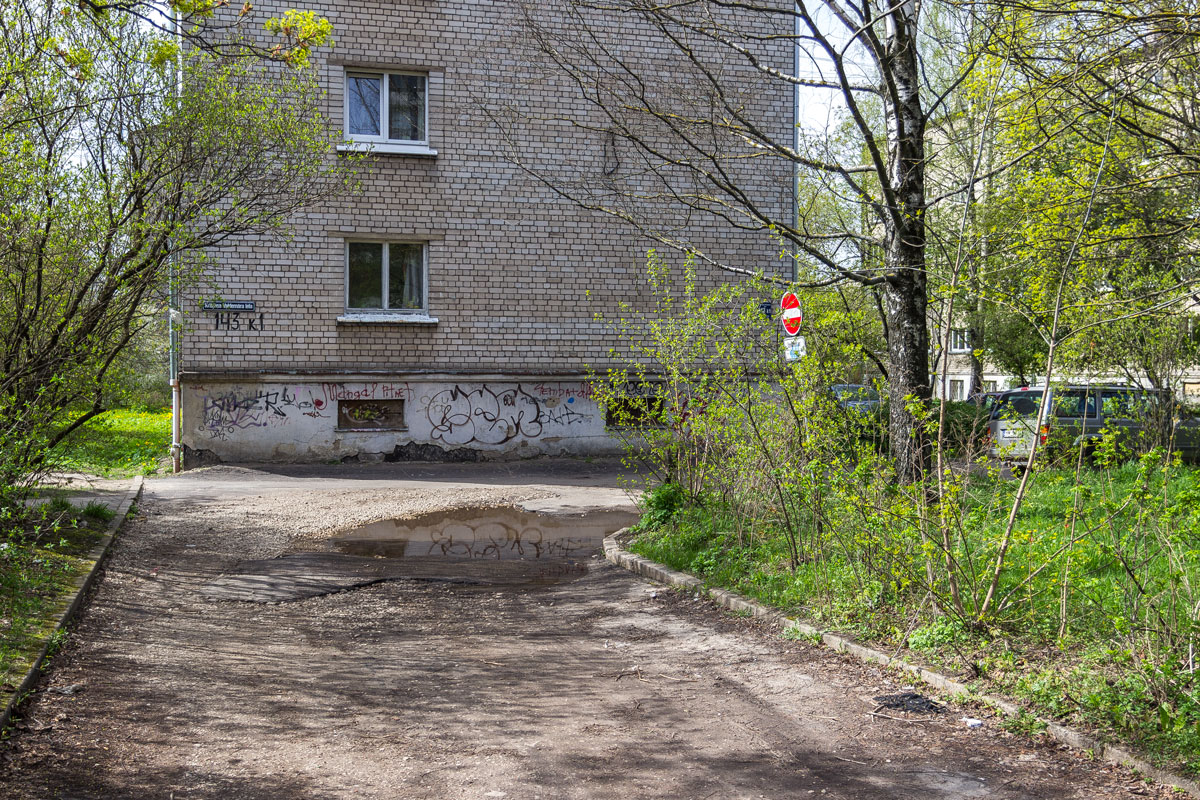
Instead of a playground, there is a wild forest.
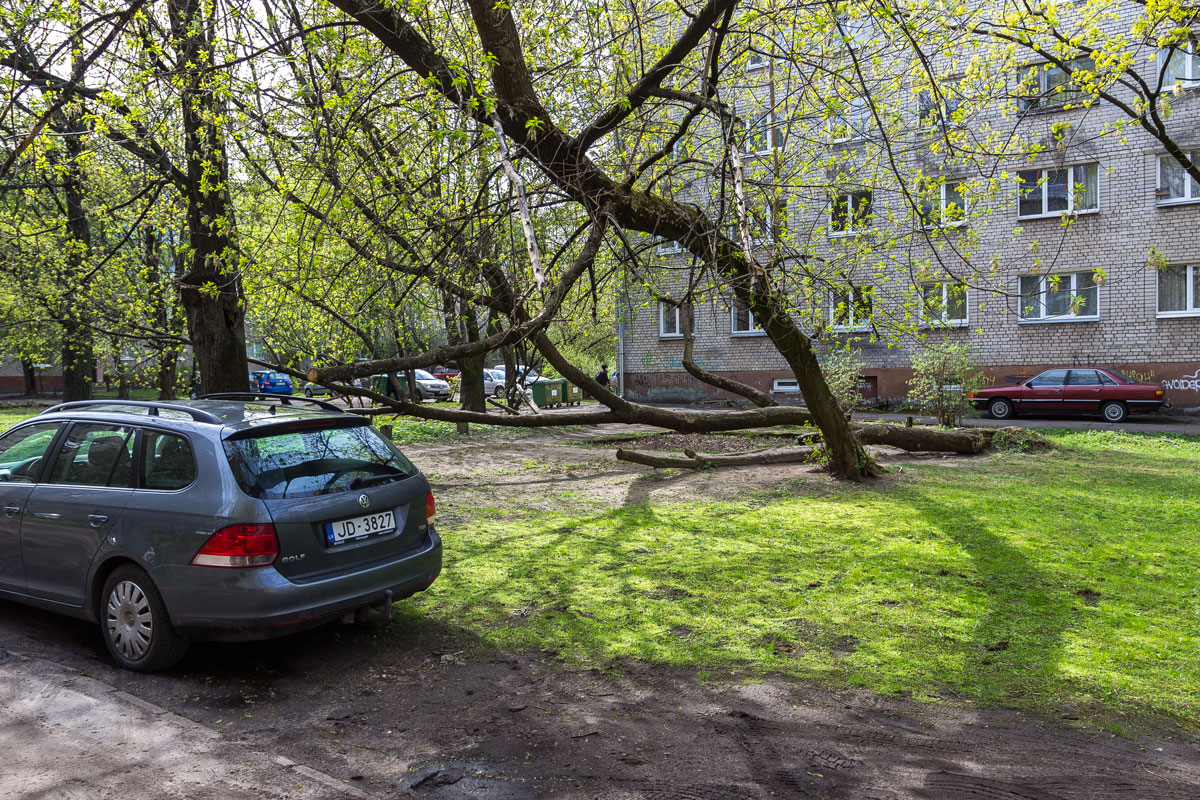
Parking under the windows, rusty scraps of metal in the courtyard.
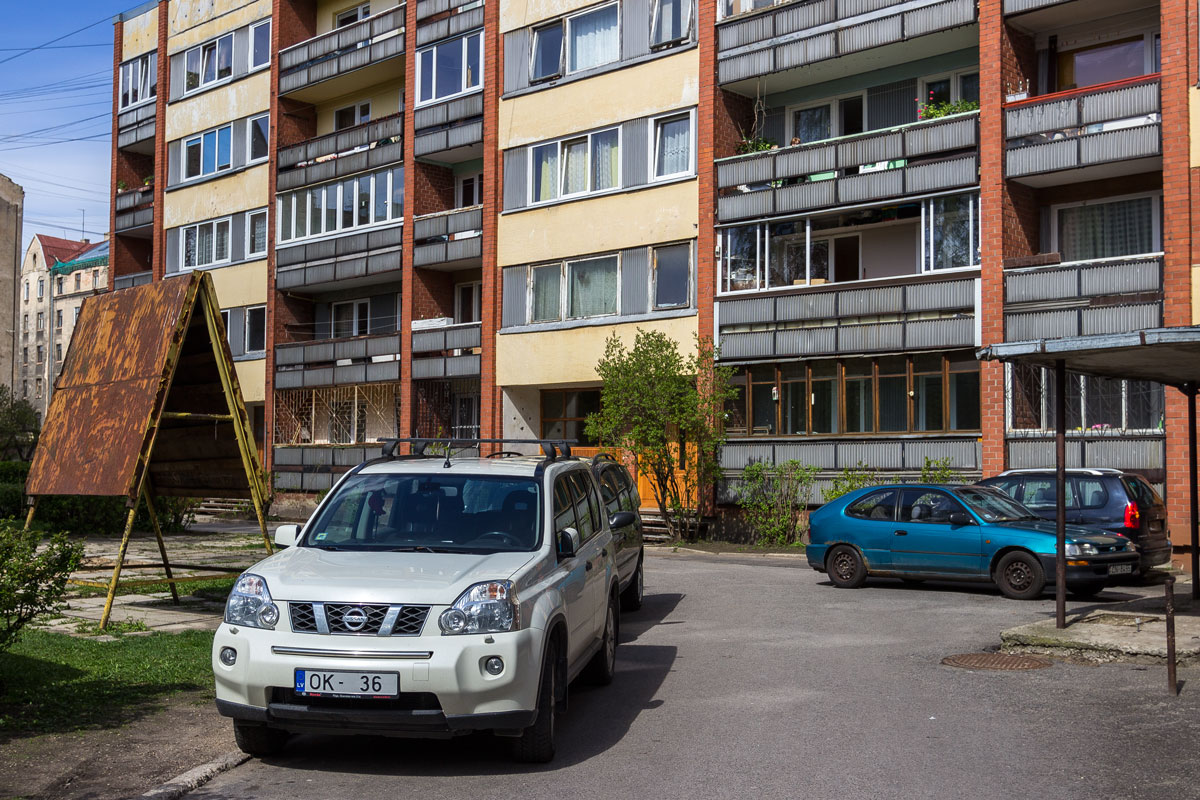
Let’s move to the outskirts of the city. Here, the buildings are already ten stories high.

The entrance door can easily be mistaken for the garbage chute door.

The buildings turned out to be long, and it takes a while to go around them. That’s why they decided to create passageways through the walls.
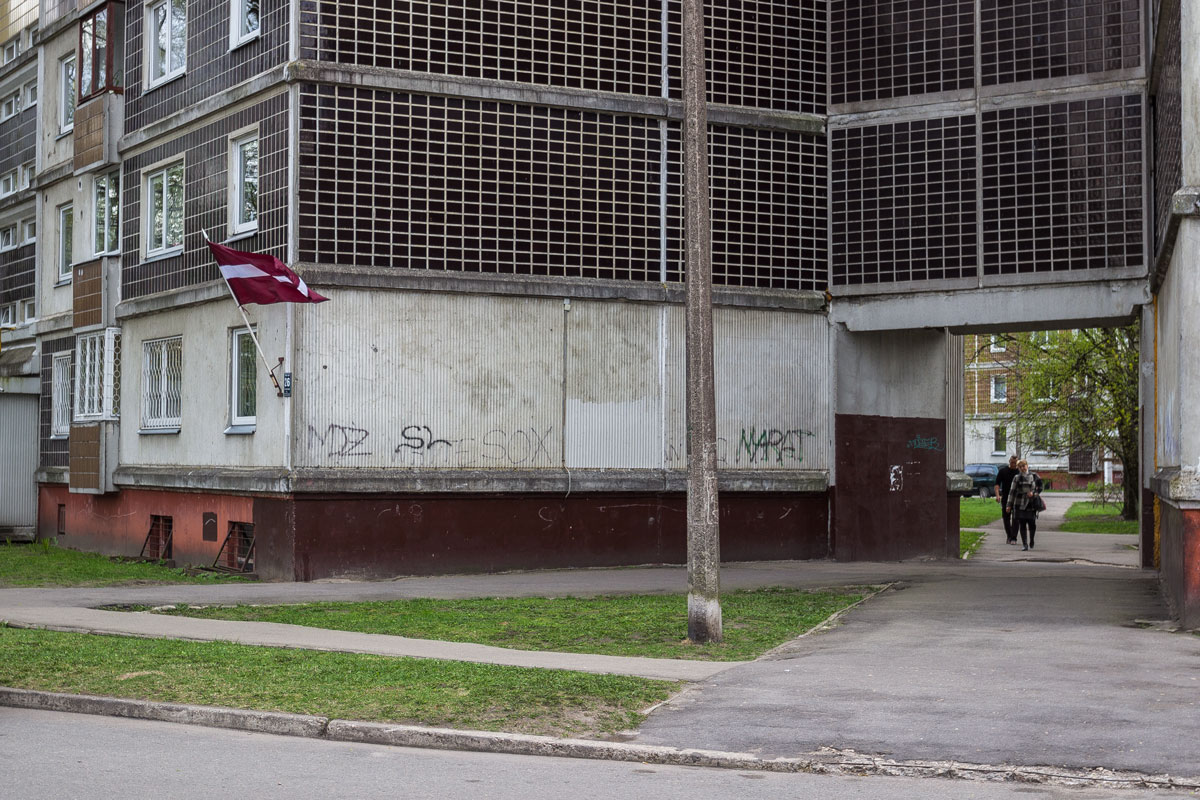
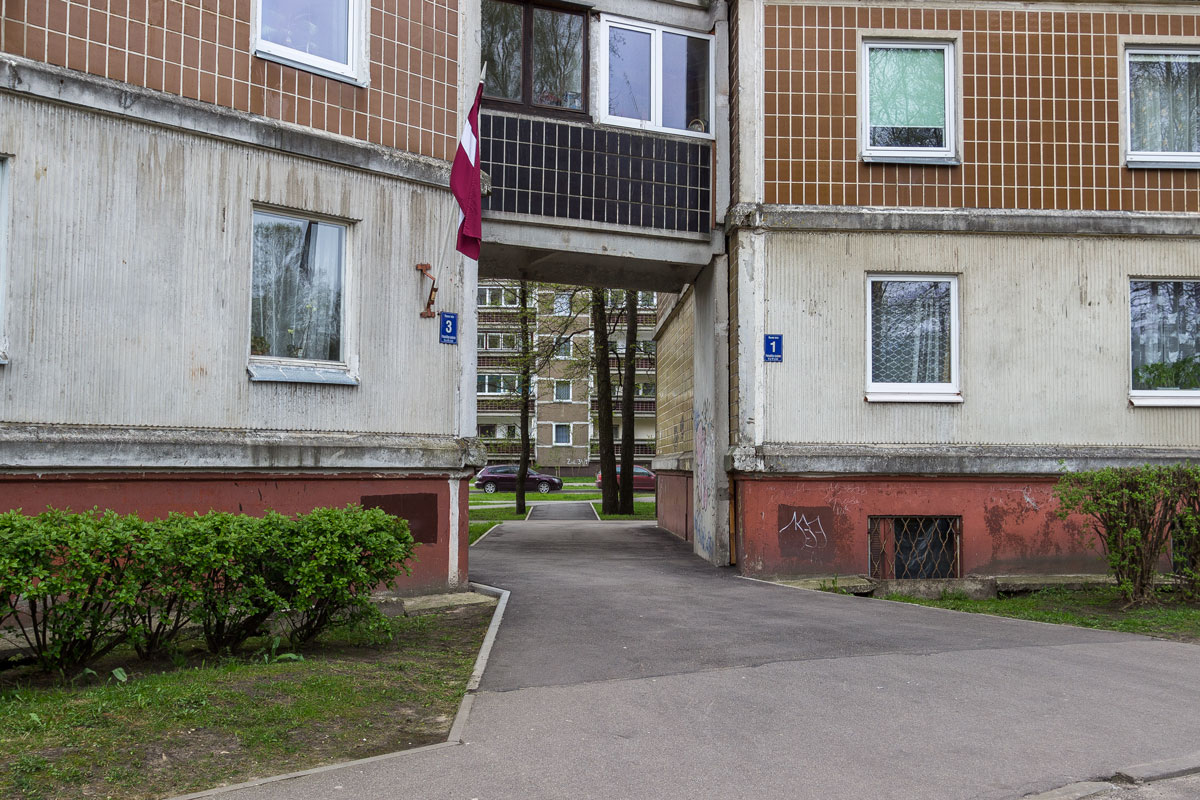
Of course, everything is cluttered with cars.
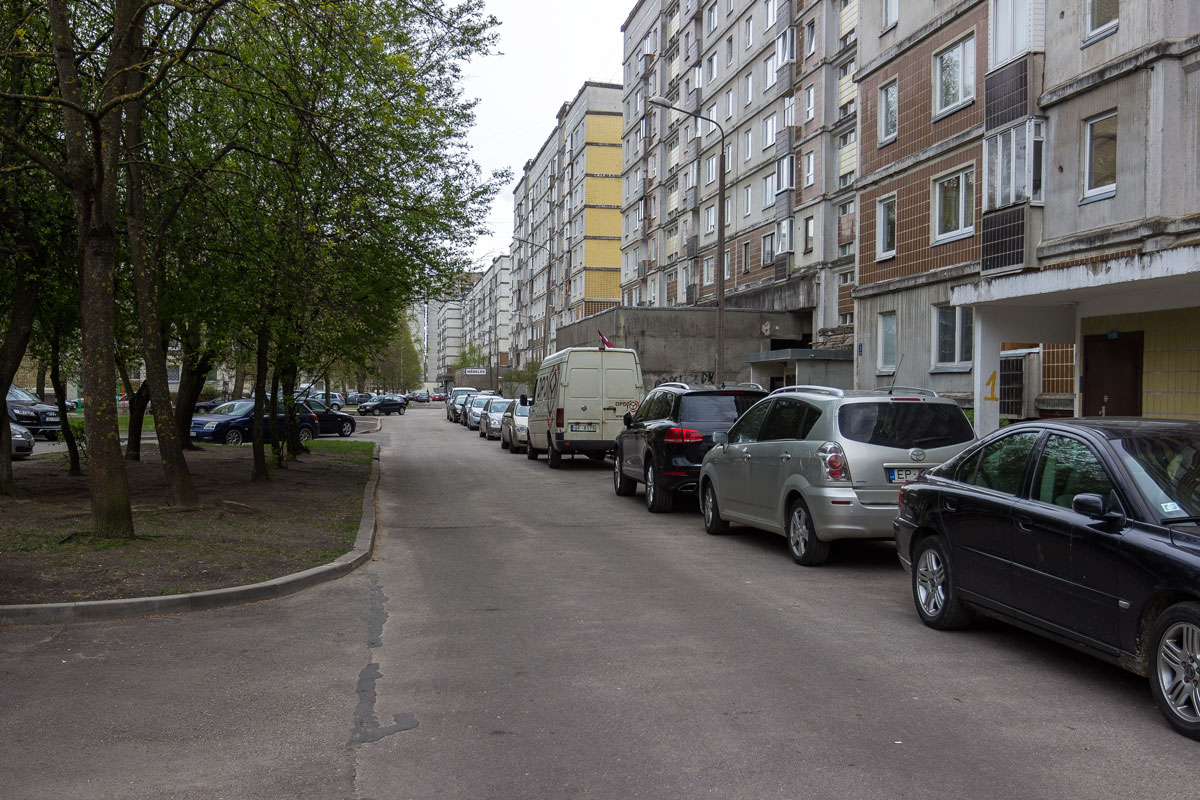
Of course, there are no playgrounds in sight. Wild overgrowth, bare grass. At least there are no fences.

Sadness.

Depression.

Hopelessness.
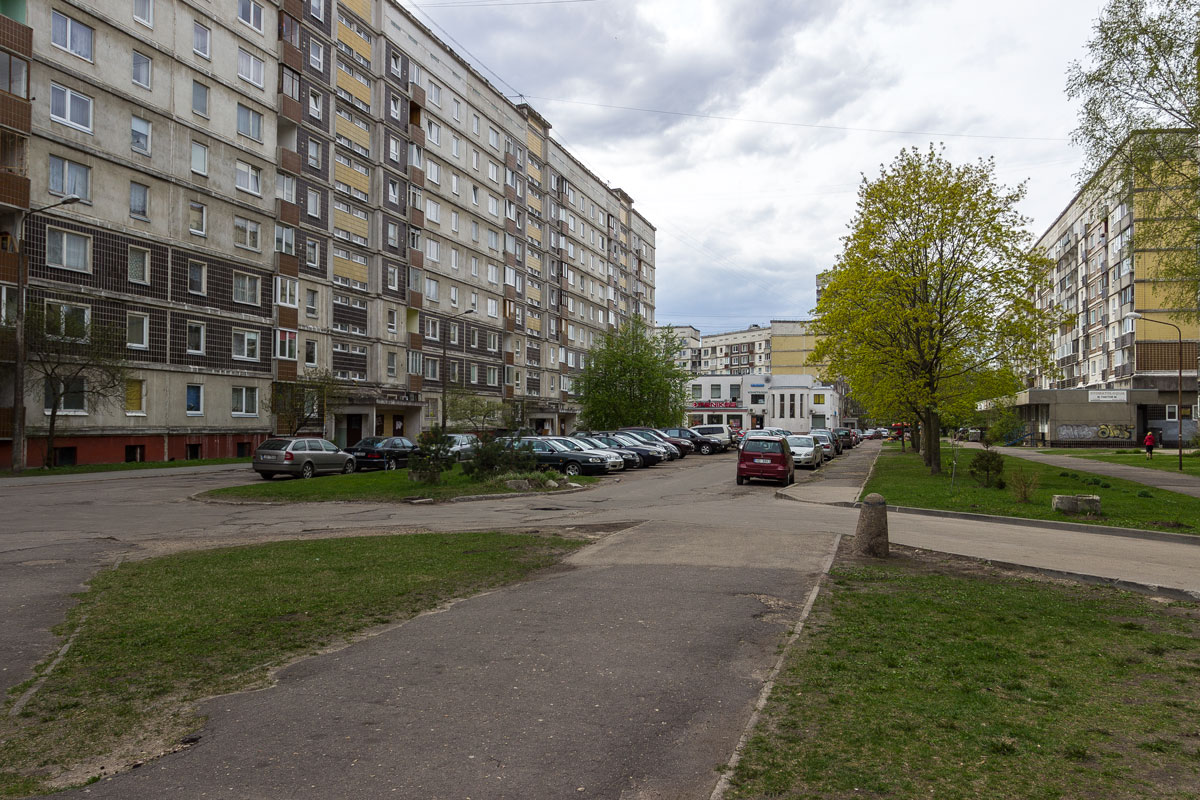
Alley between districts.
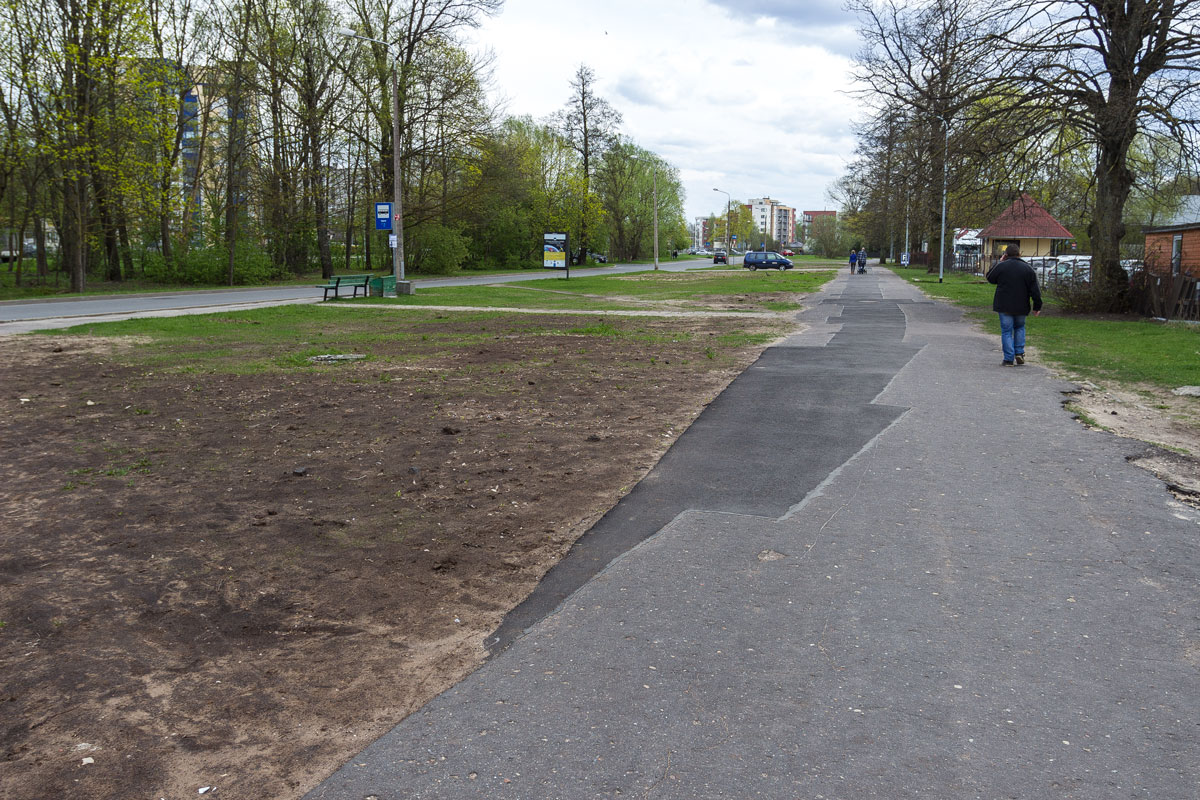
Sixteen-story buildings.
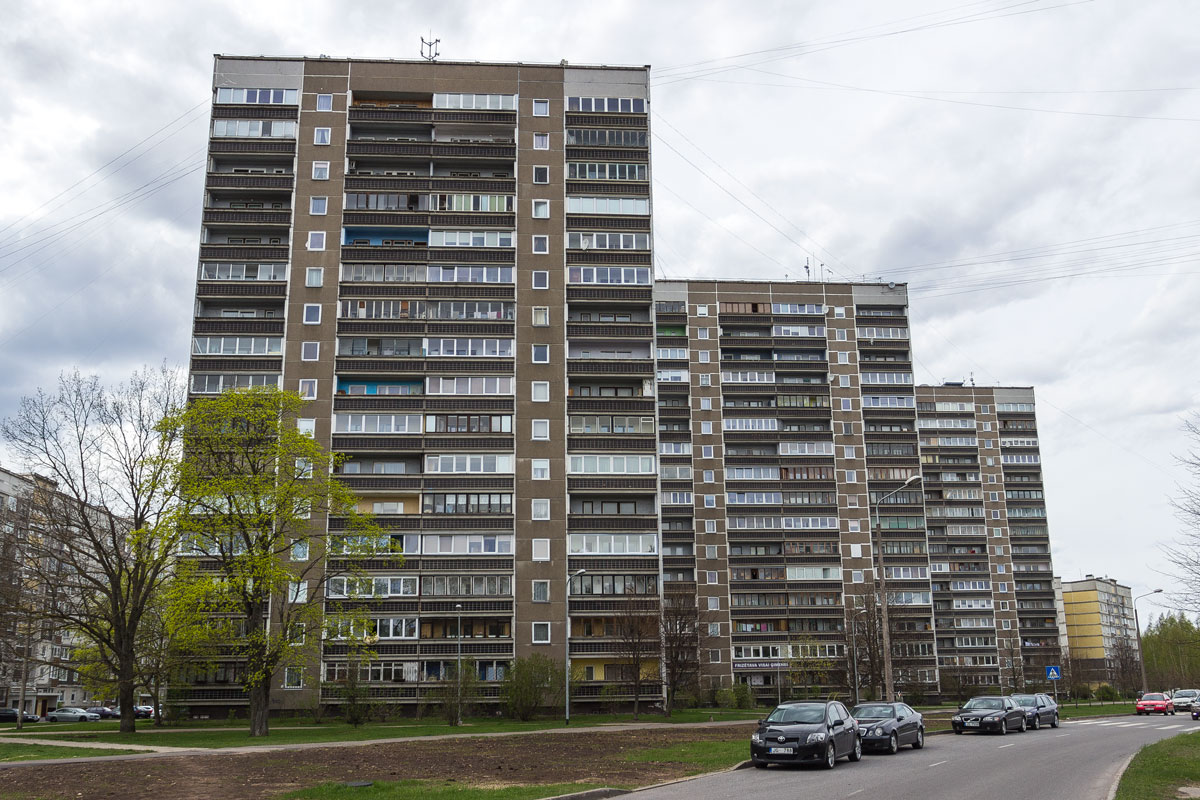
Shops are located on the ground floors of panel buildings. This is more of a positive aspect. After all, such establishments are better than plastic tents.

Unless they turn into such monsters.

School.

The sun came out, it became less depressing. Even a playground was found. One for several districts. Small, old.
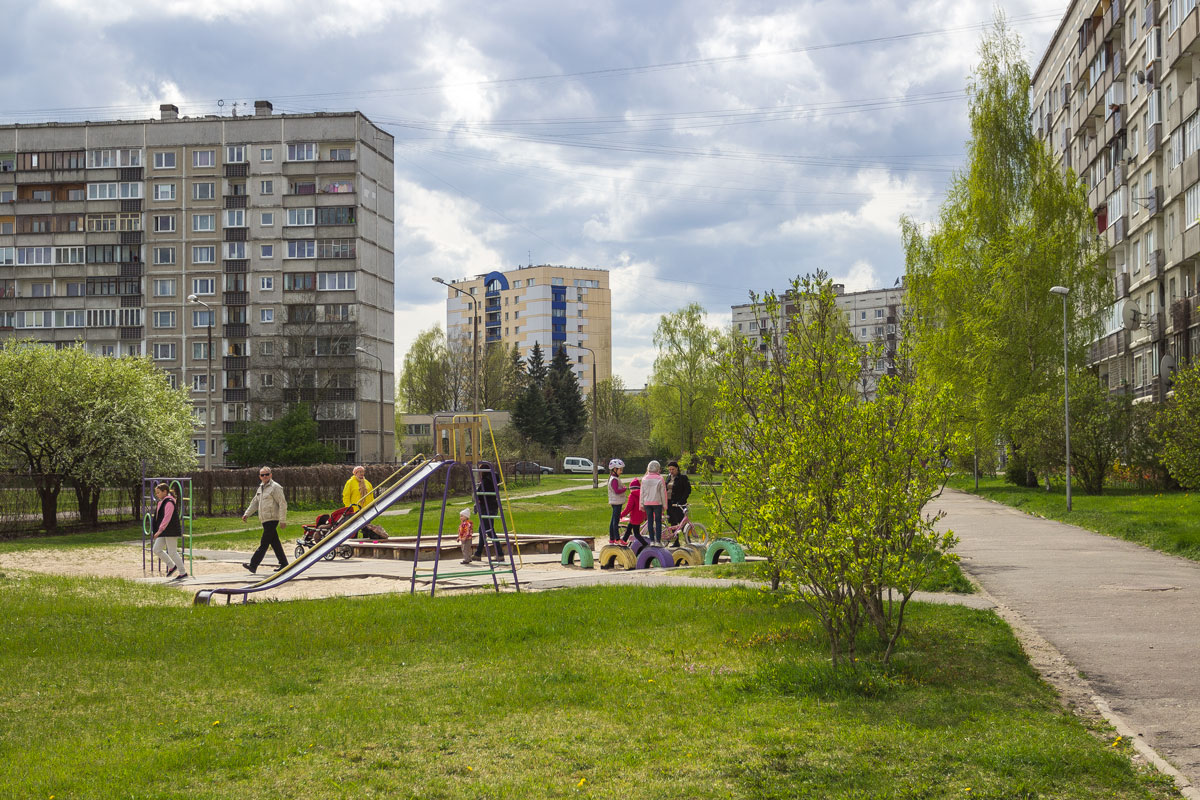
Sandbox, slide.

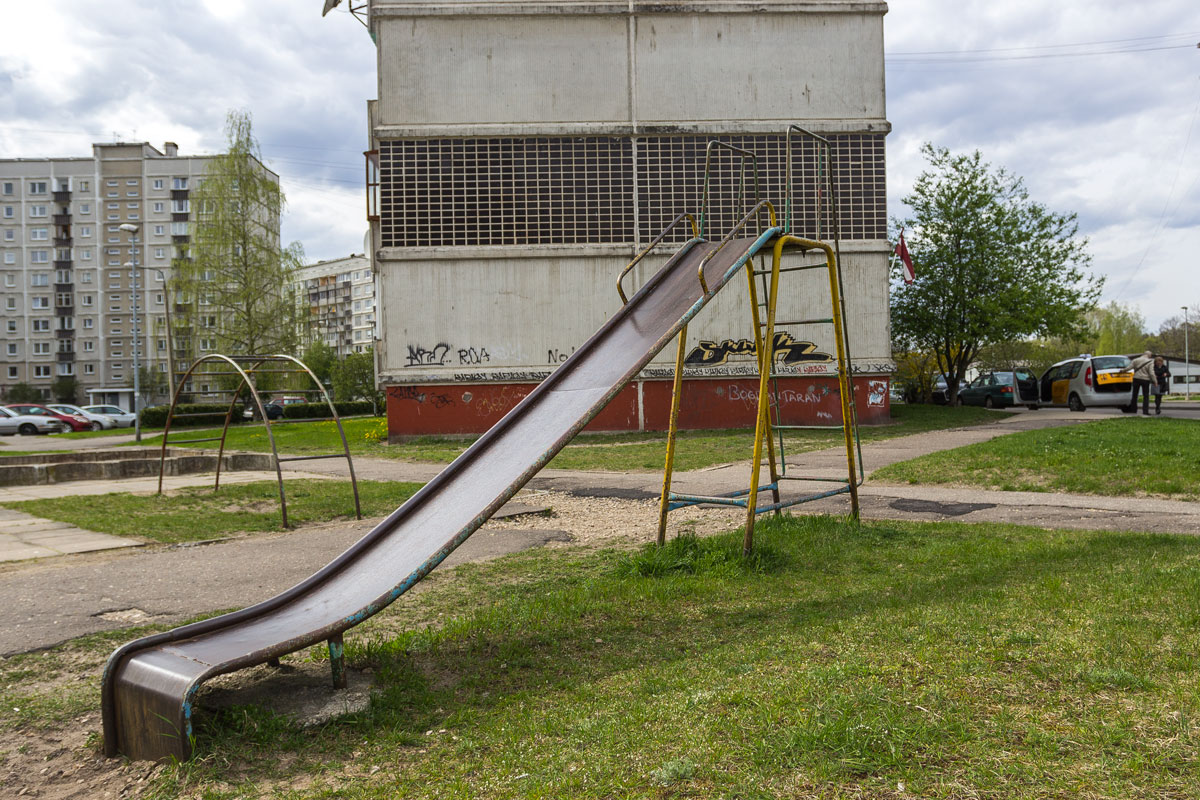
But then the clouds thickened again, and before my eyes appeared the scariest courtyard in my life. In the 90s, everything in Krasnogorsk looked something like this. Scary, dilapidated trees against the backdrop of high-rise buildings, some kind of catacombs in the middle of the courtyard, cars and lonely children. What catastrophe happened here? Where are all the people? Residential areas in Riga look like after an apocalypse.
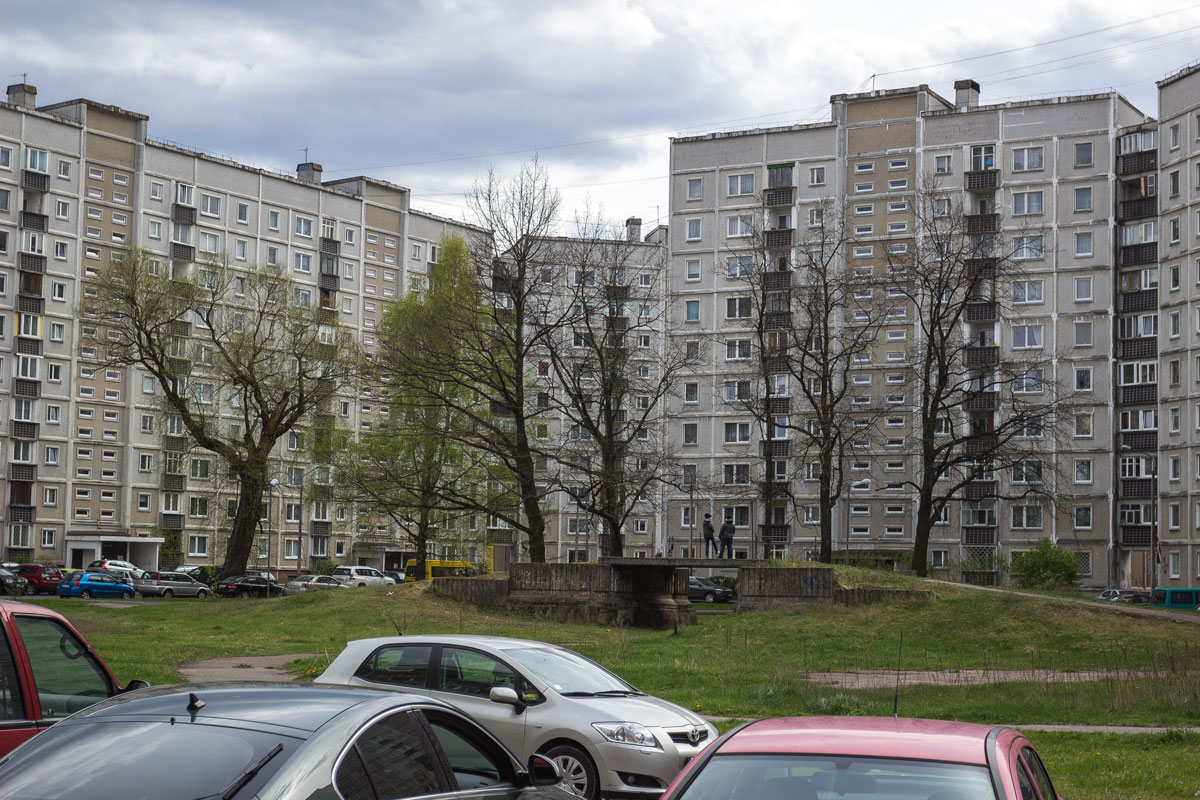
But each house is adorned with the Latvian flag. It’s not always like this, it’s only for May 1st — the day of spring celebration here after all.
